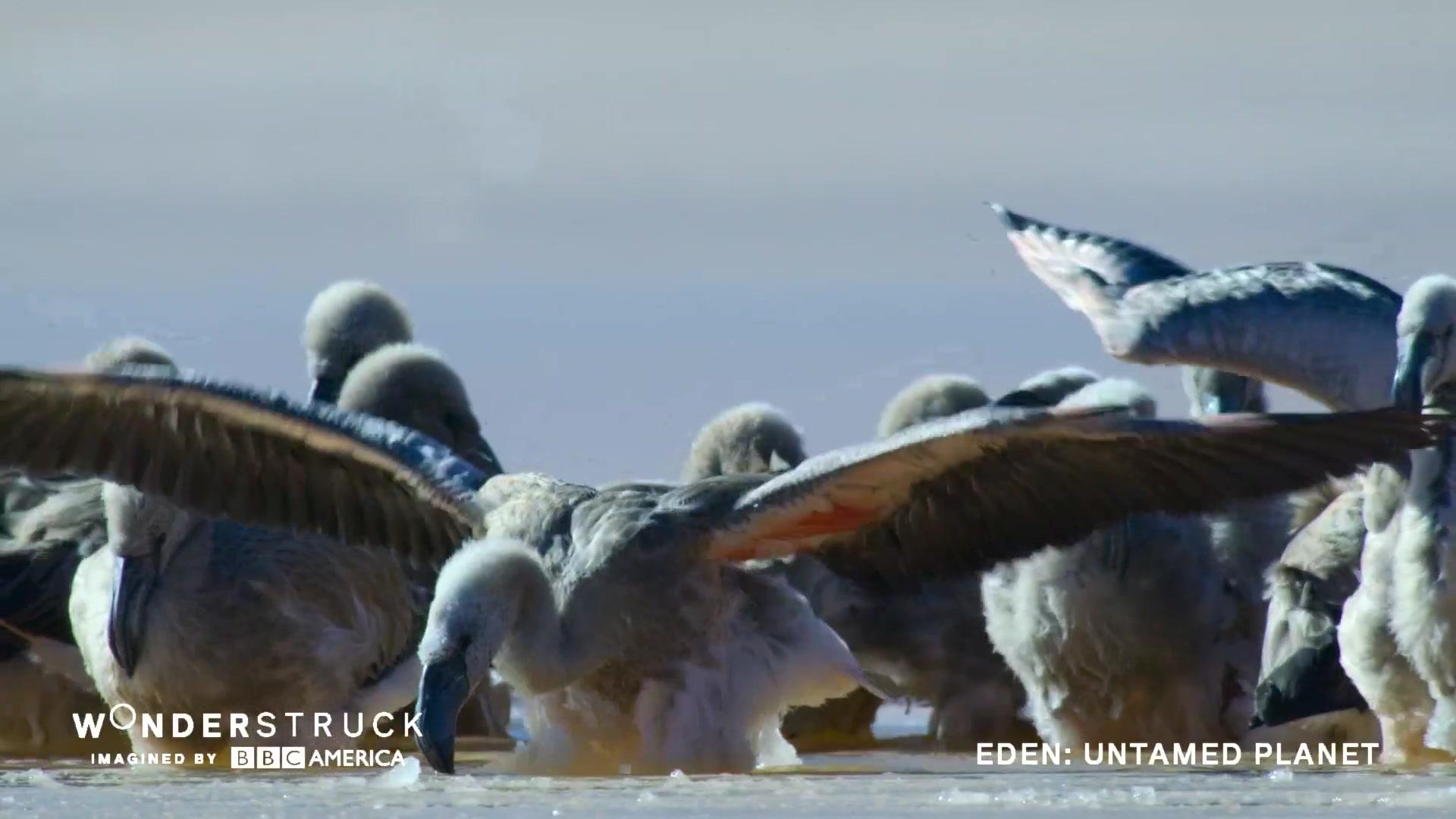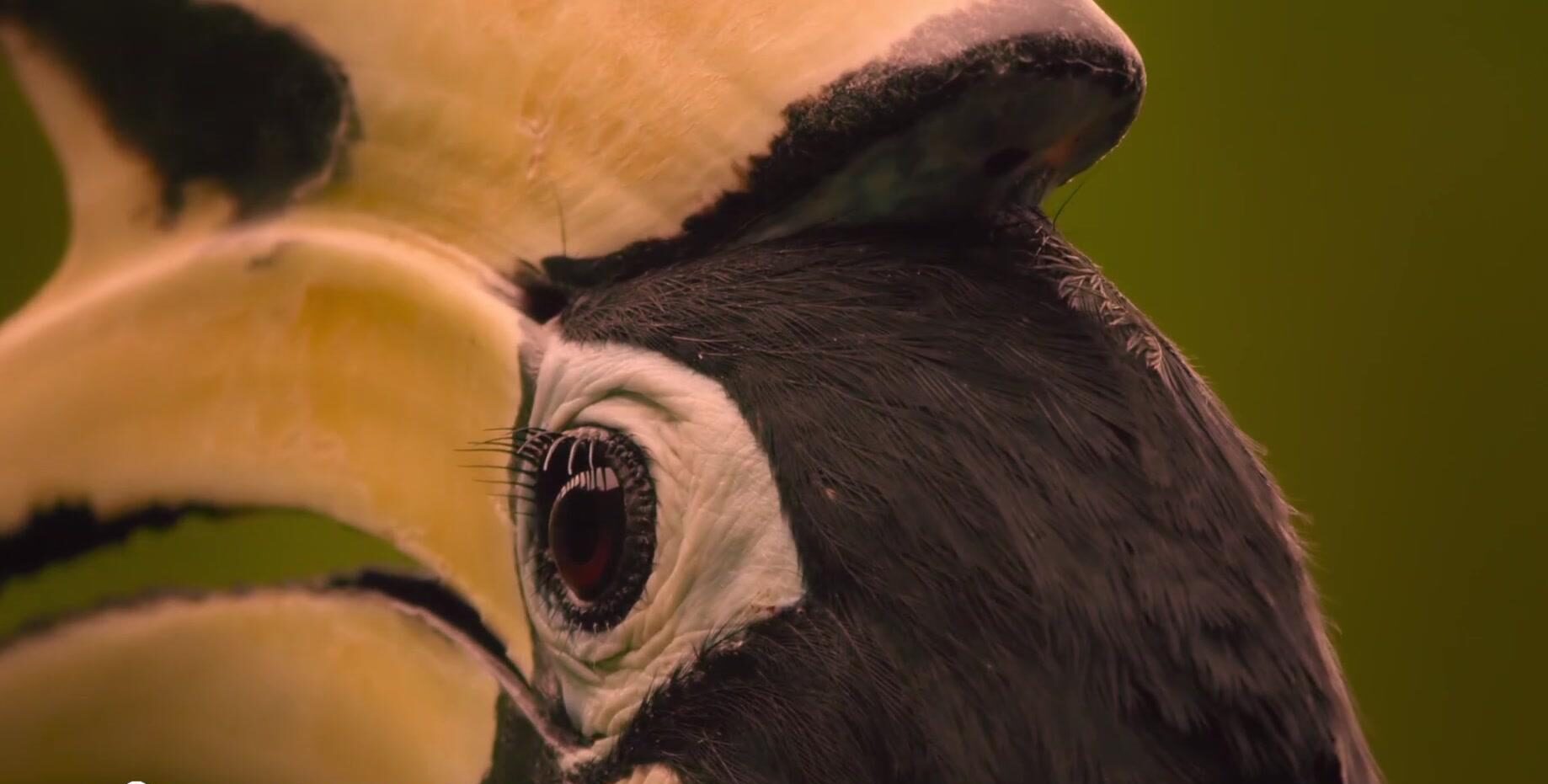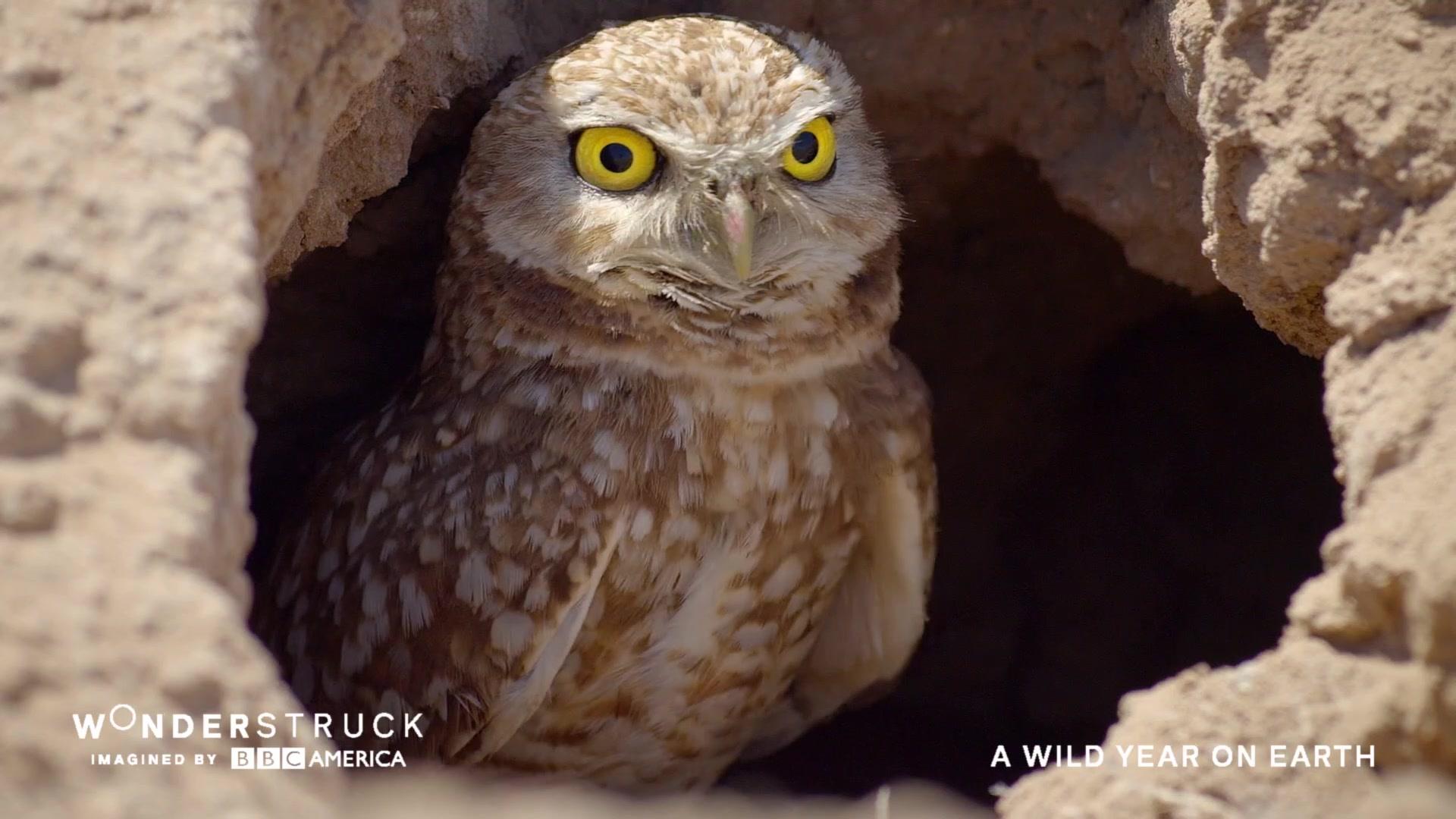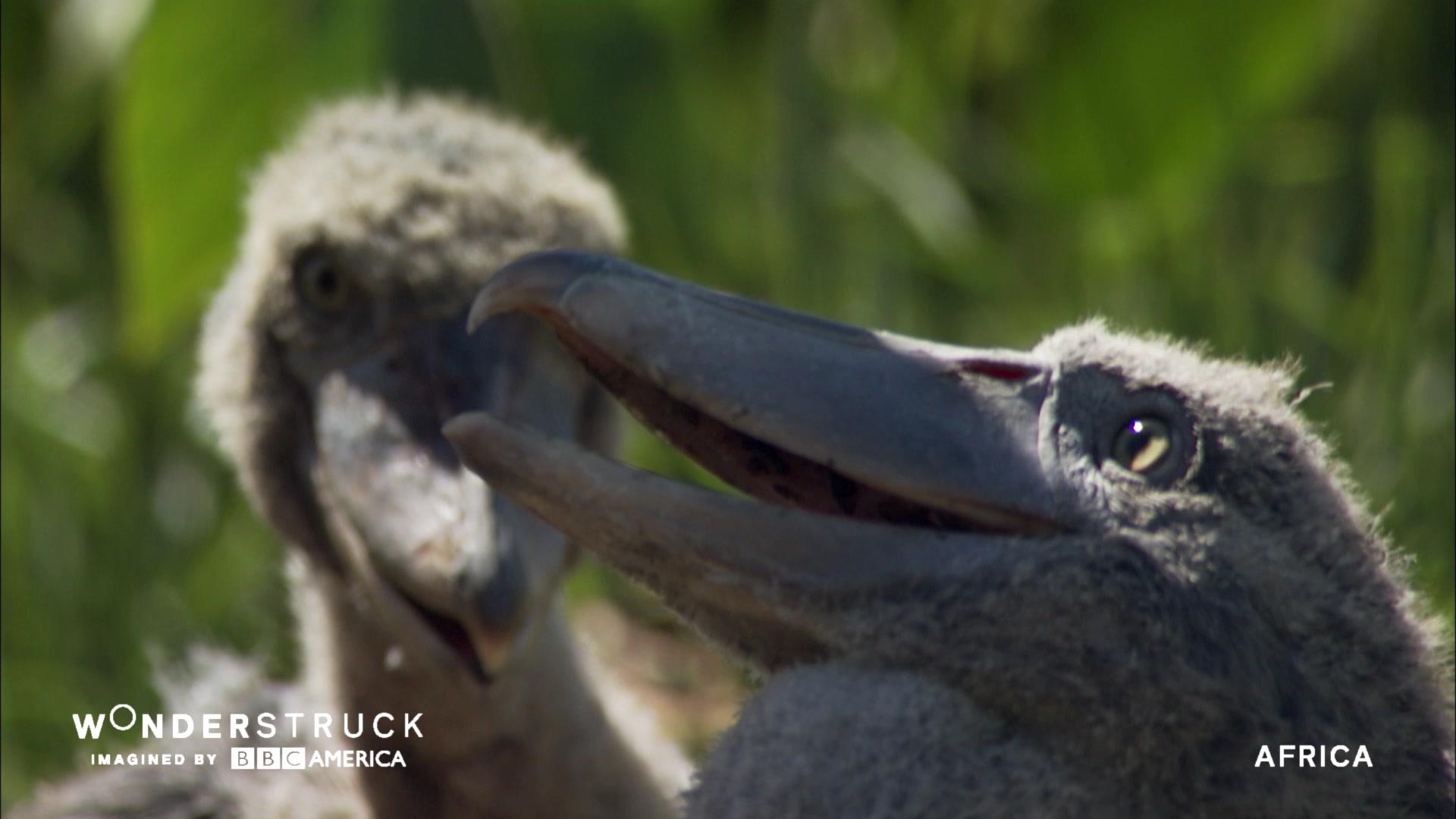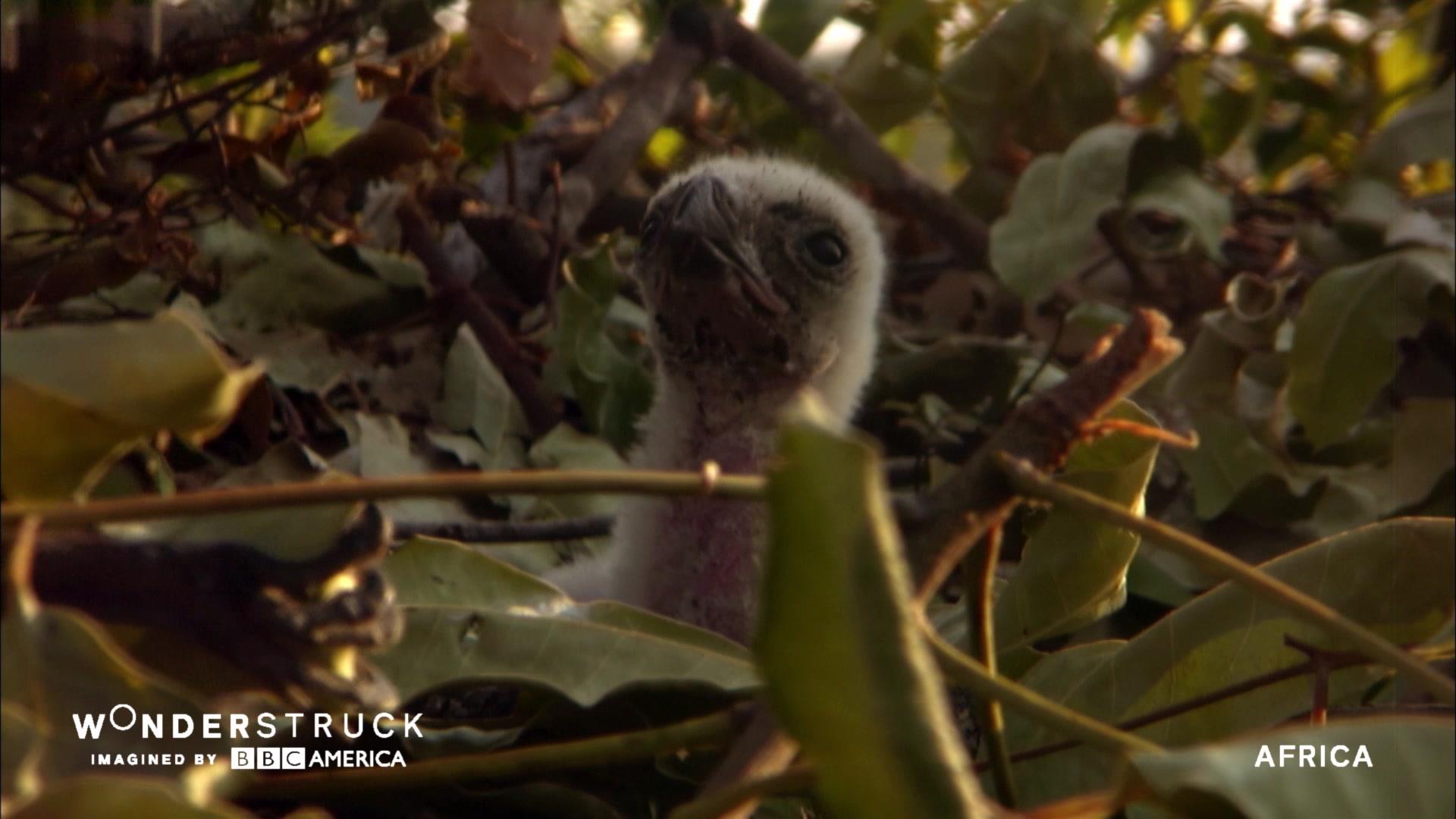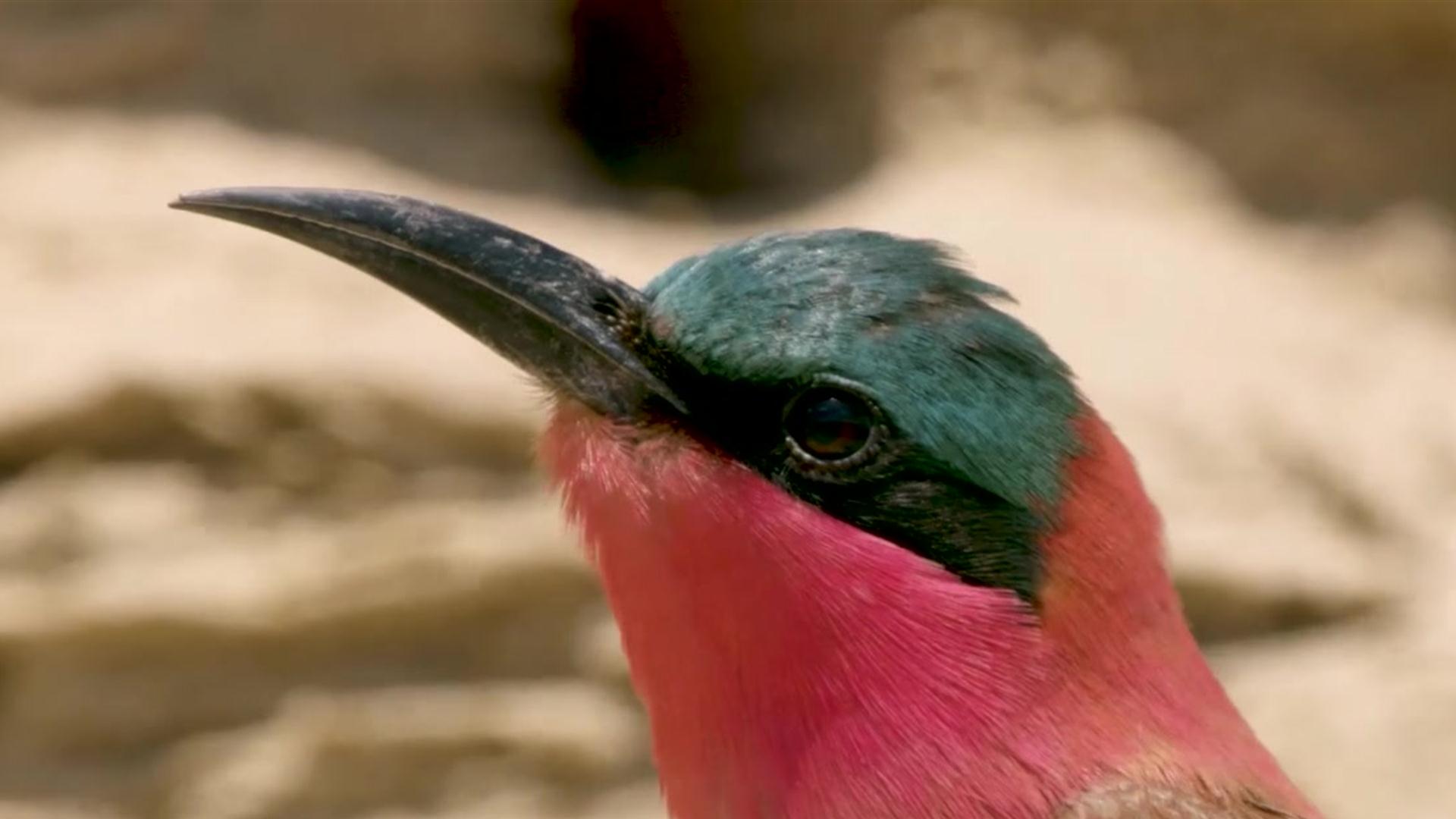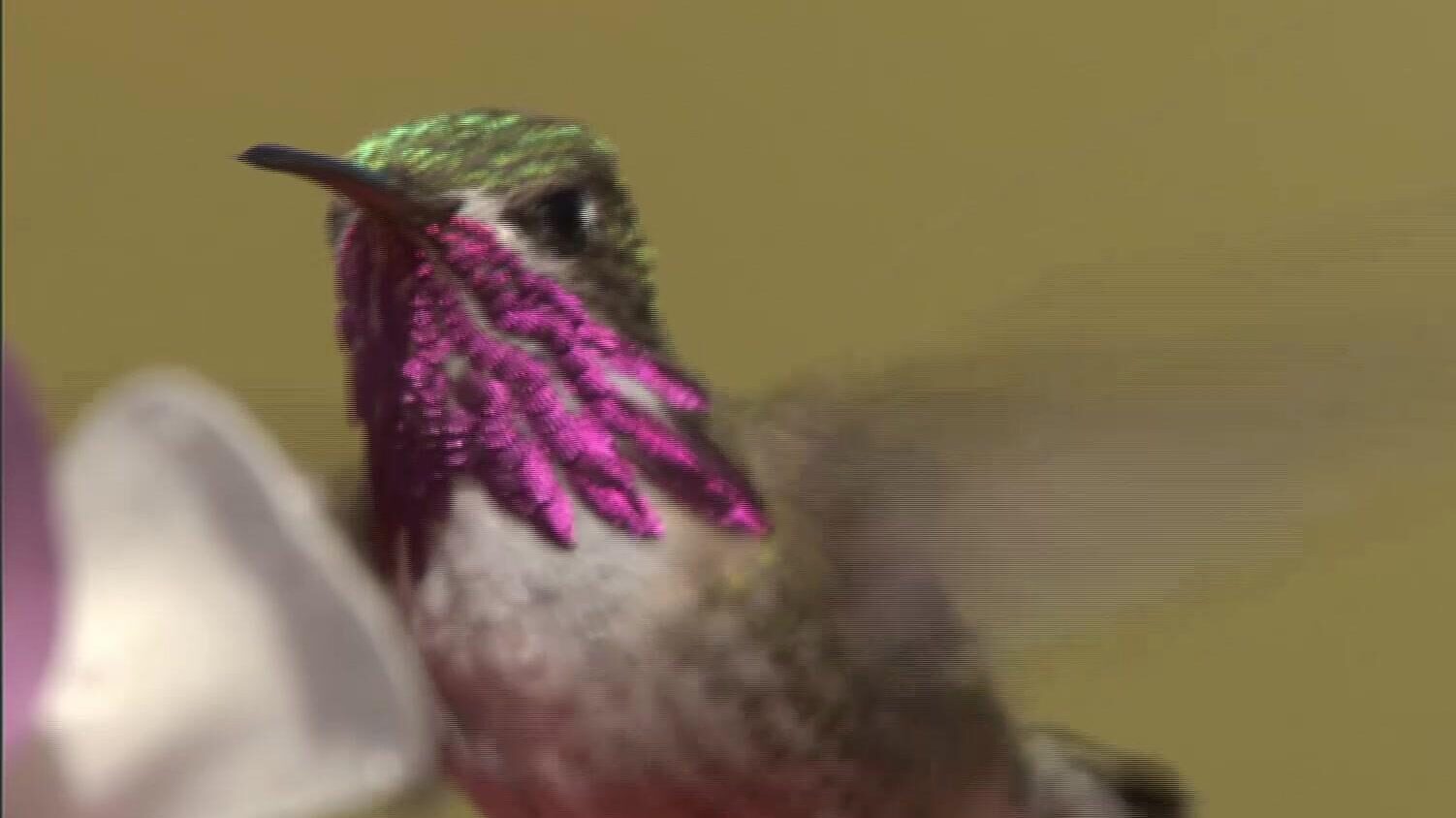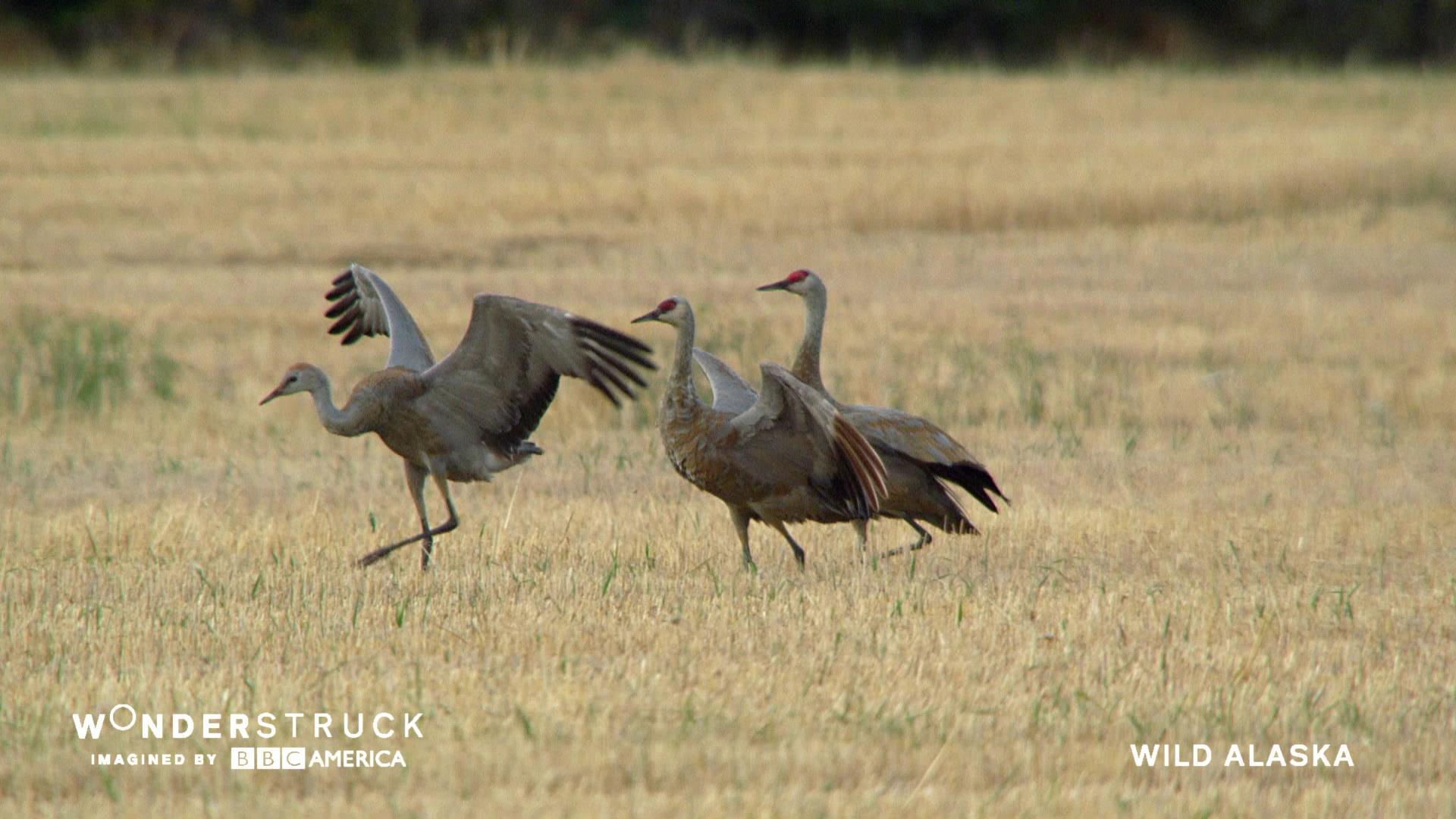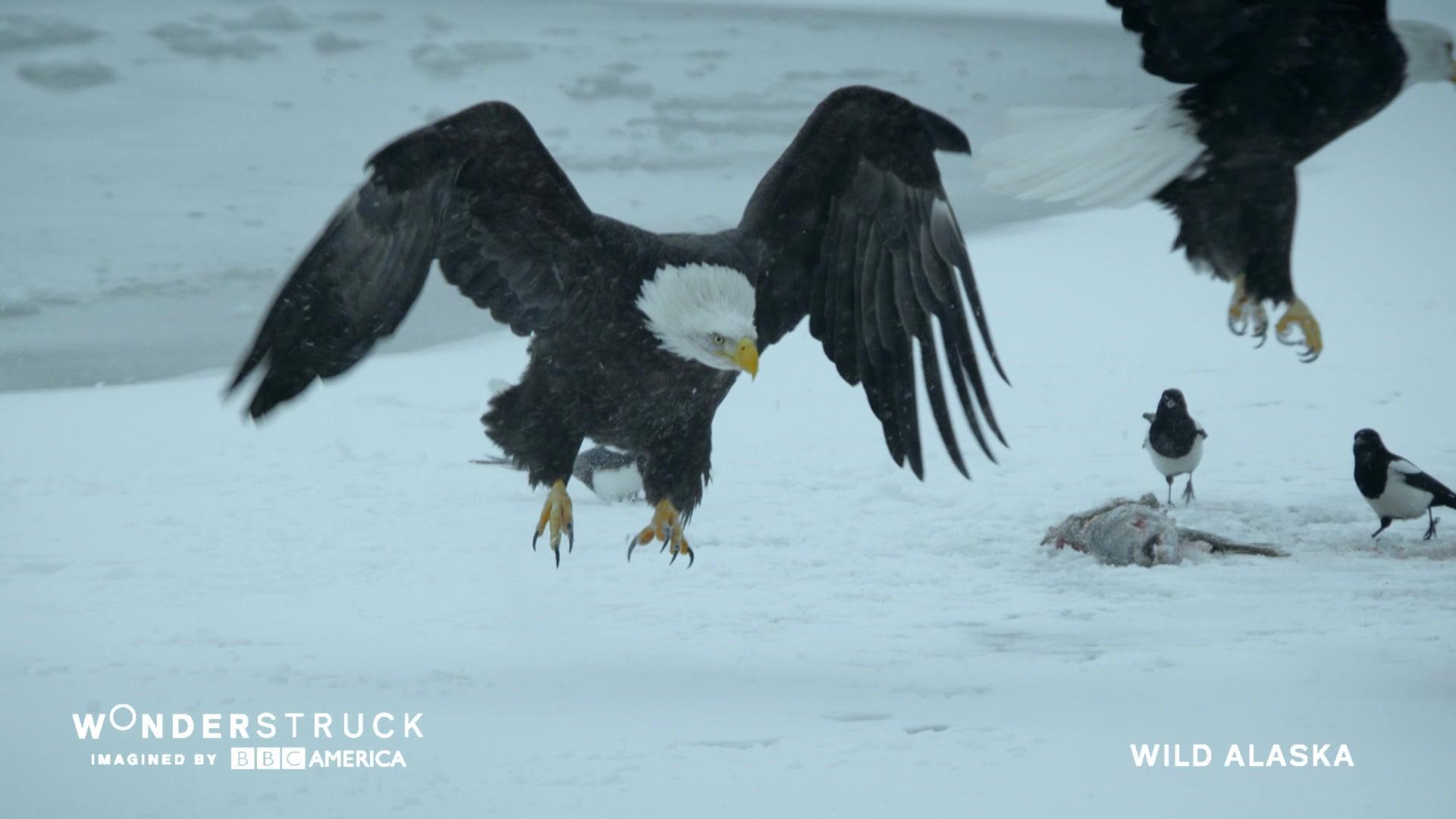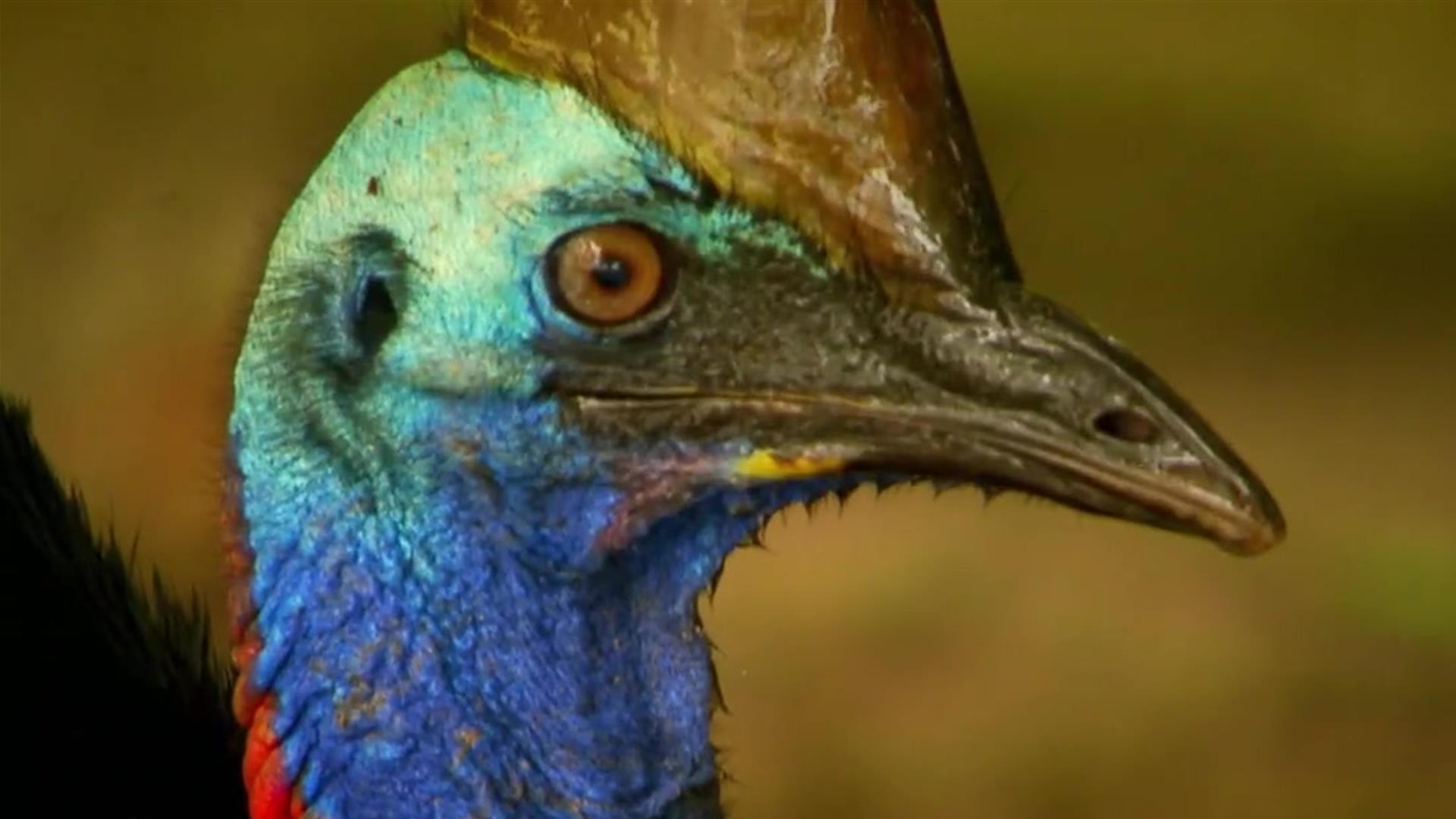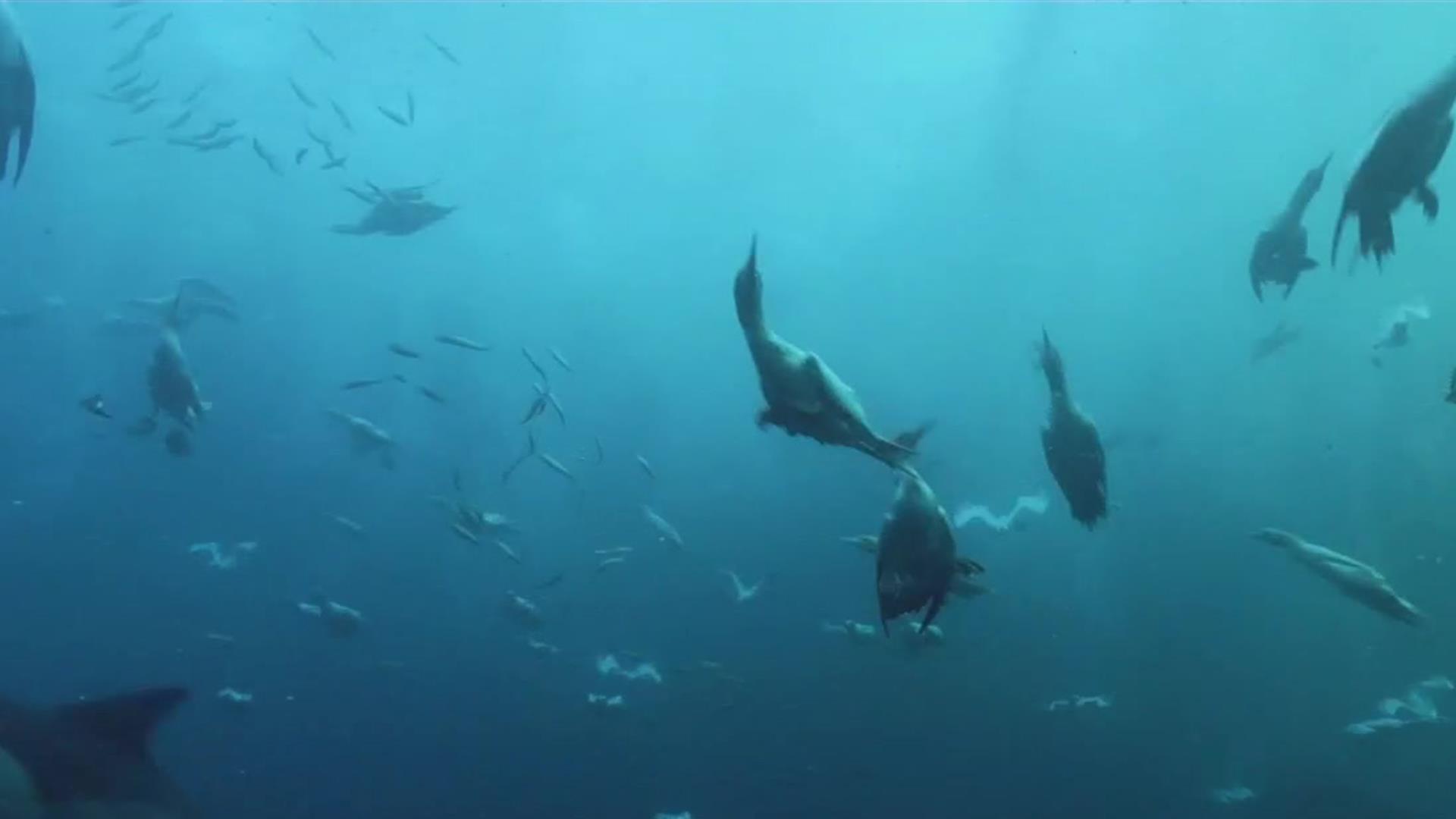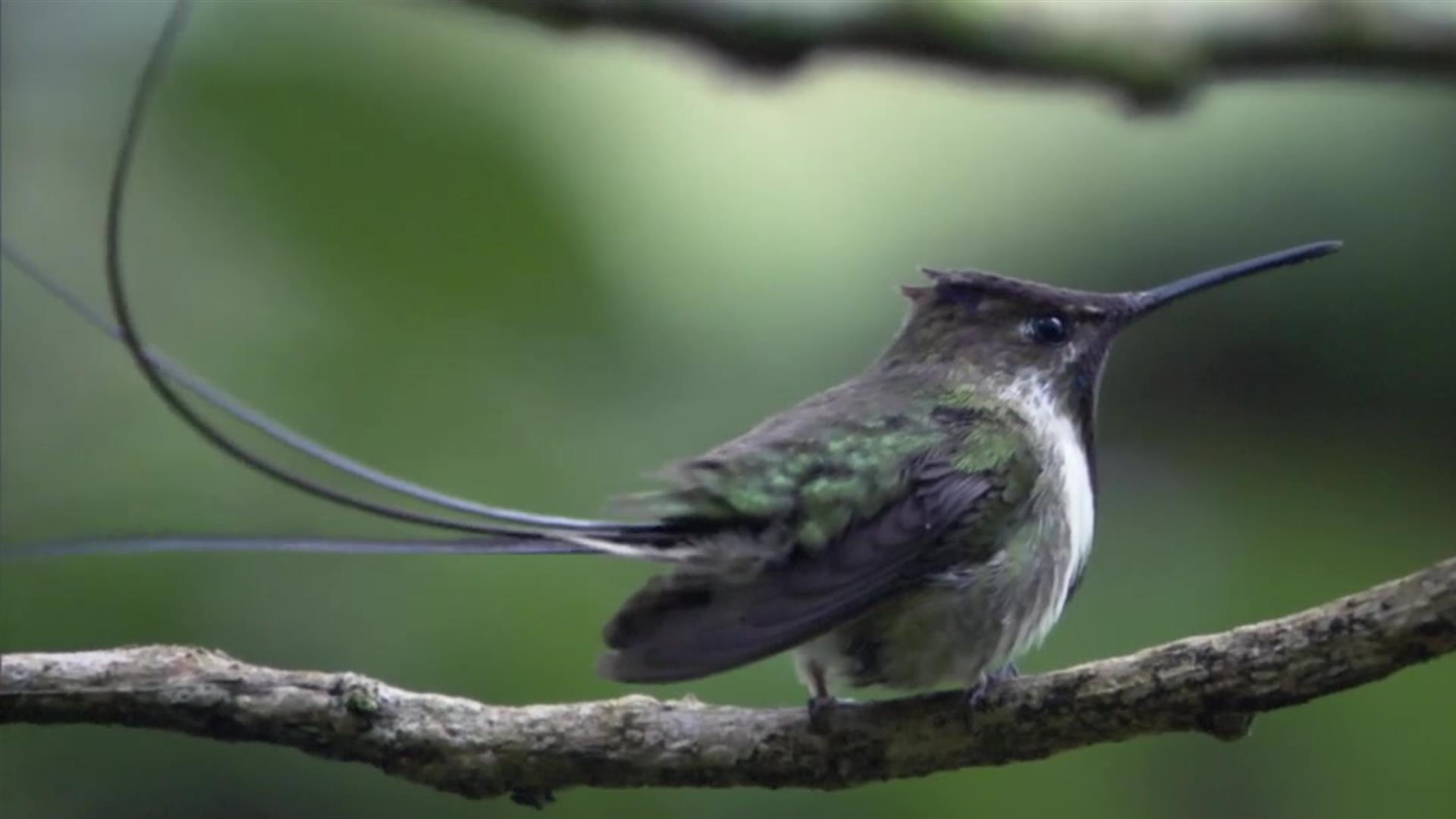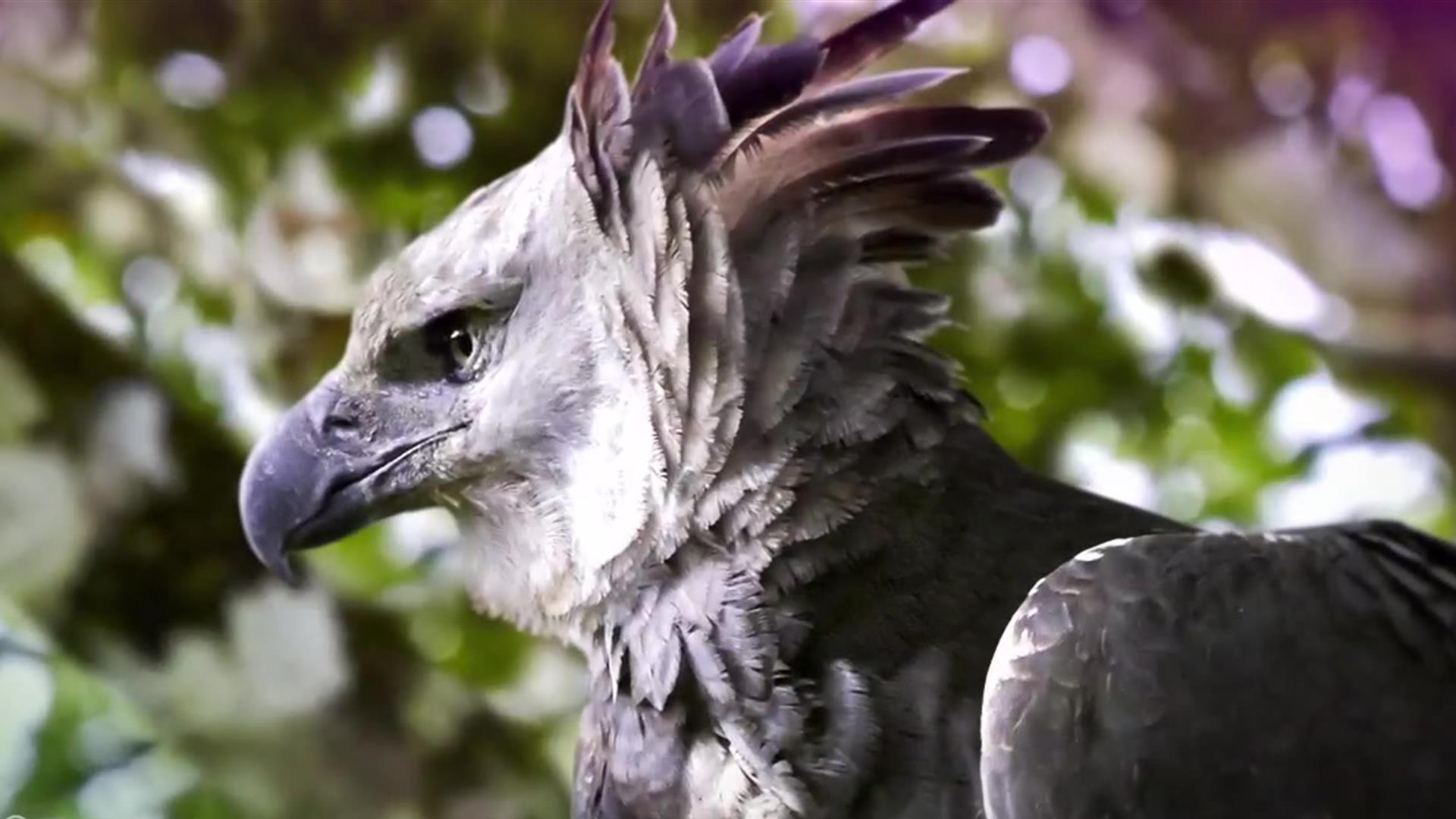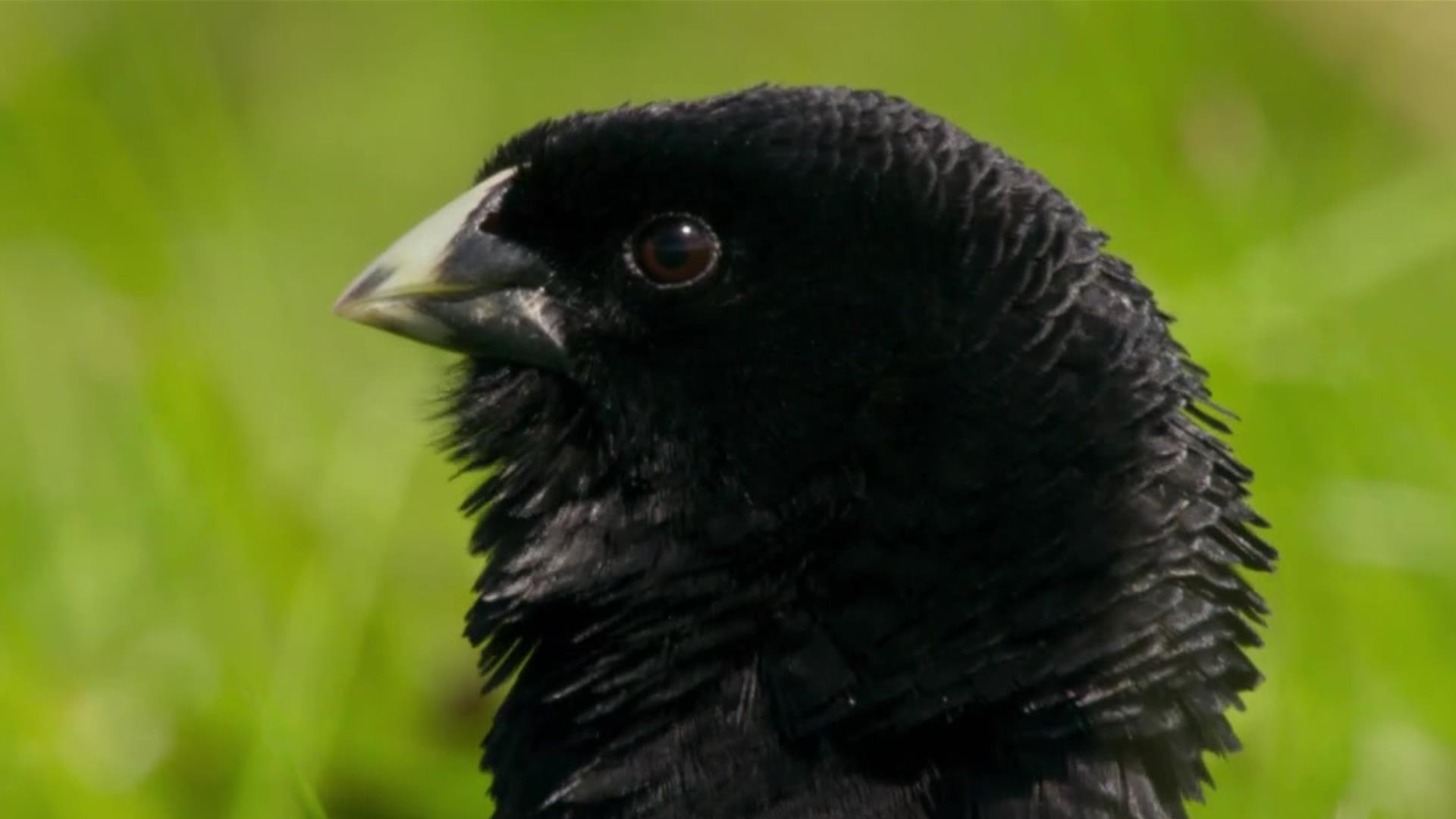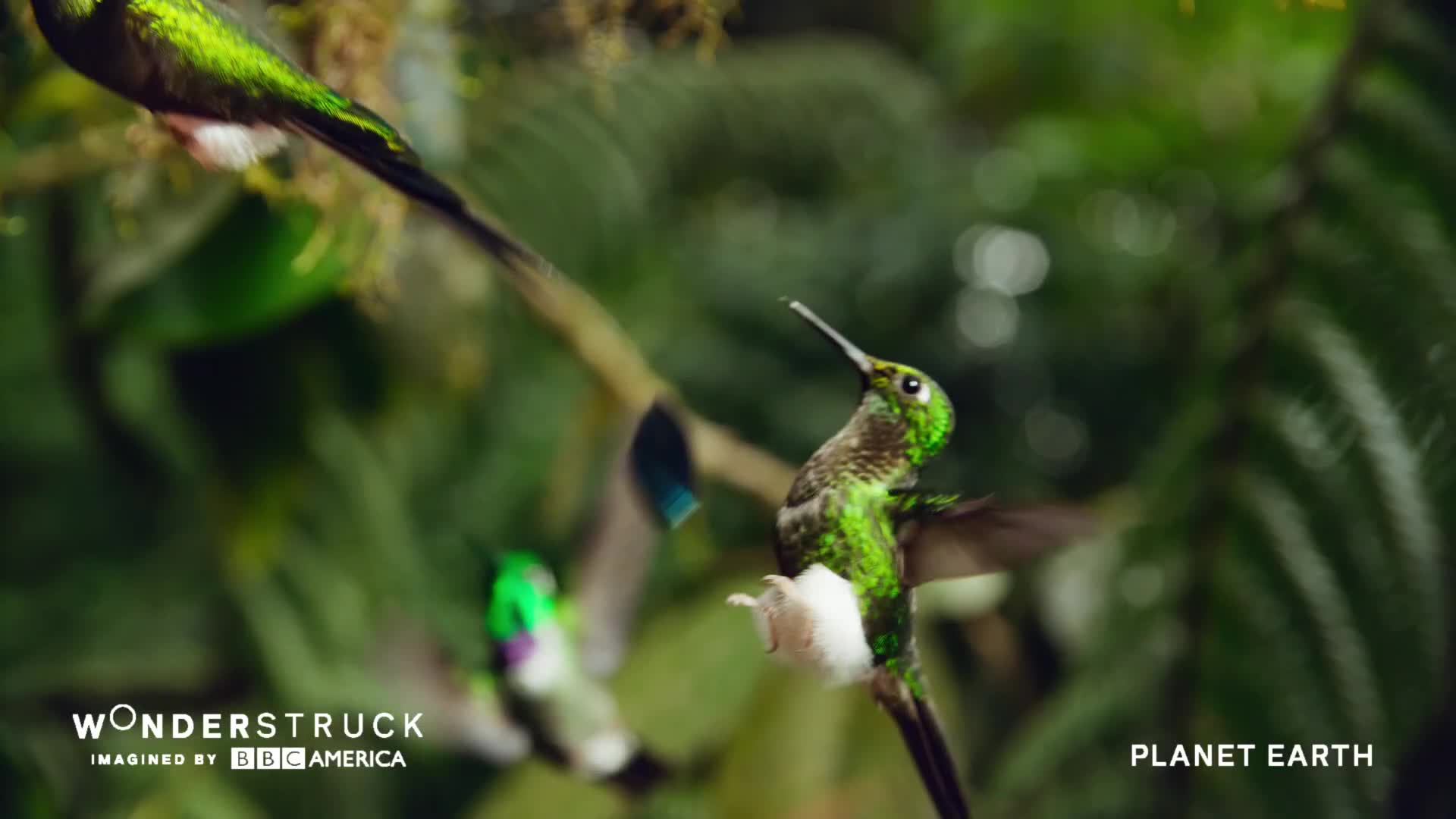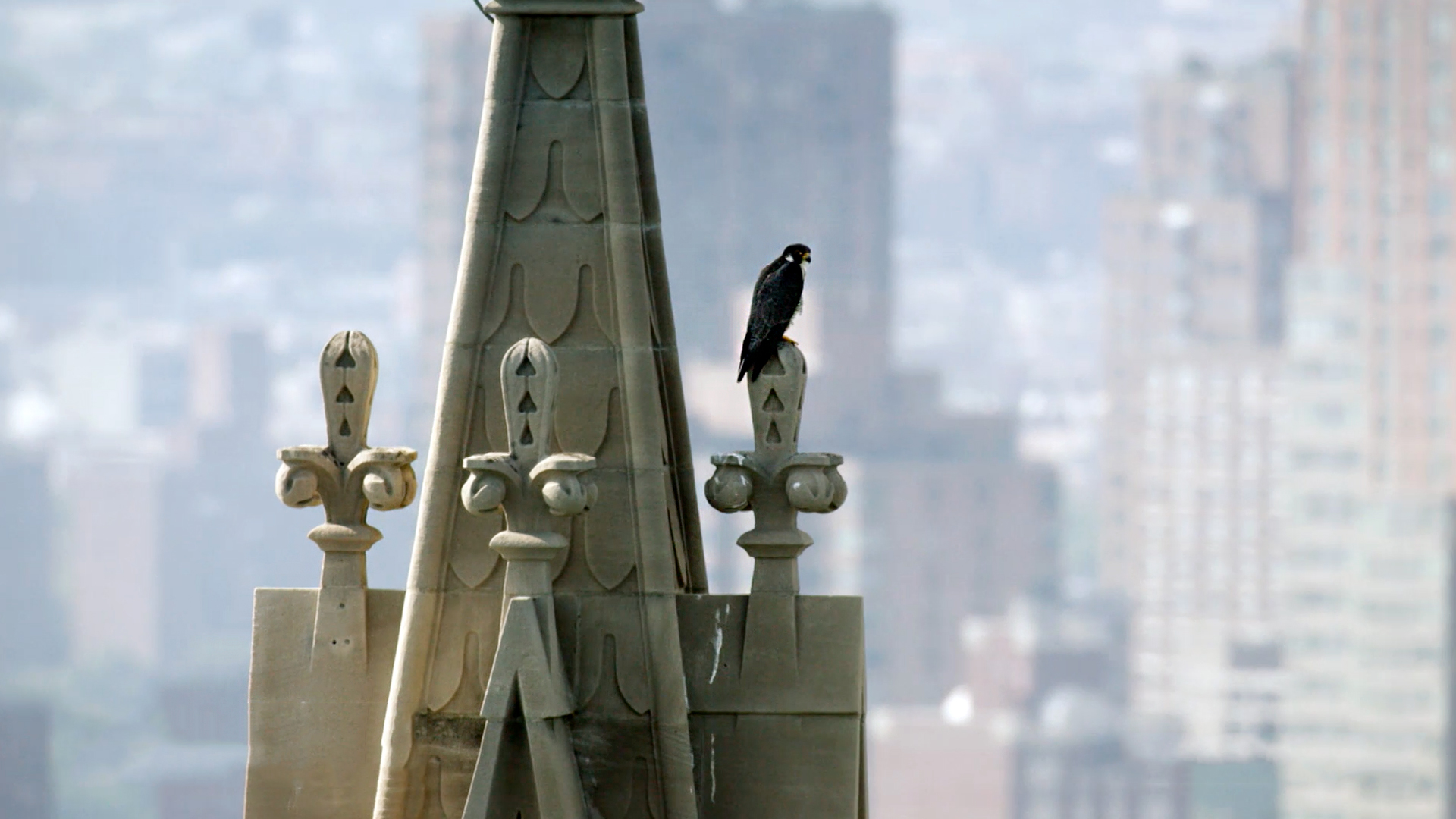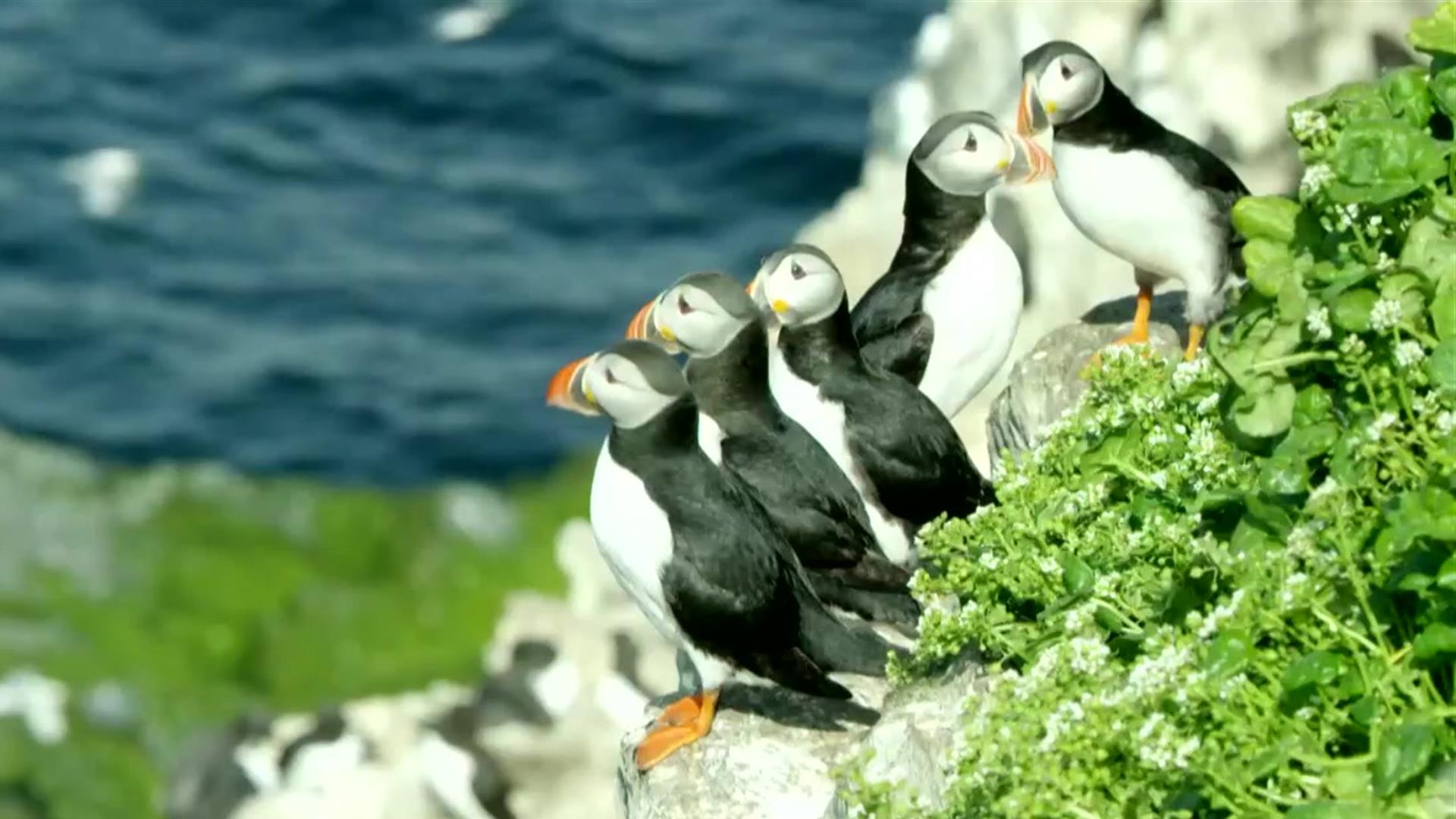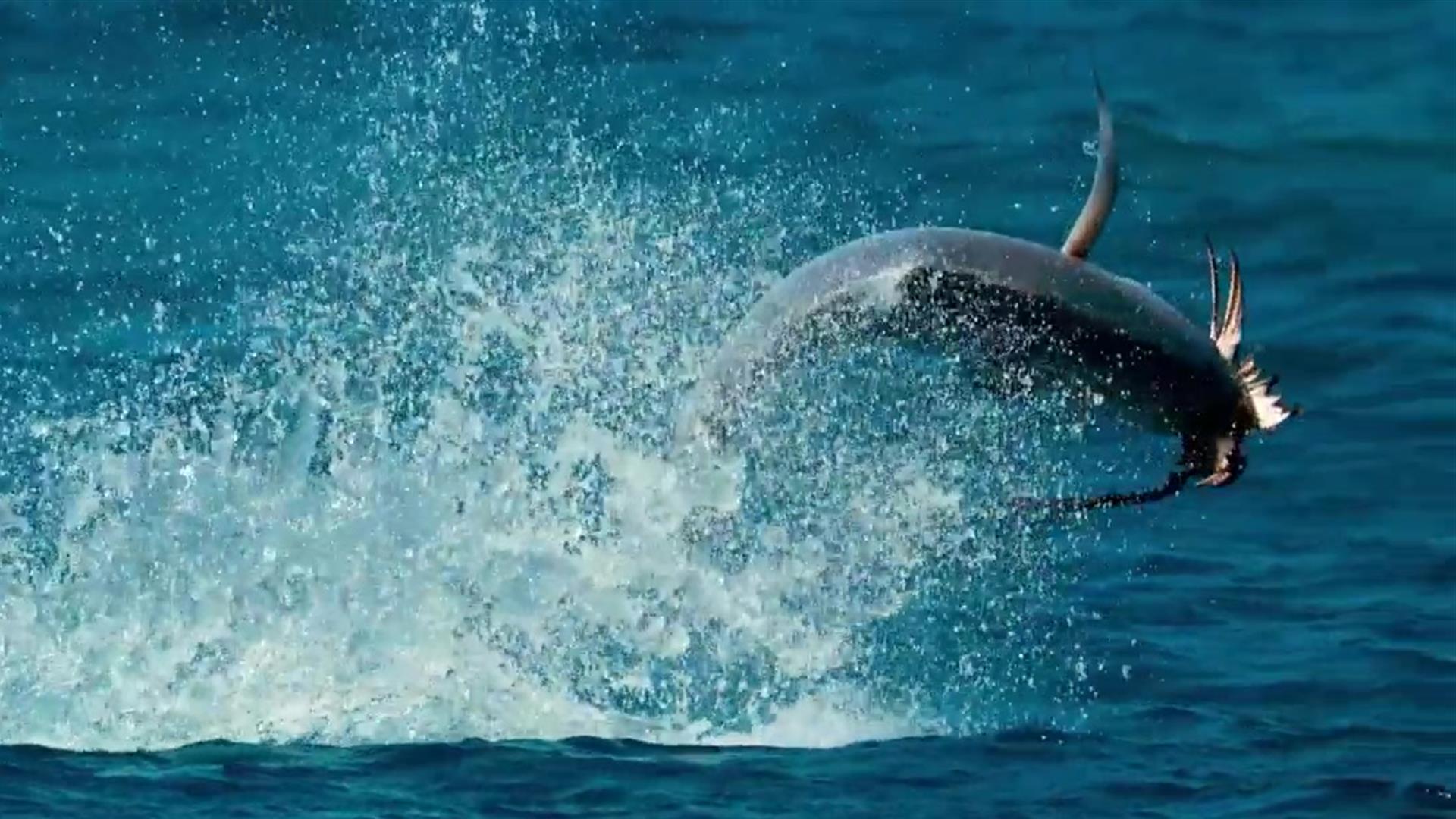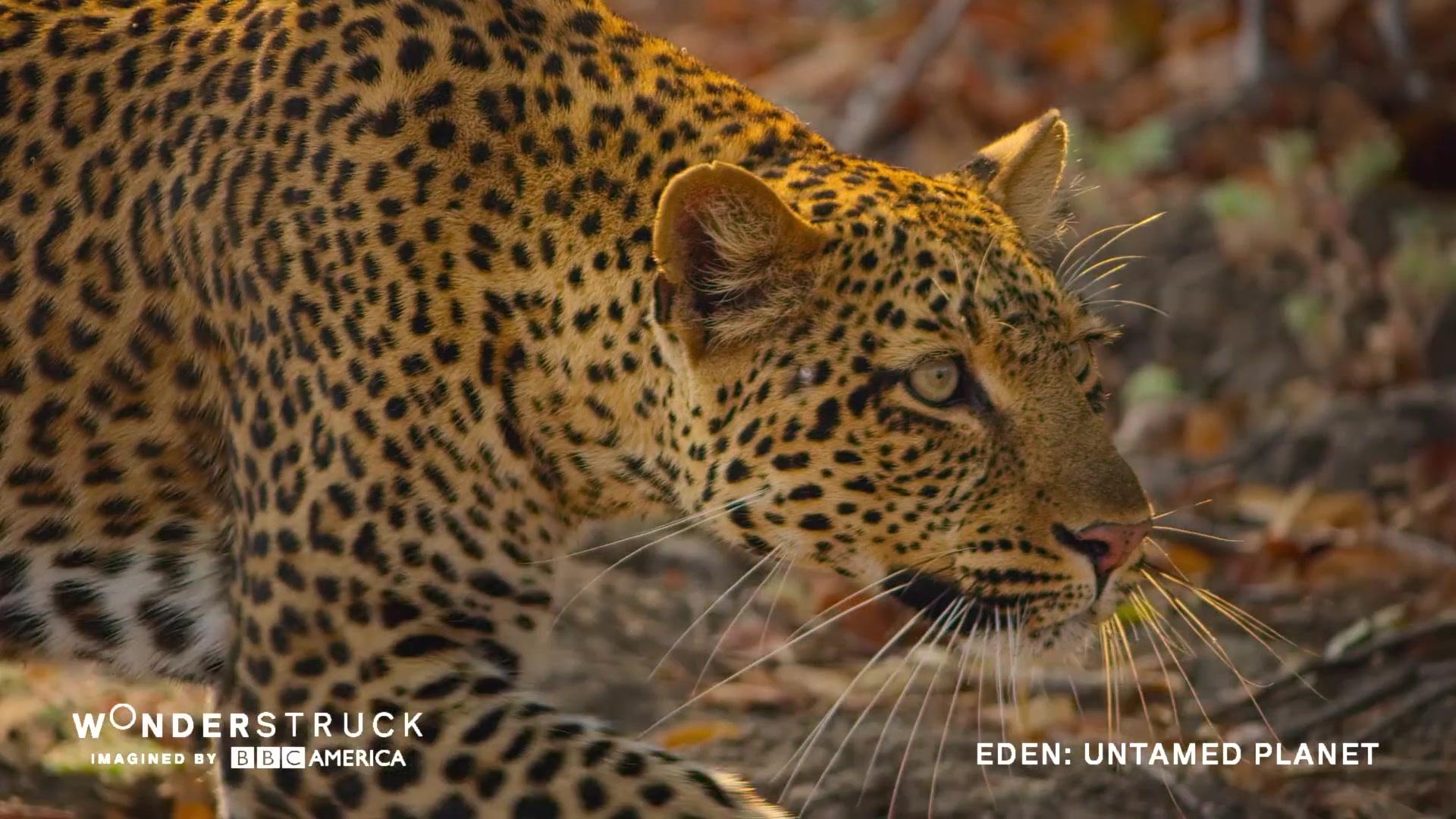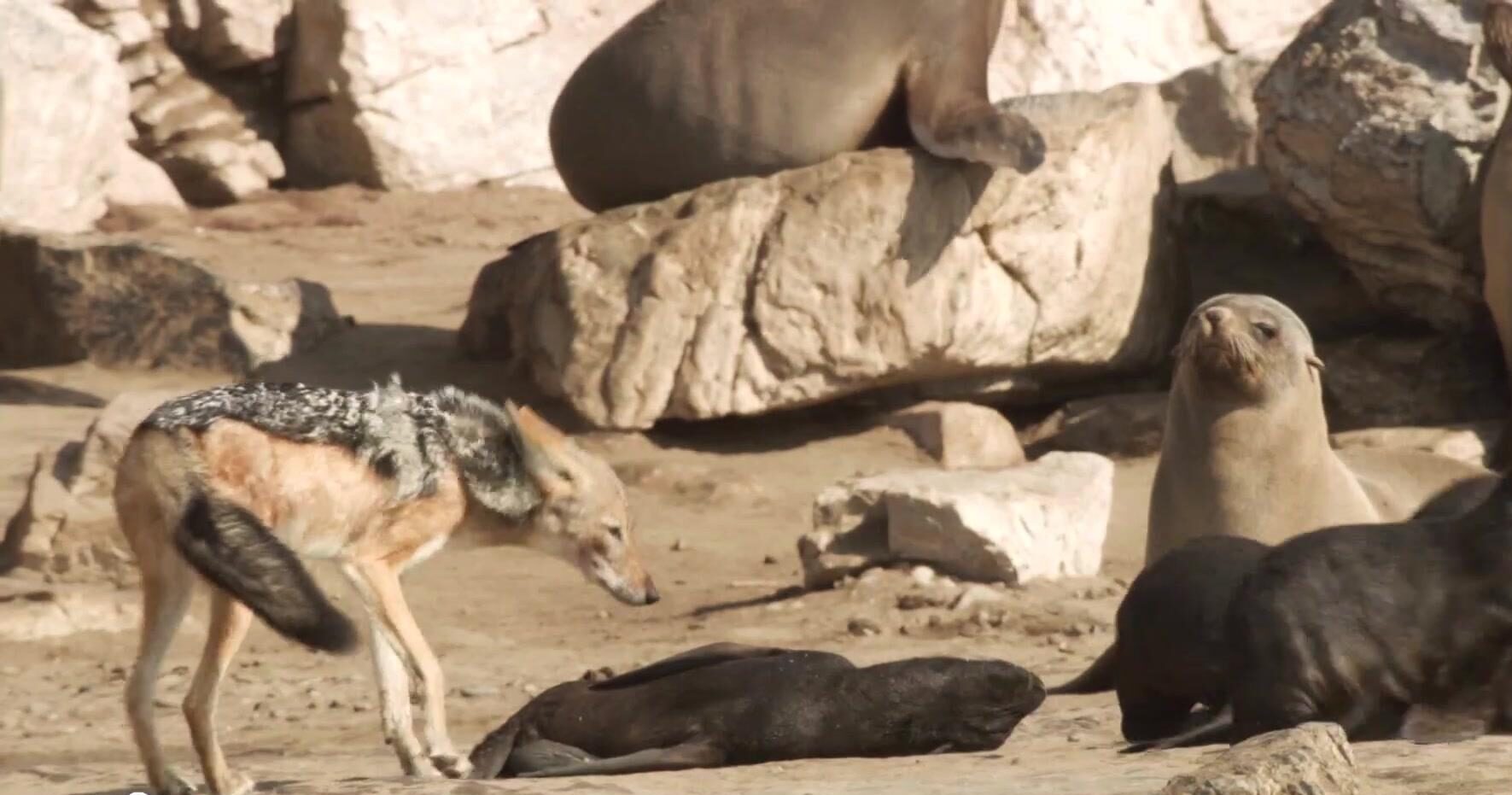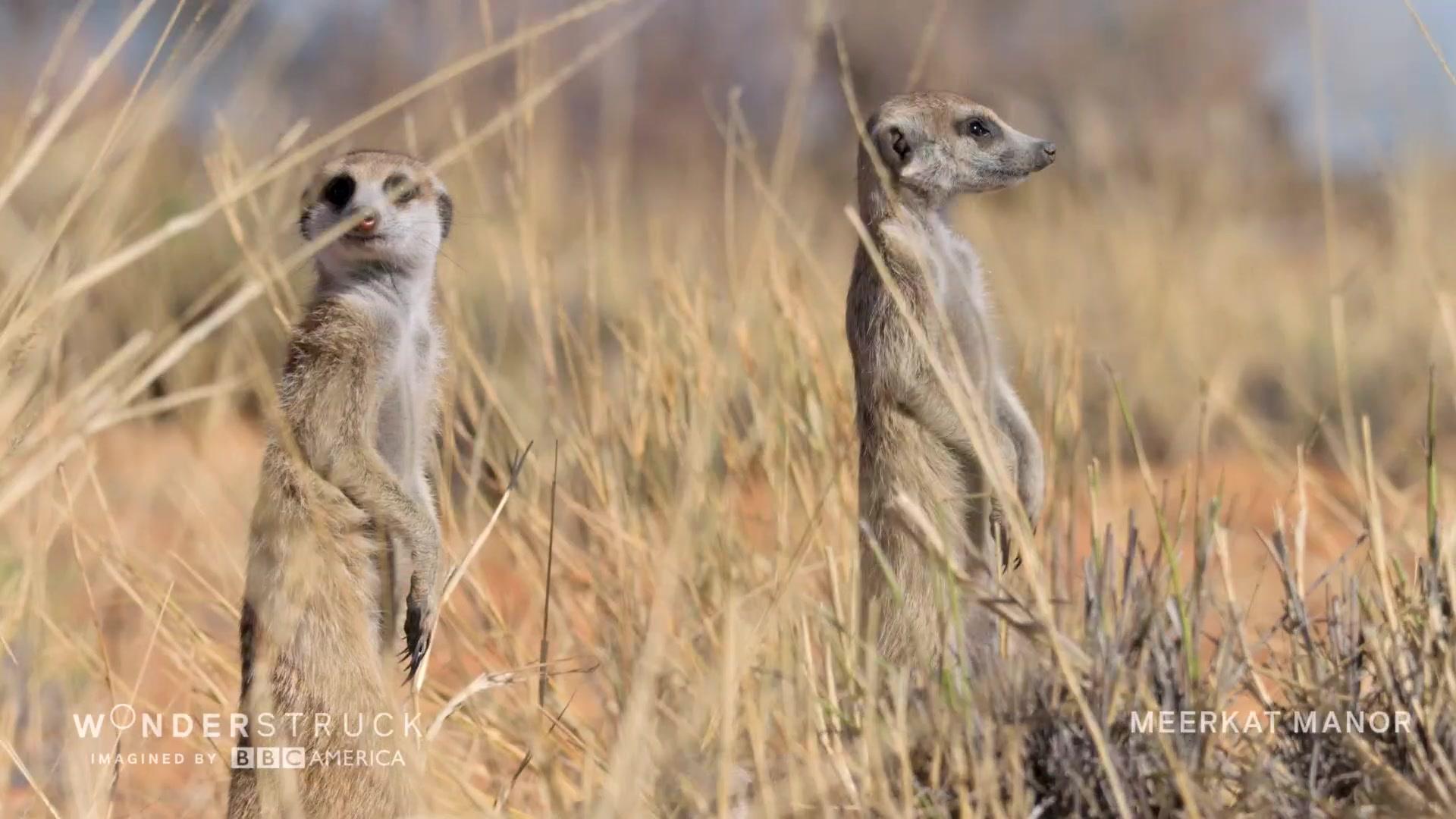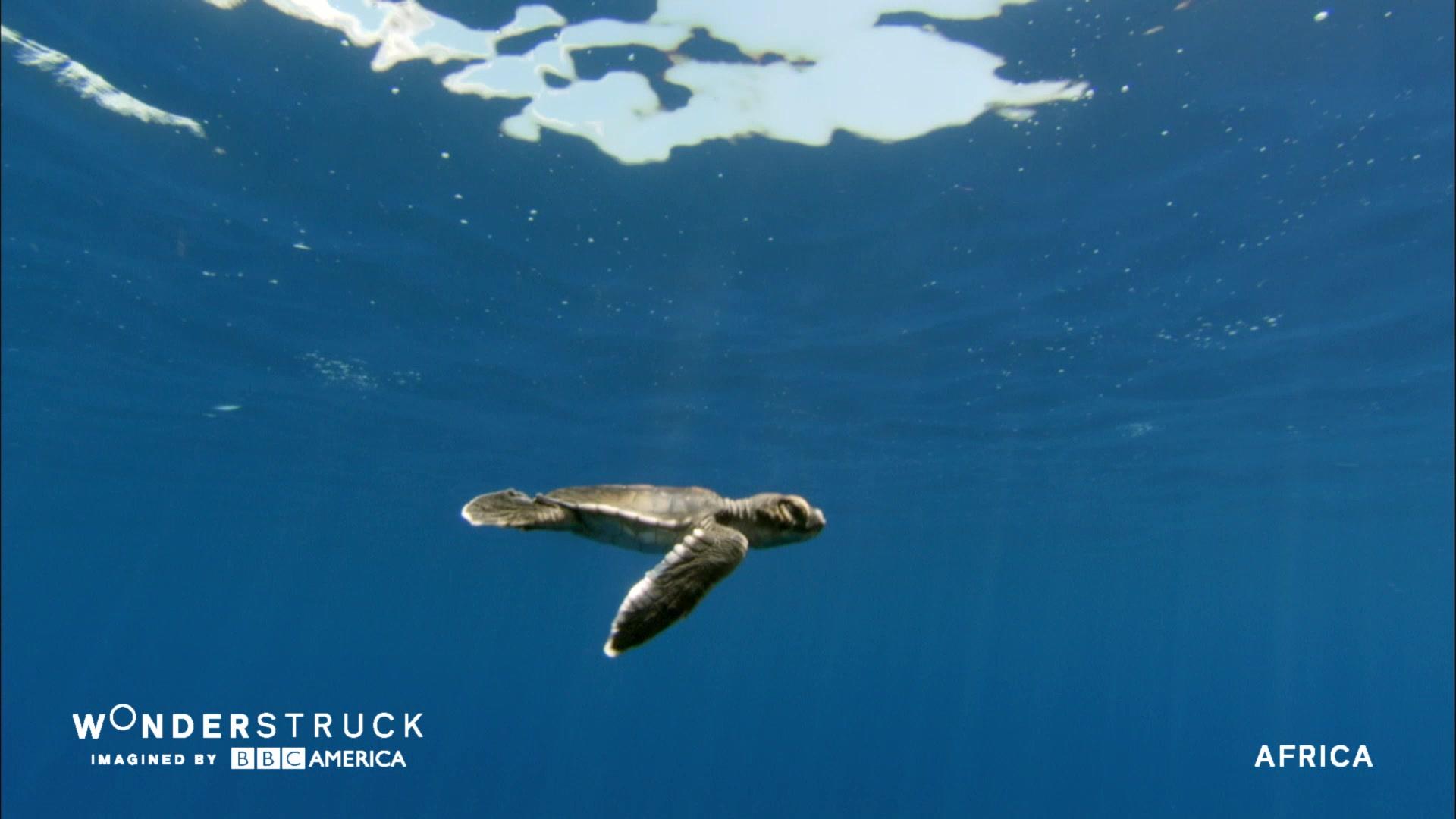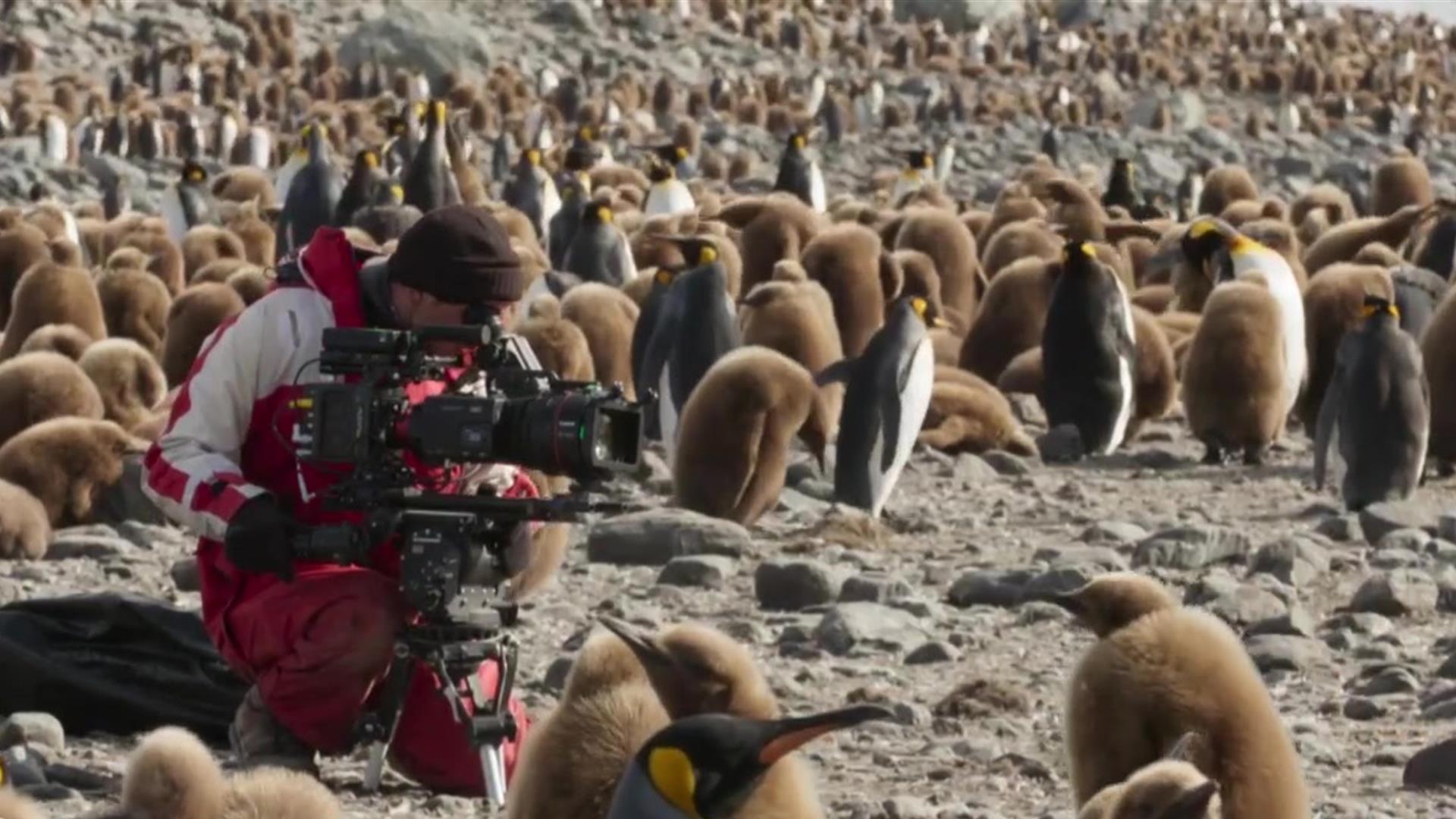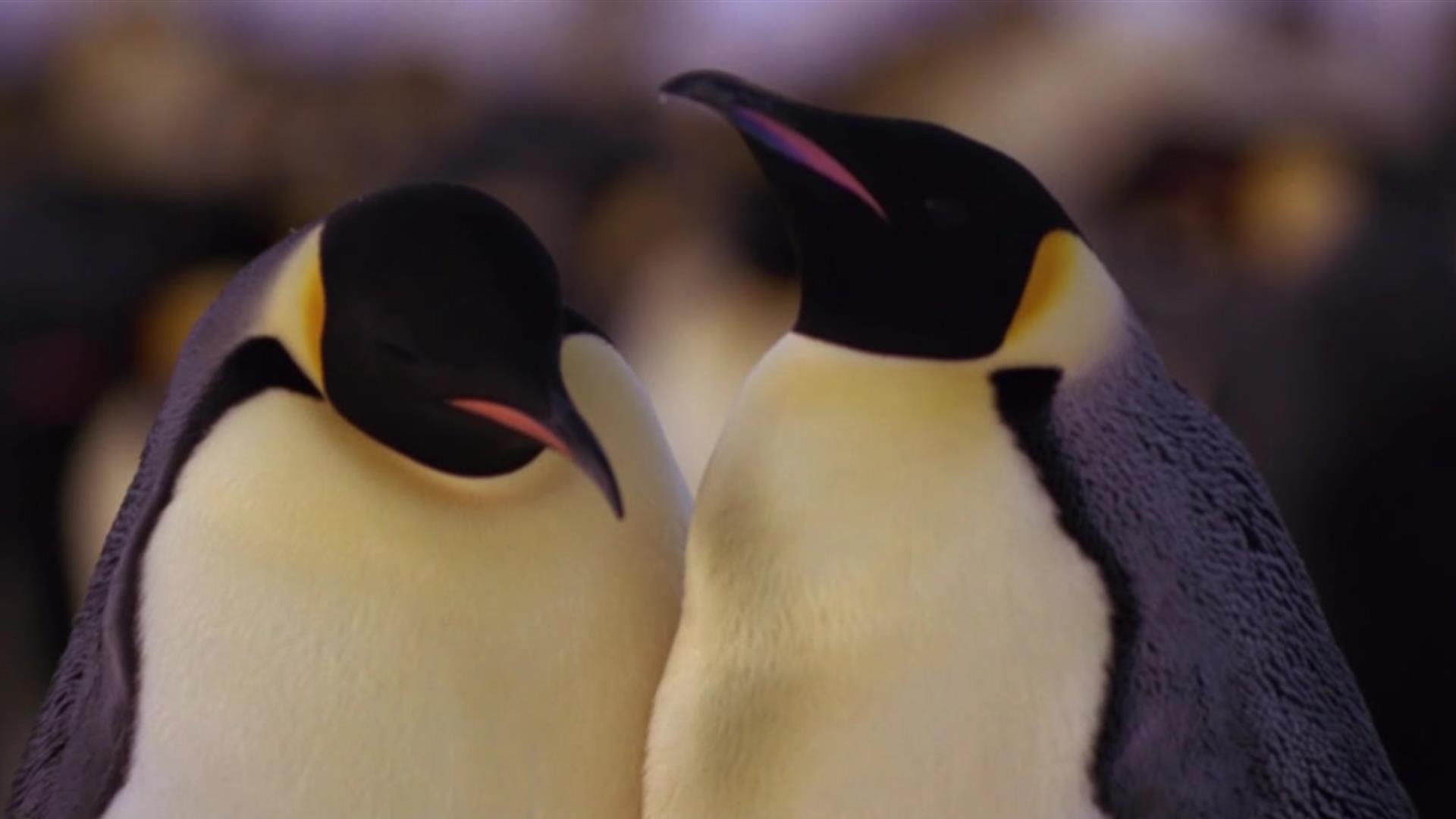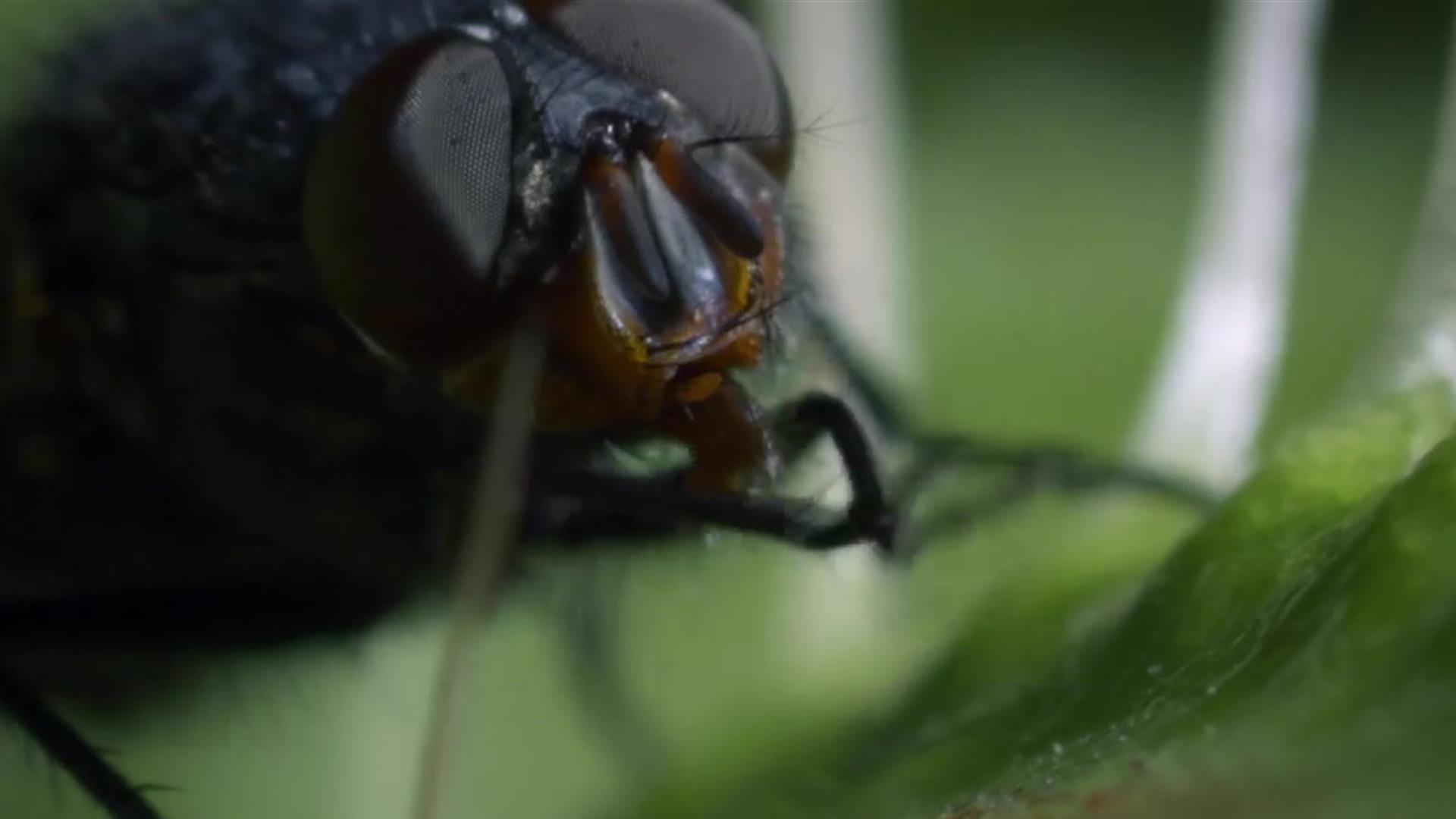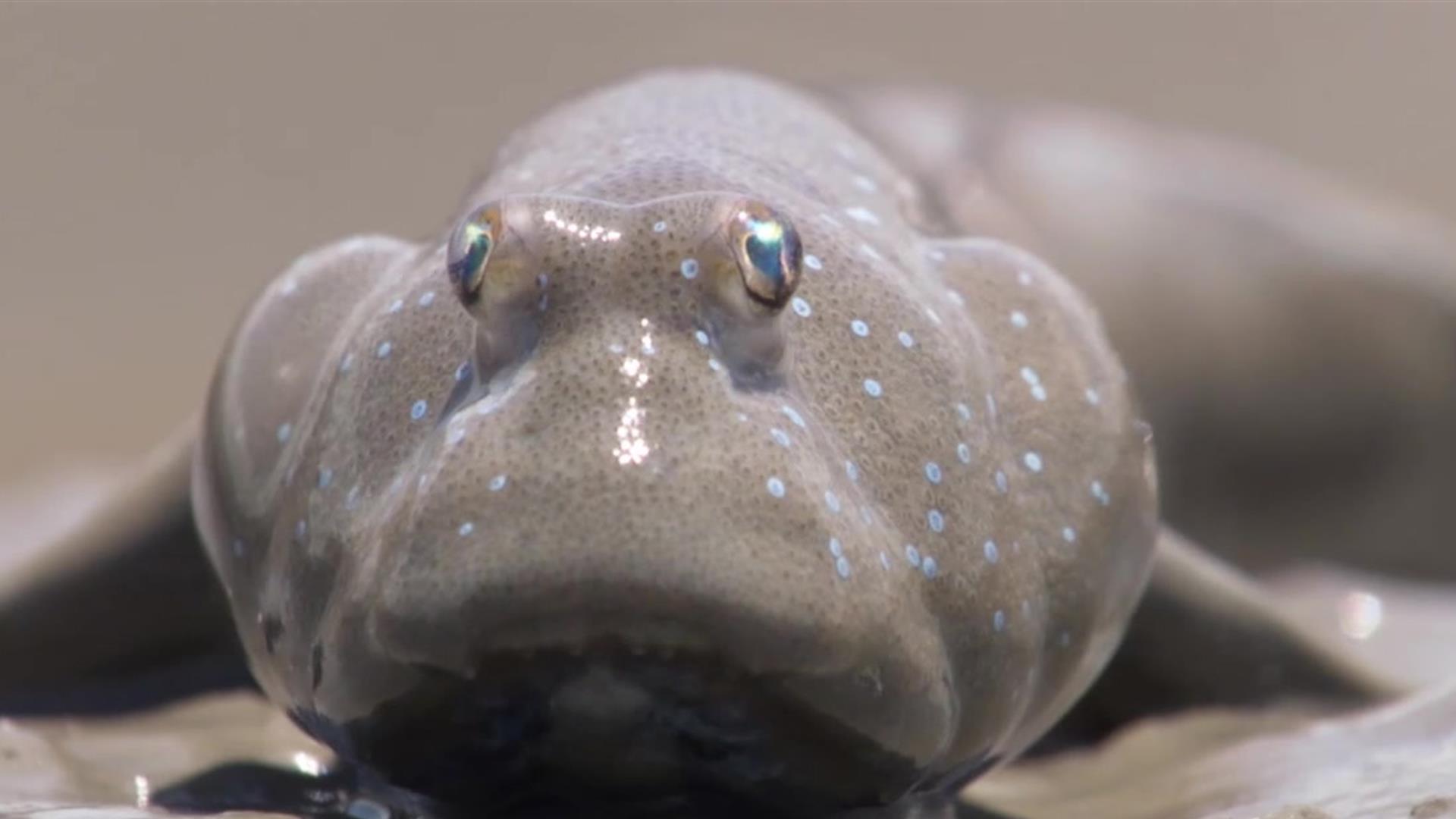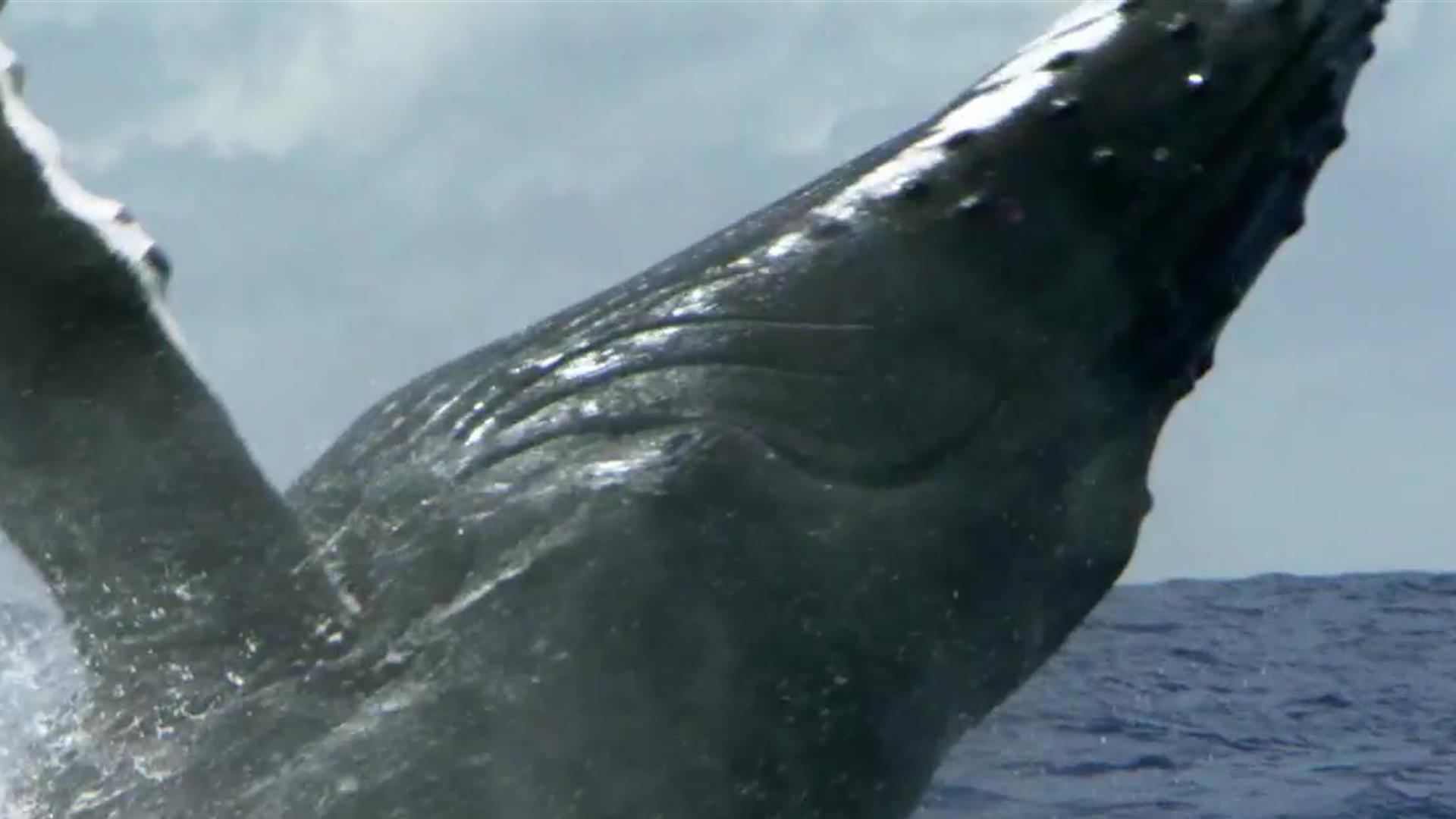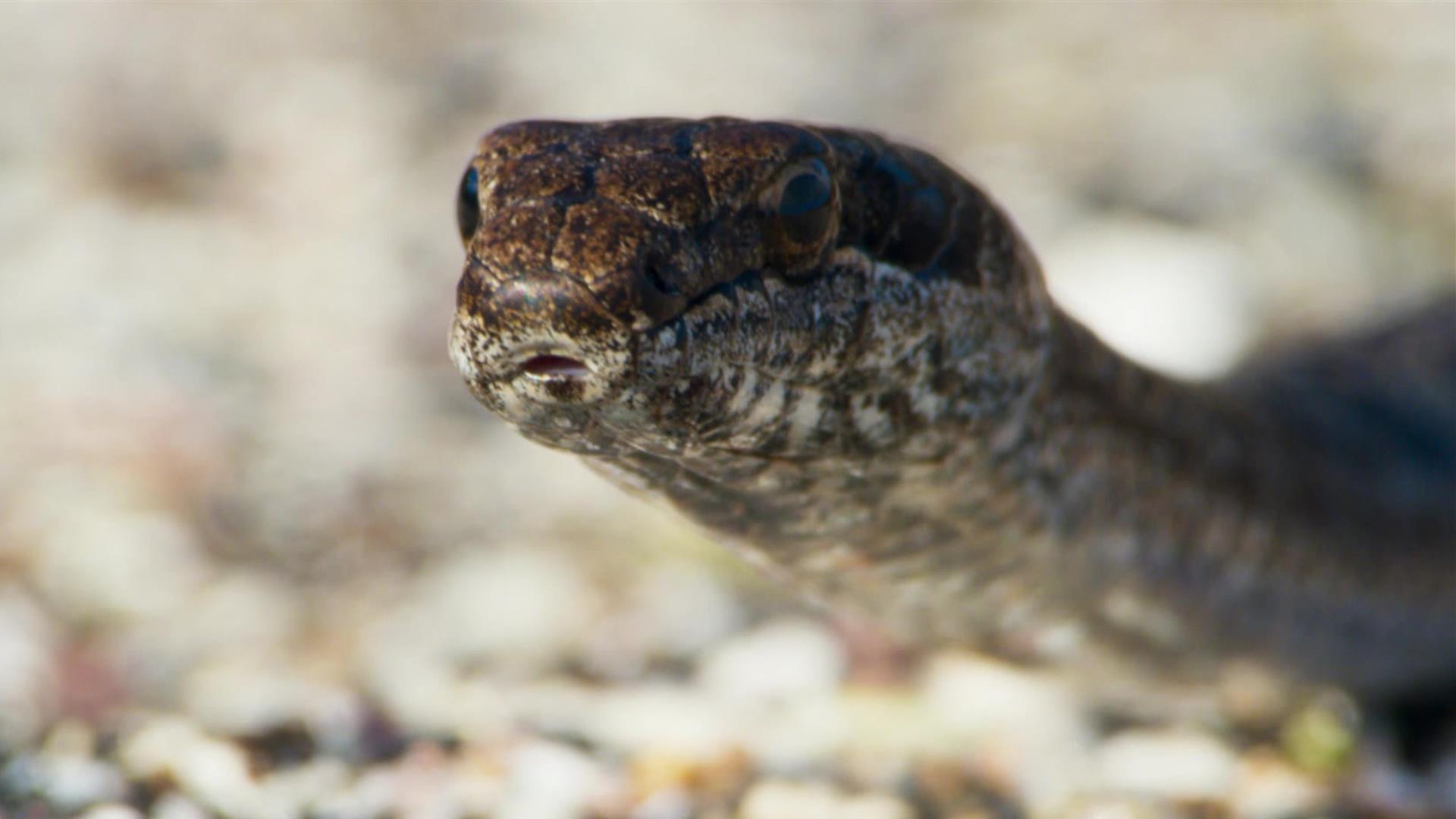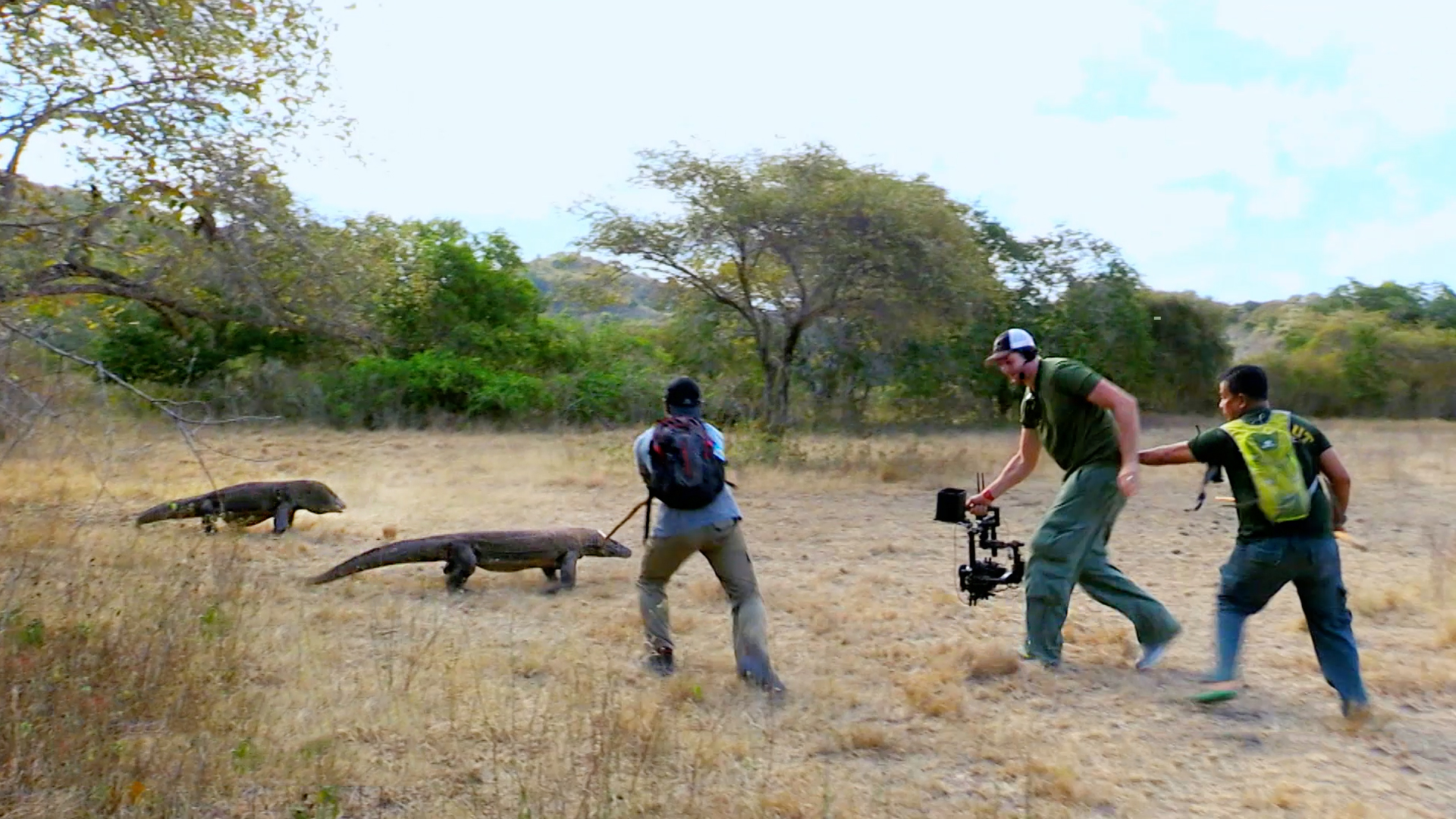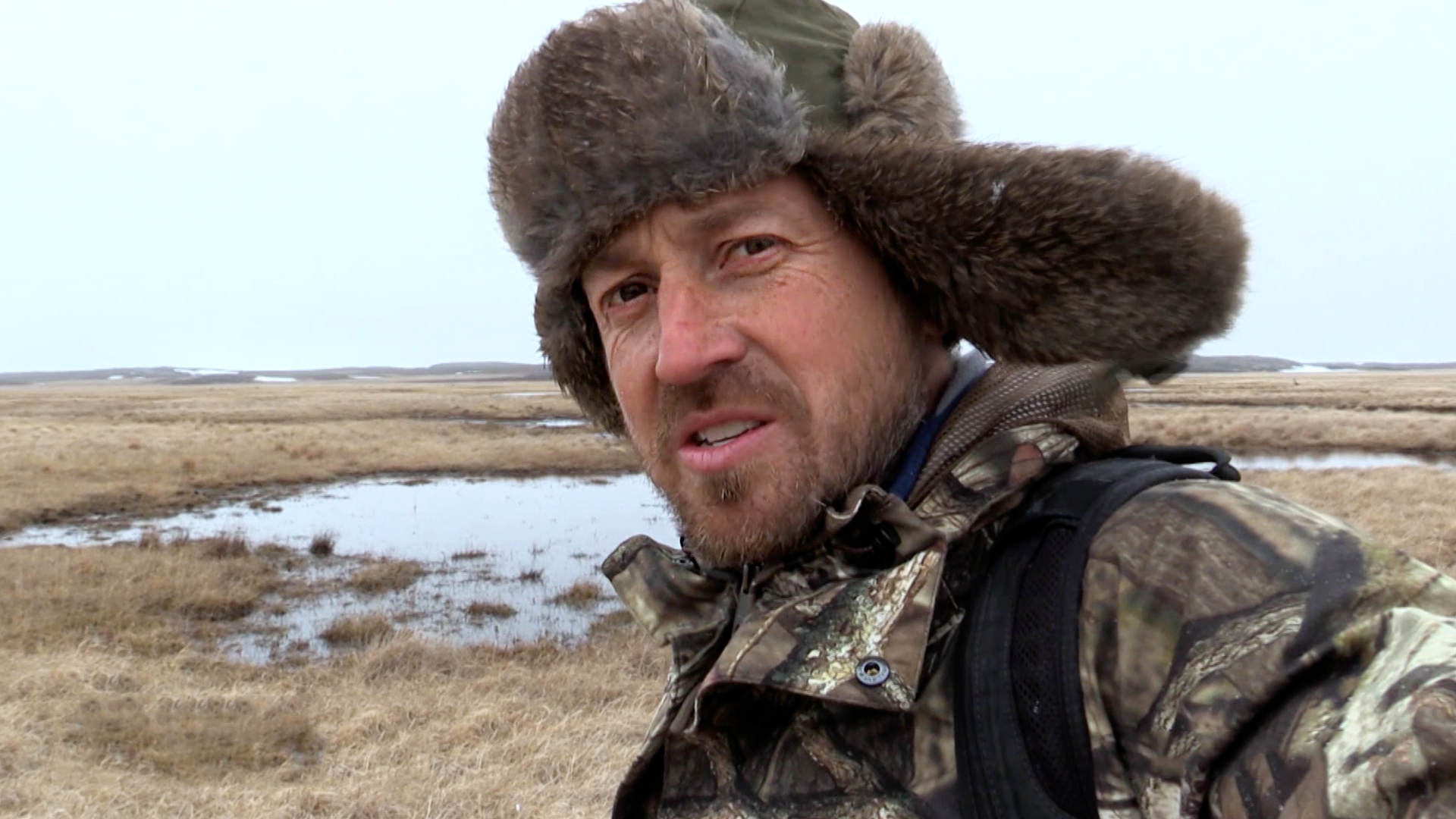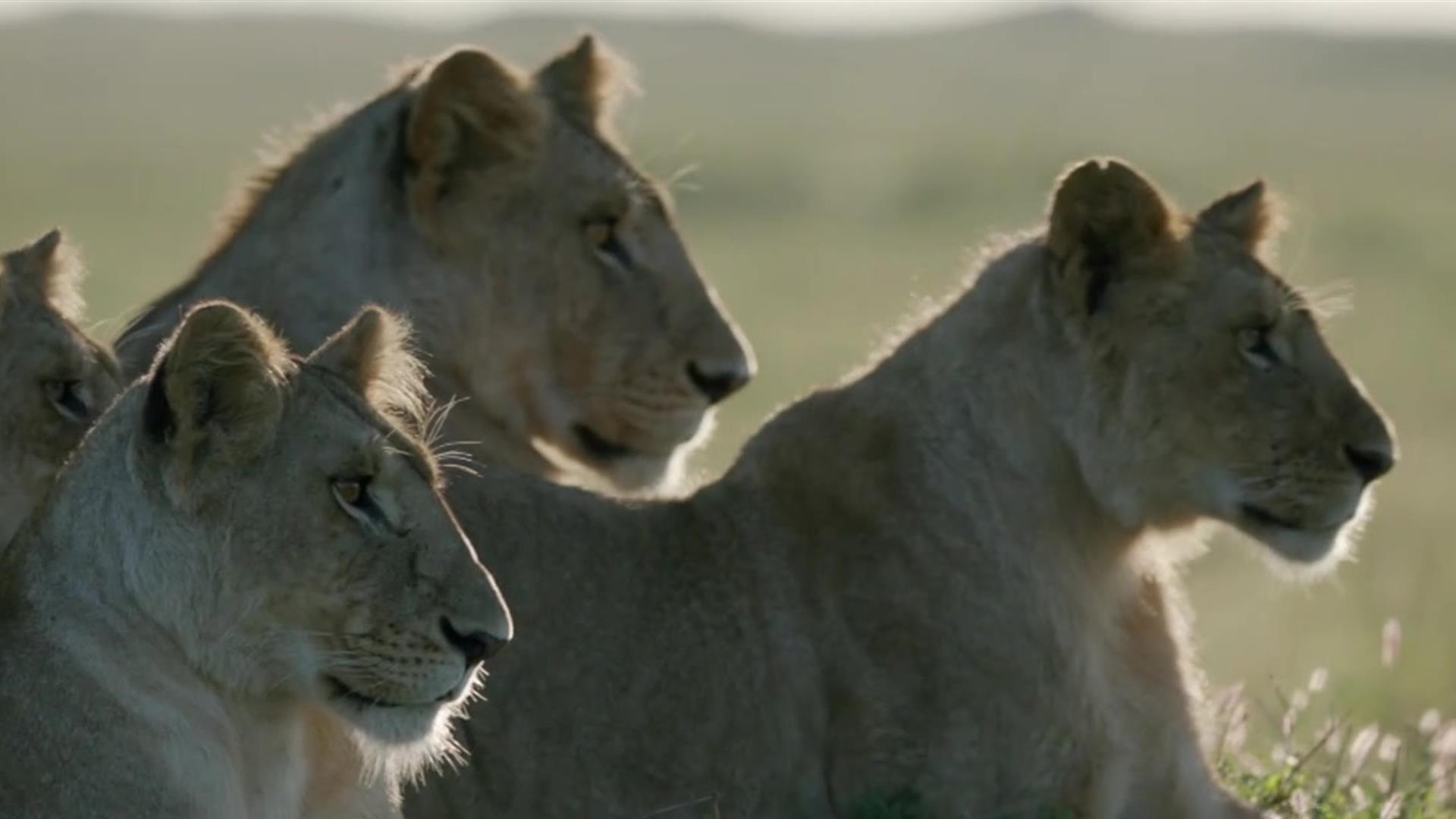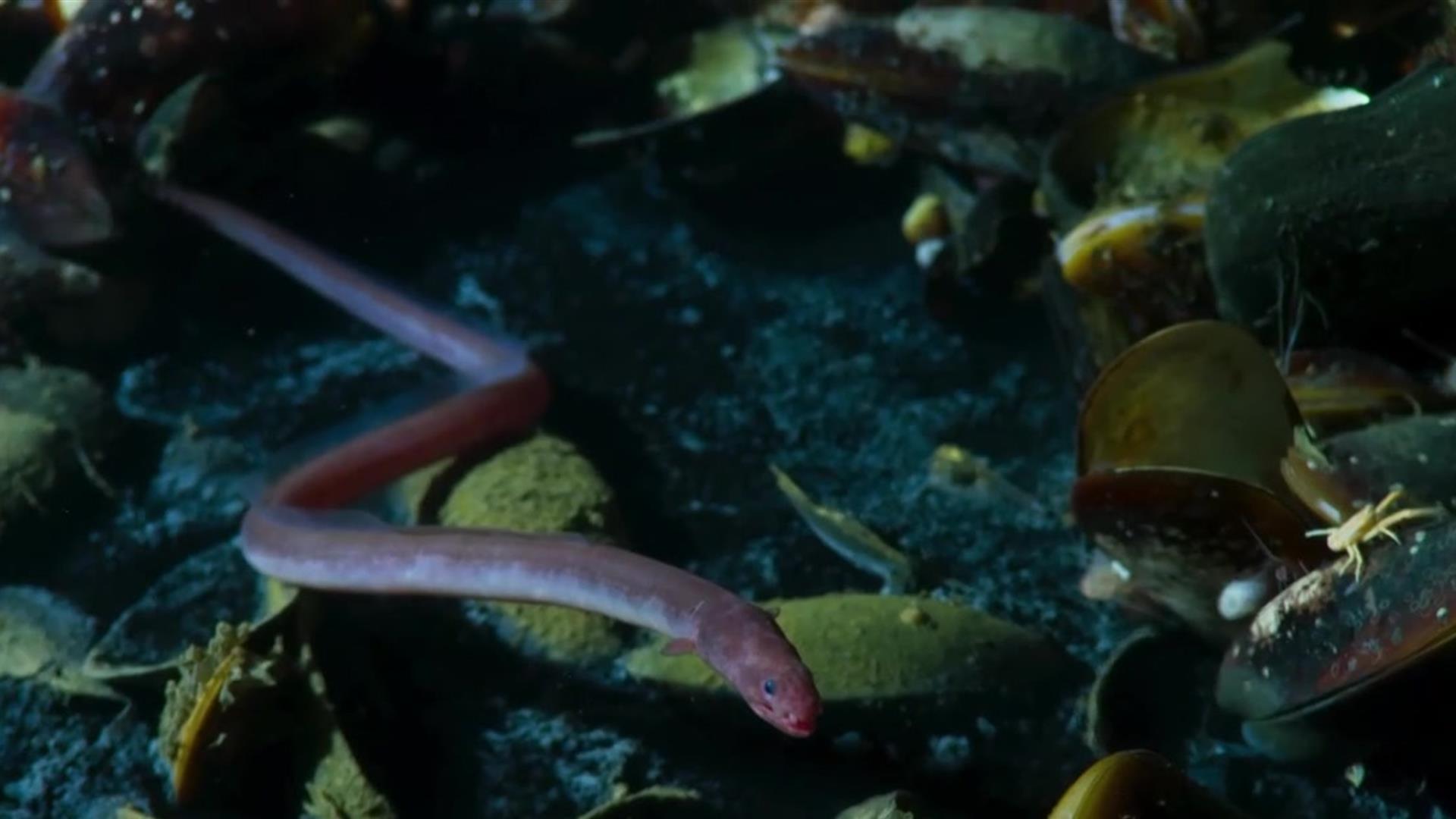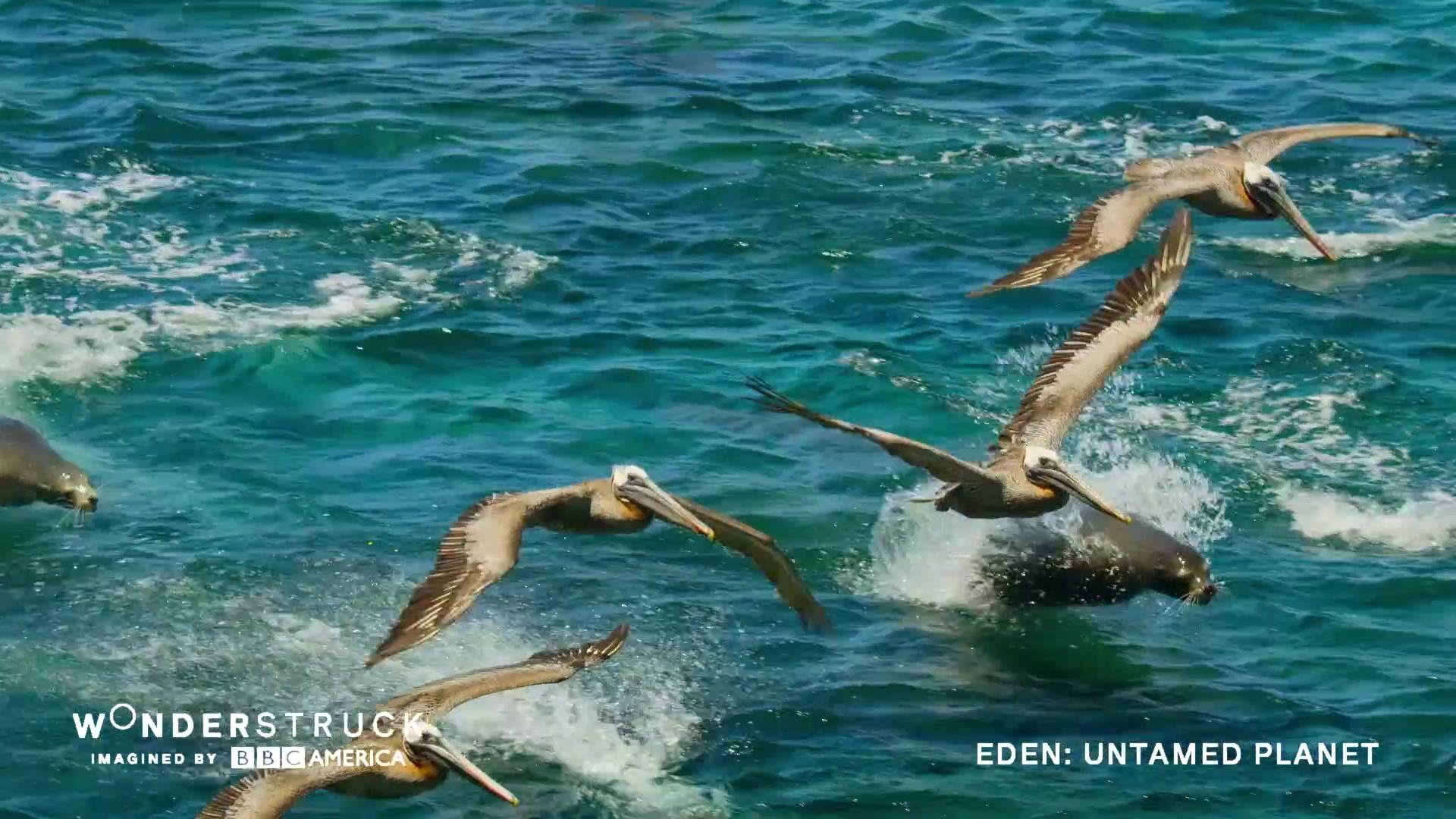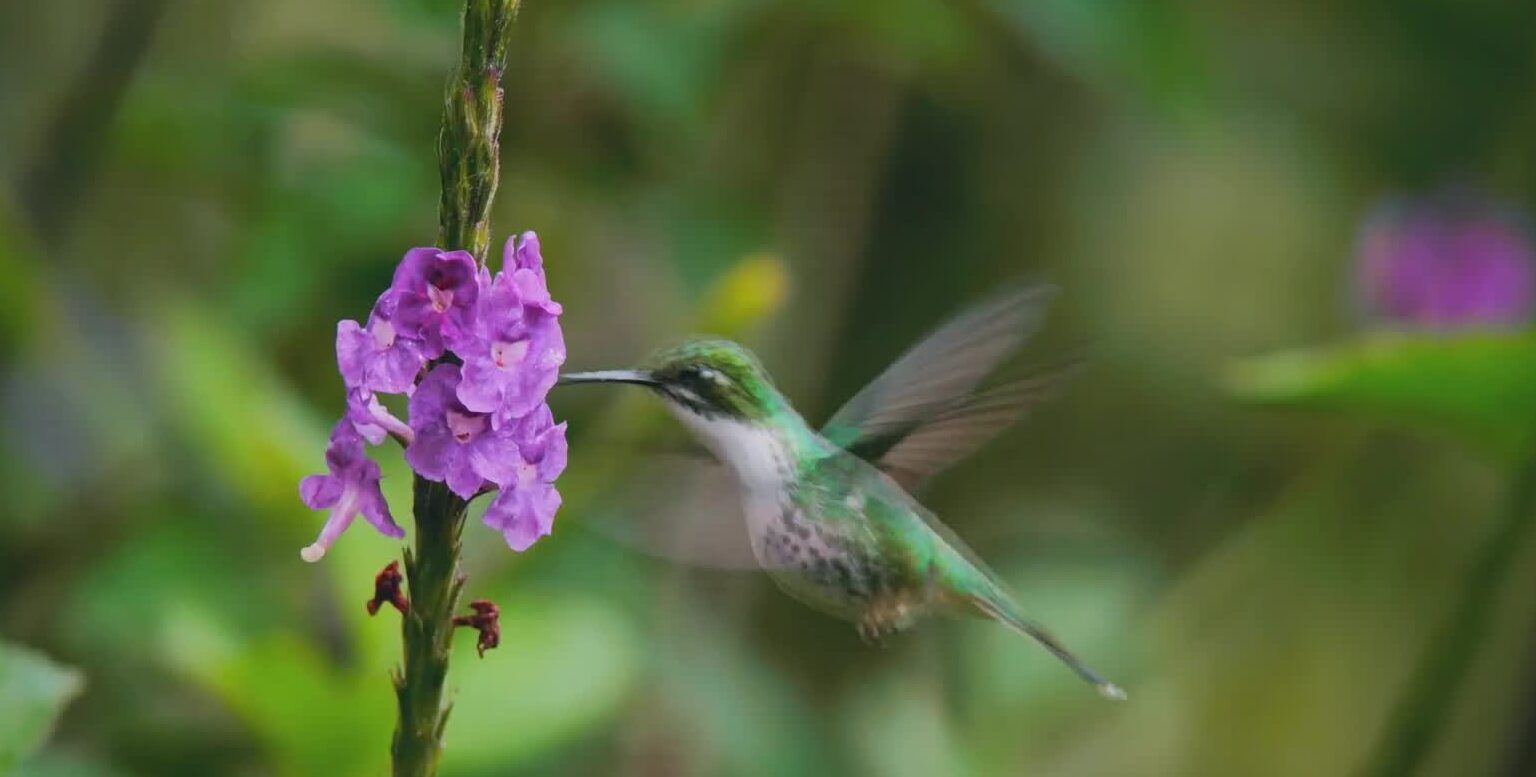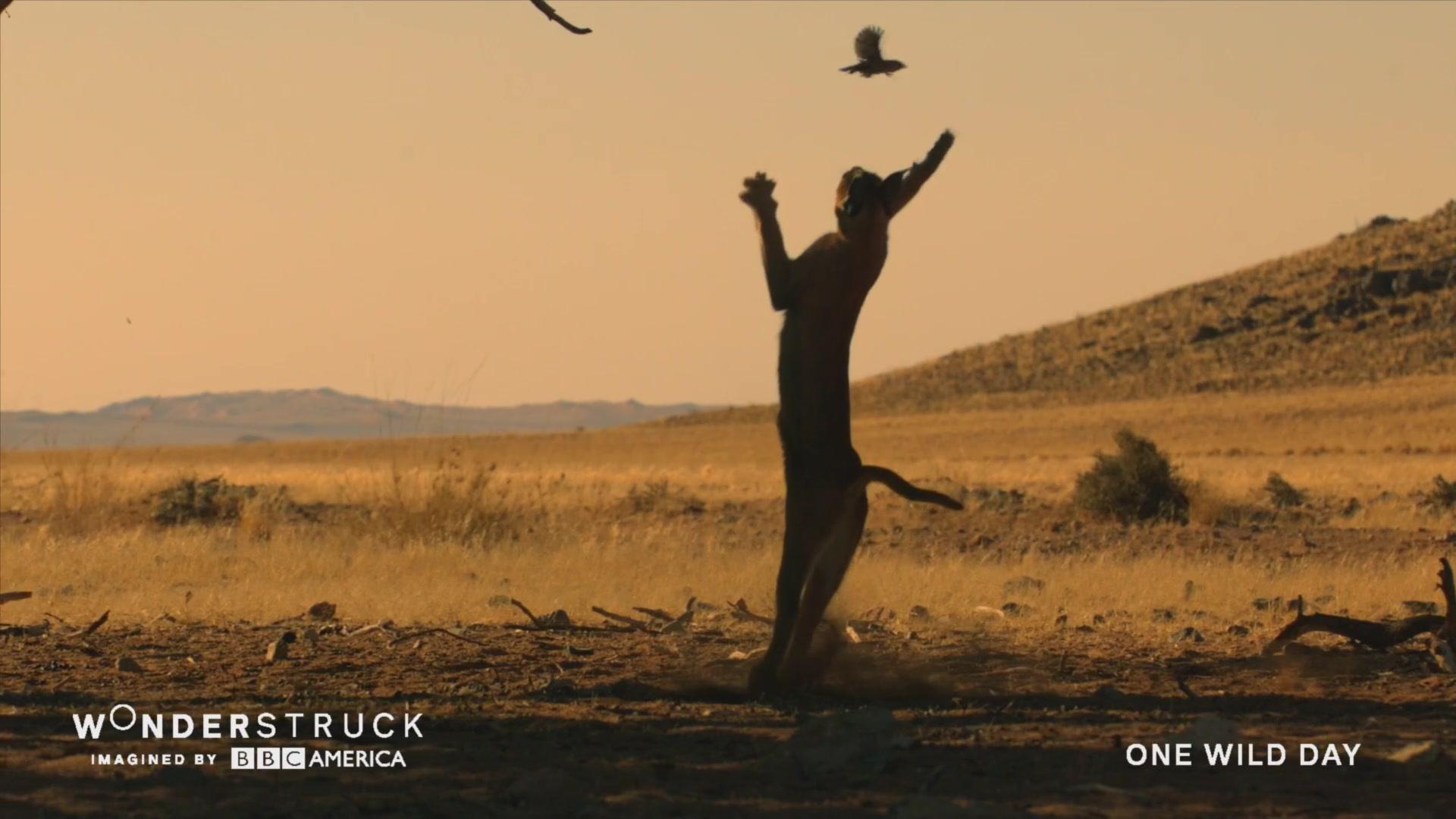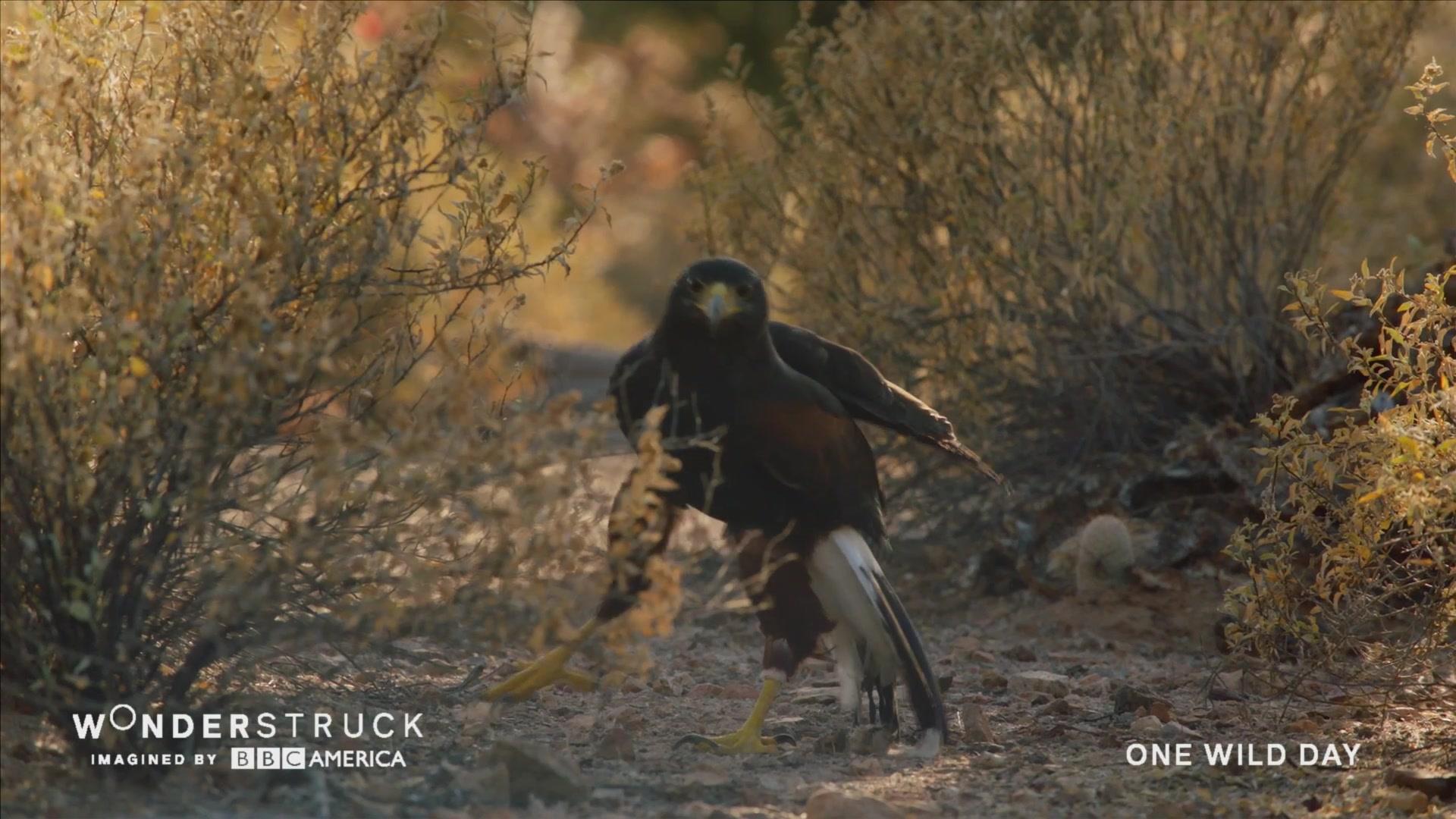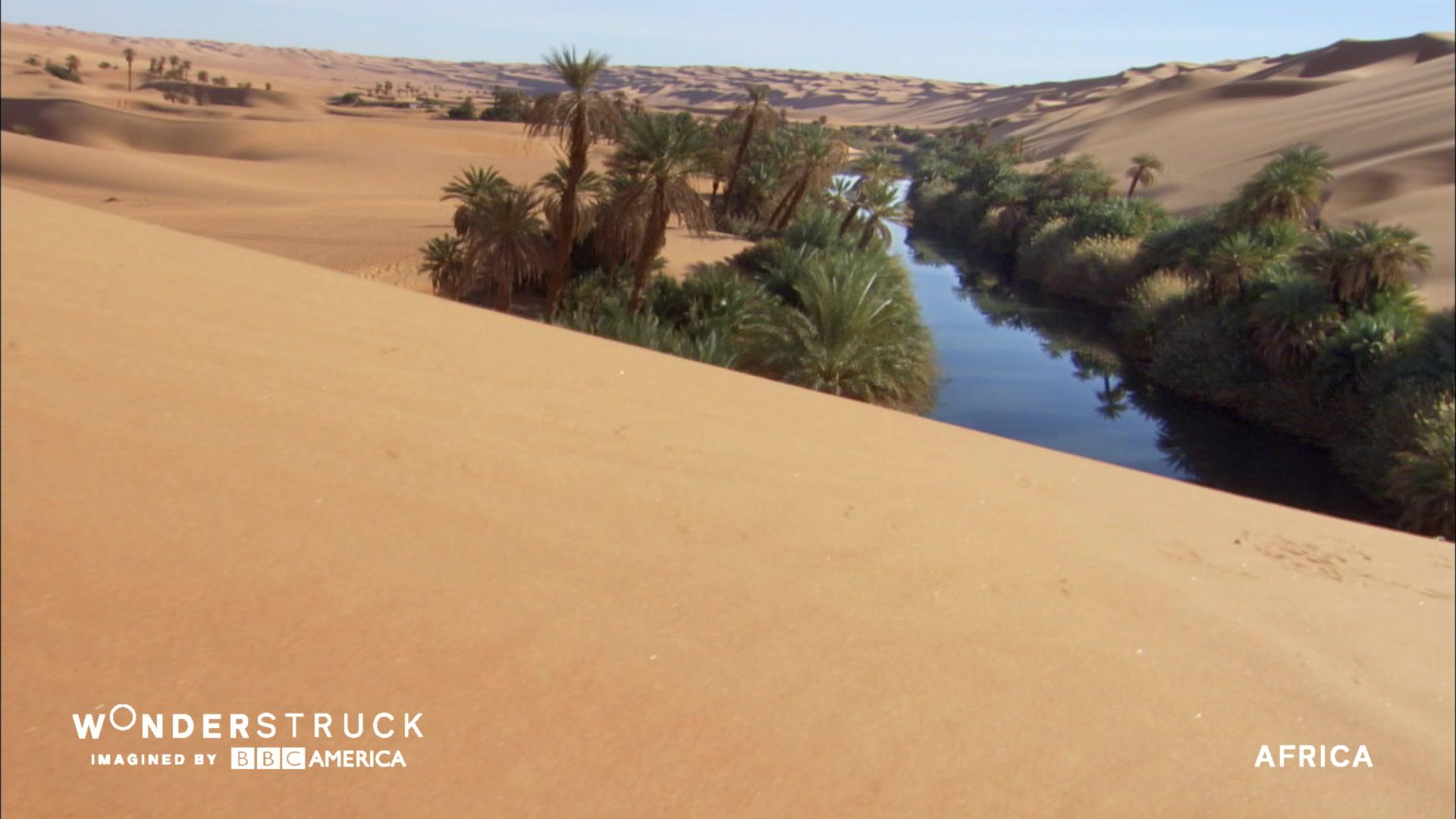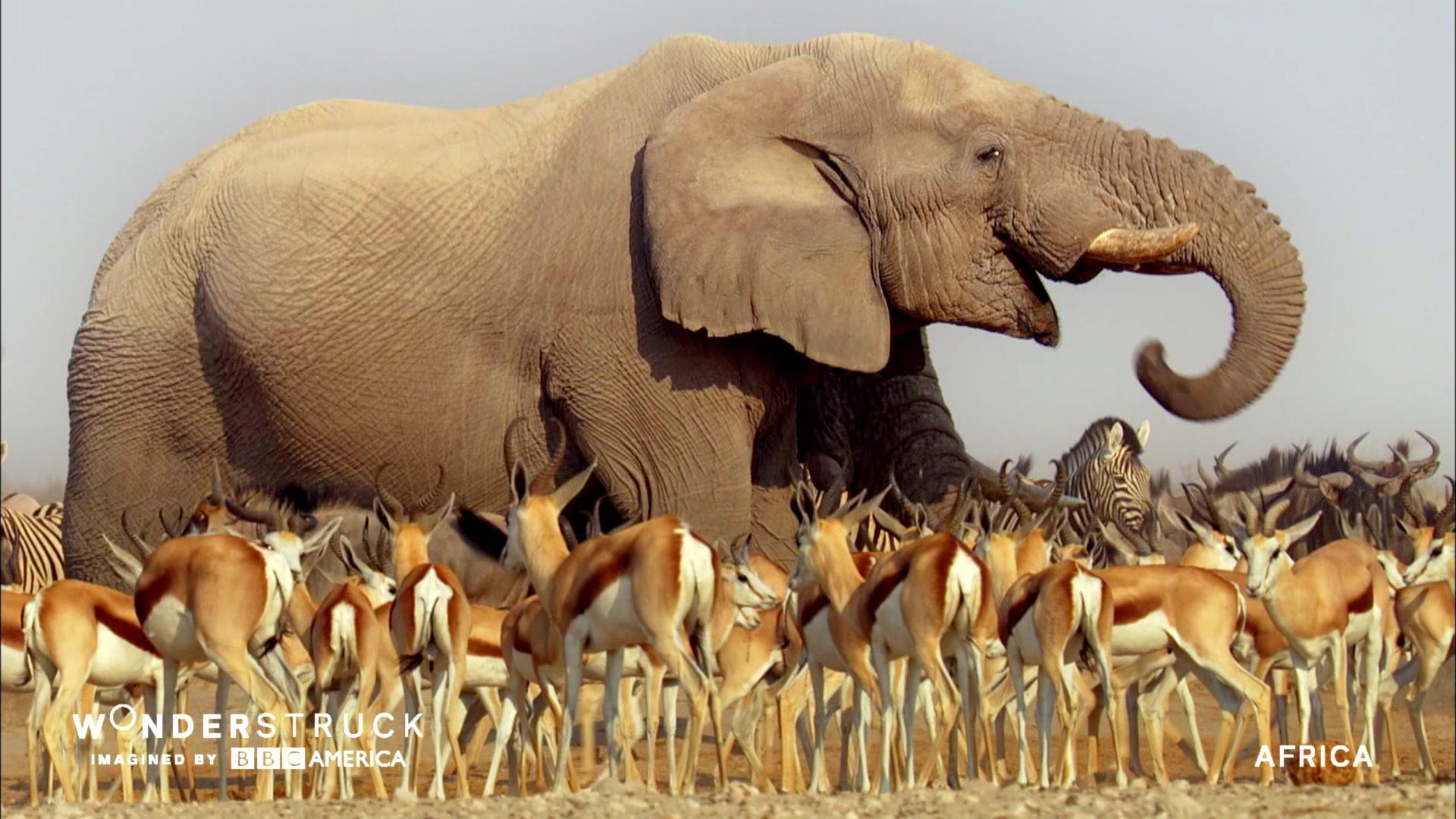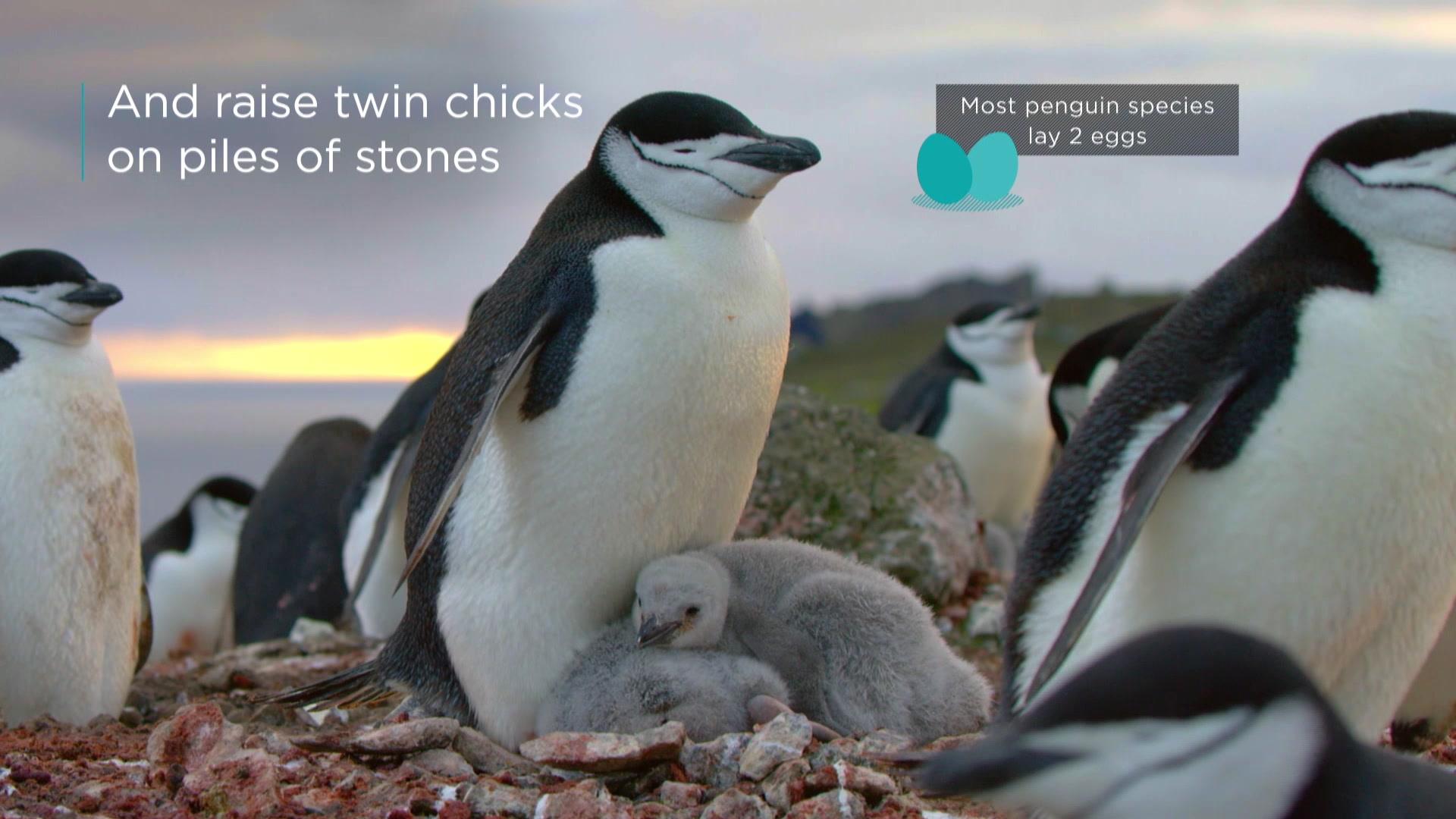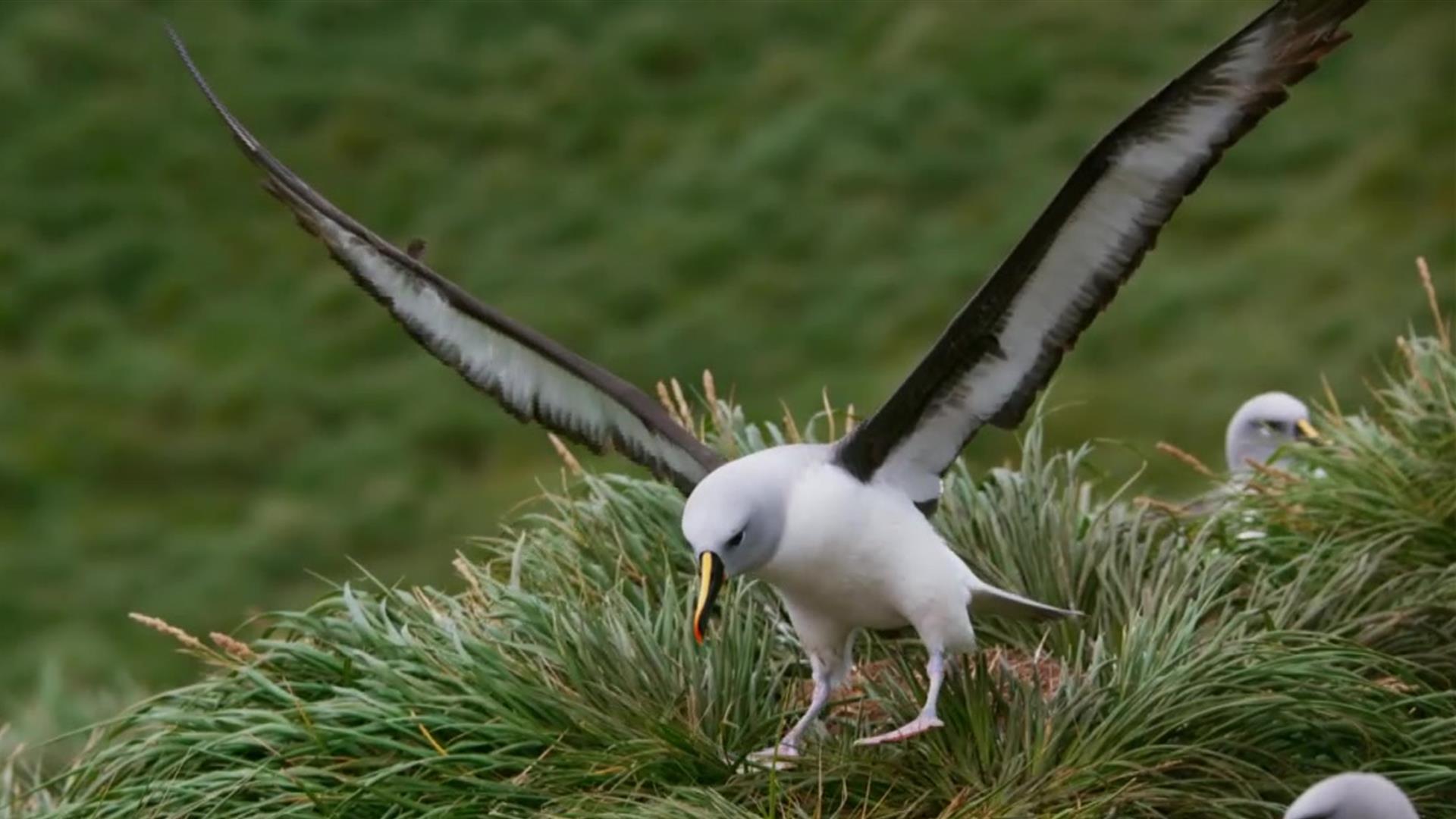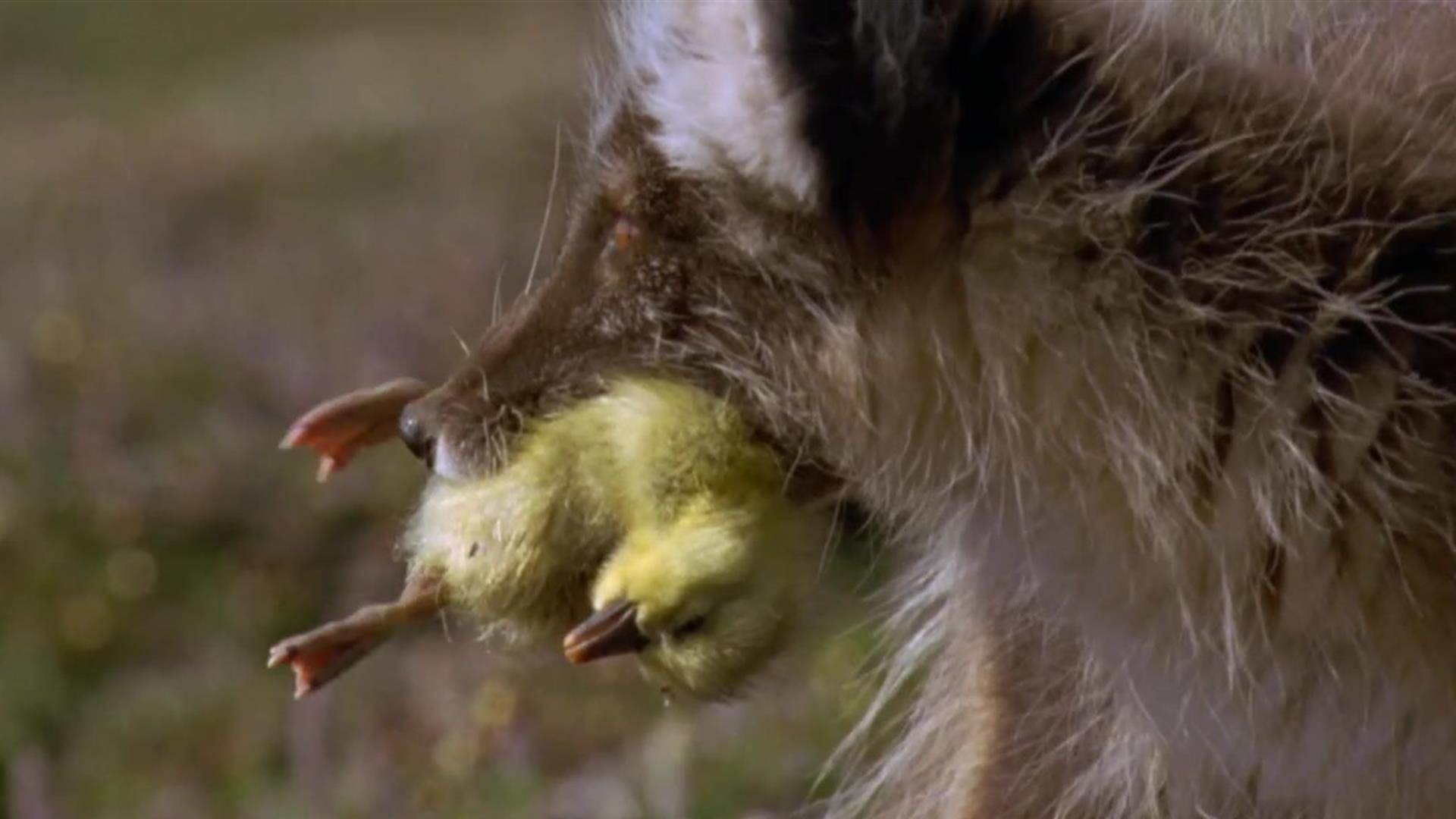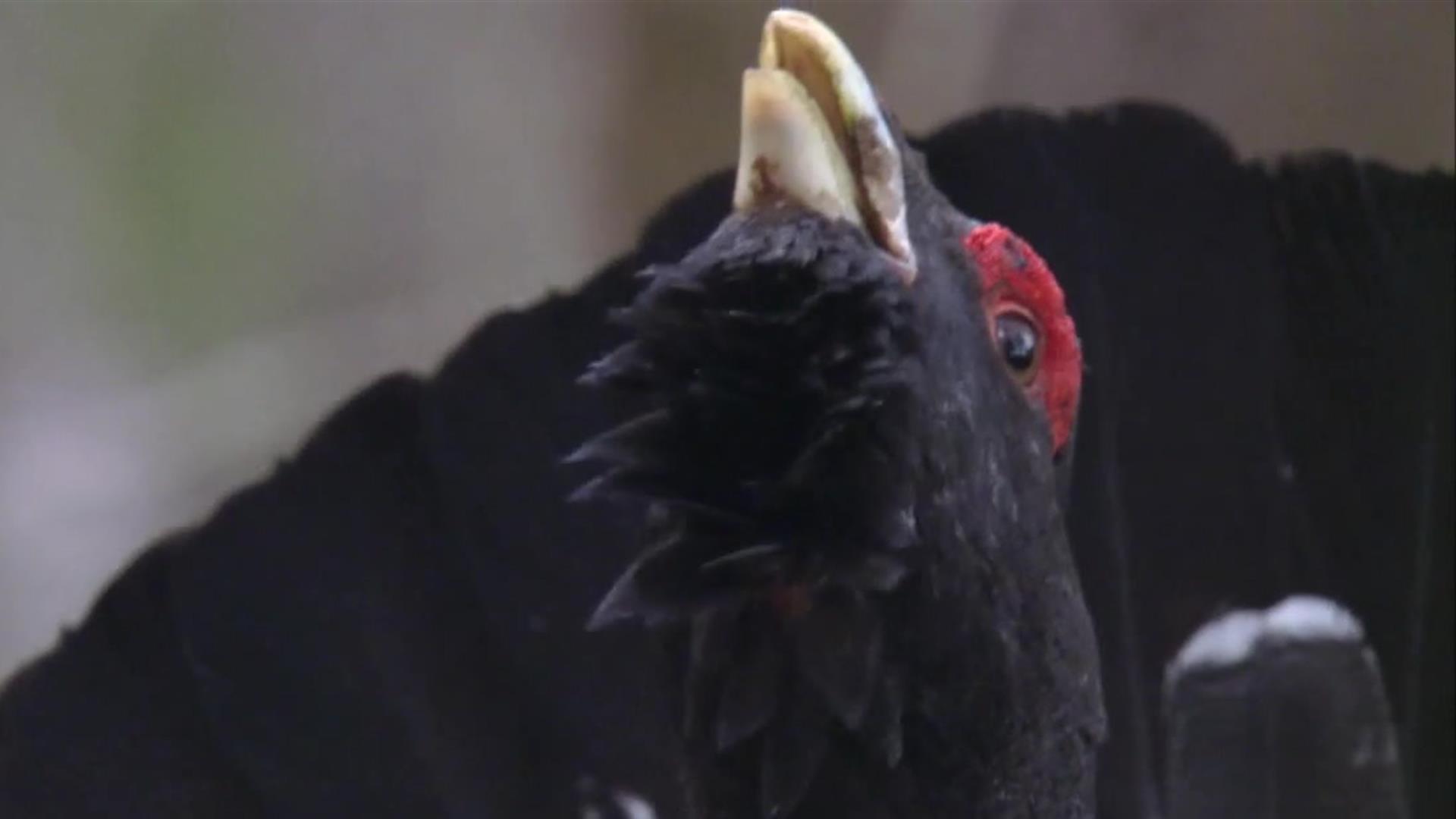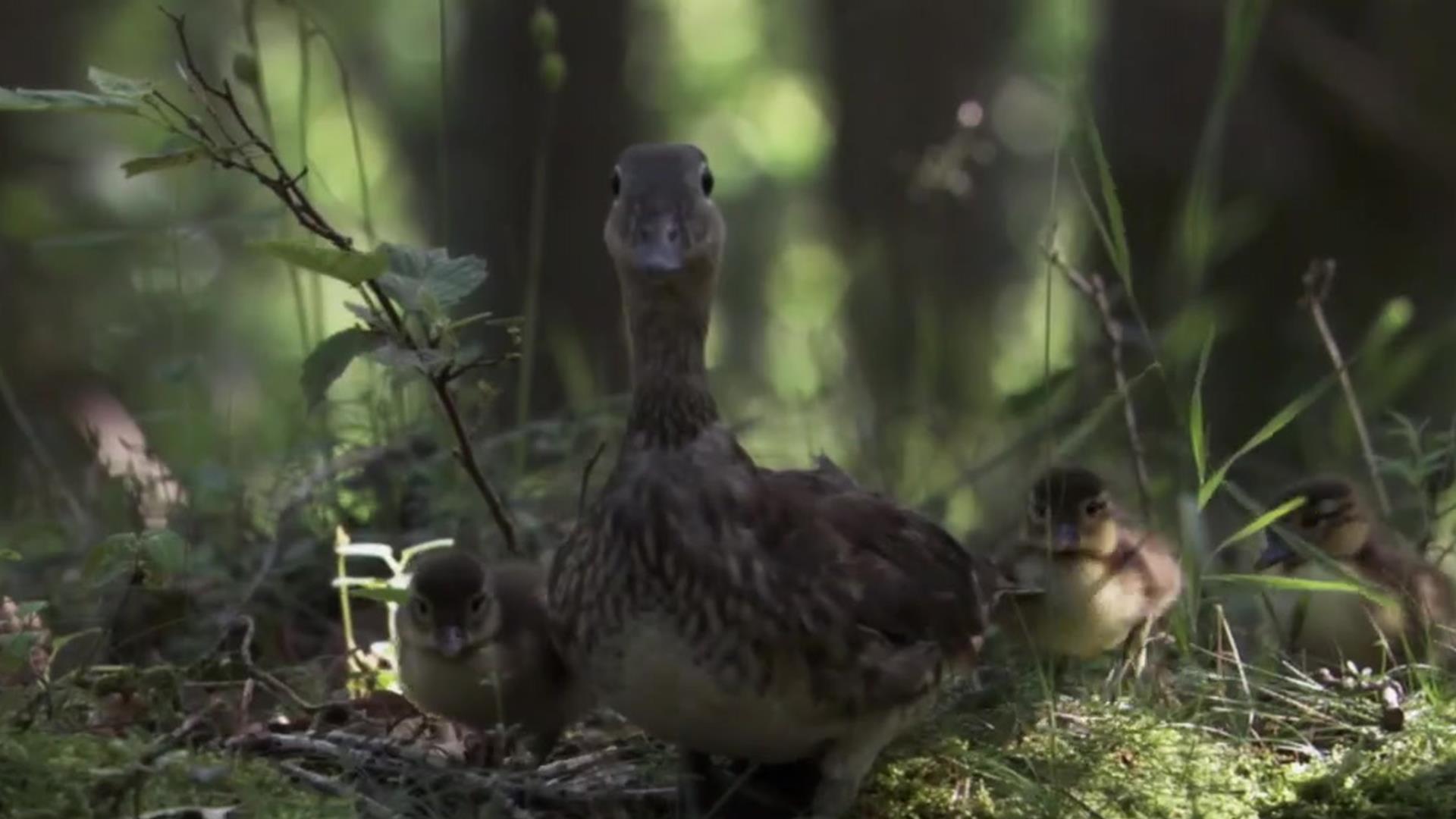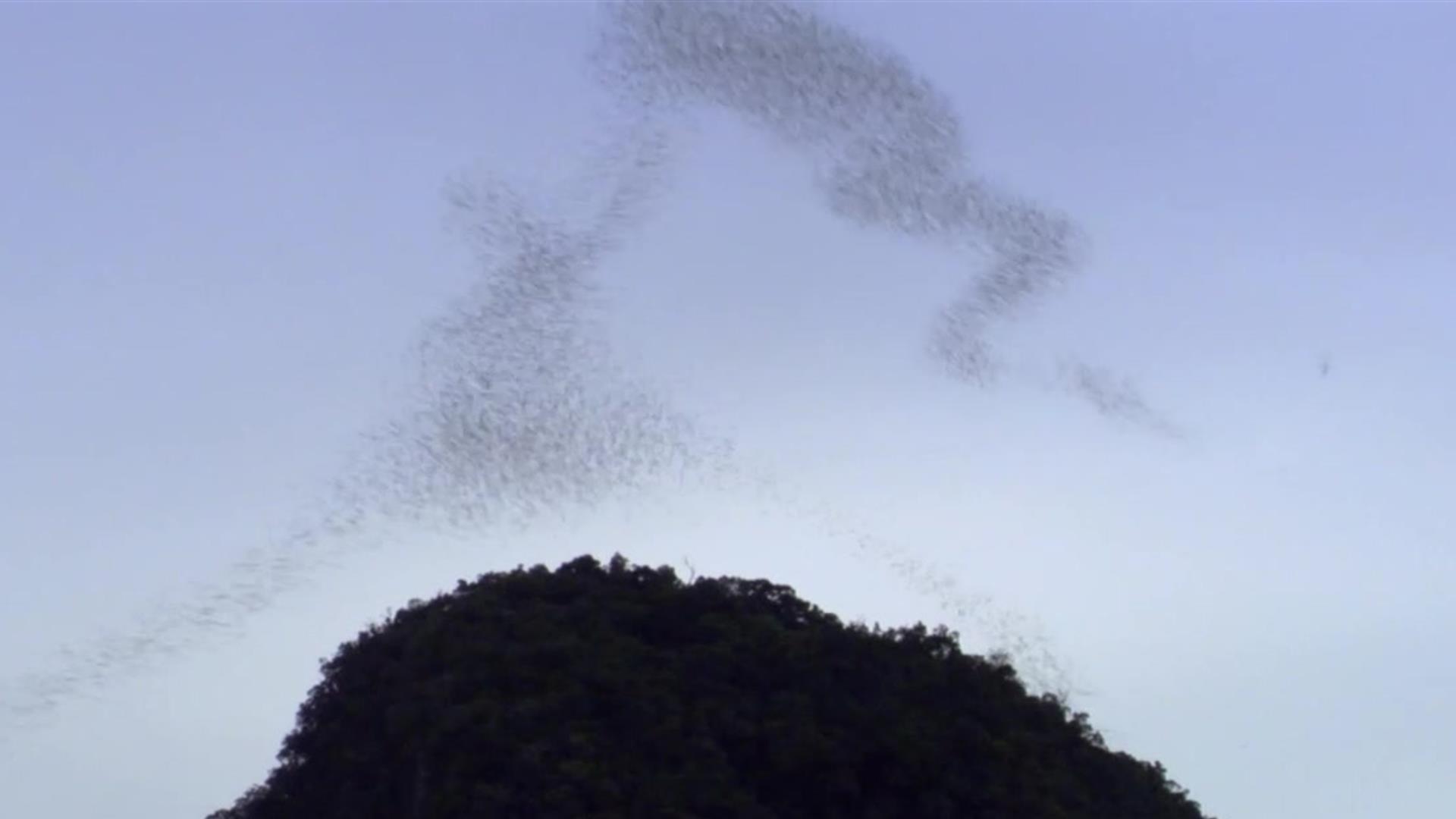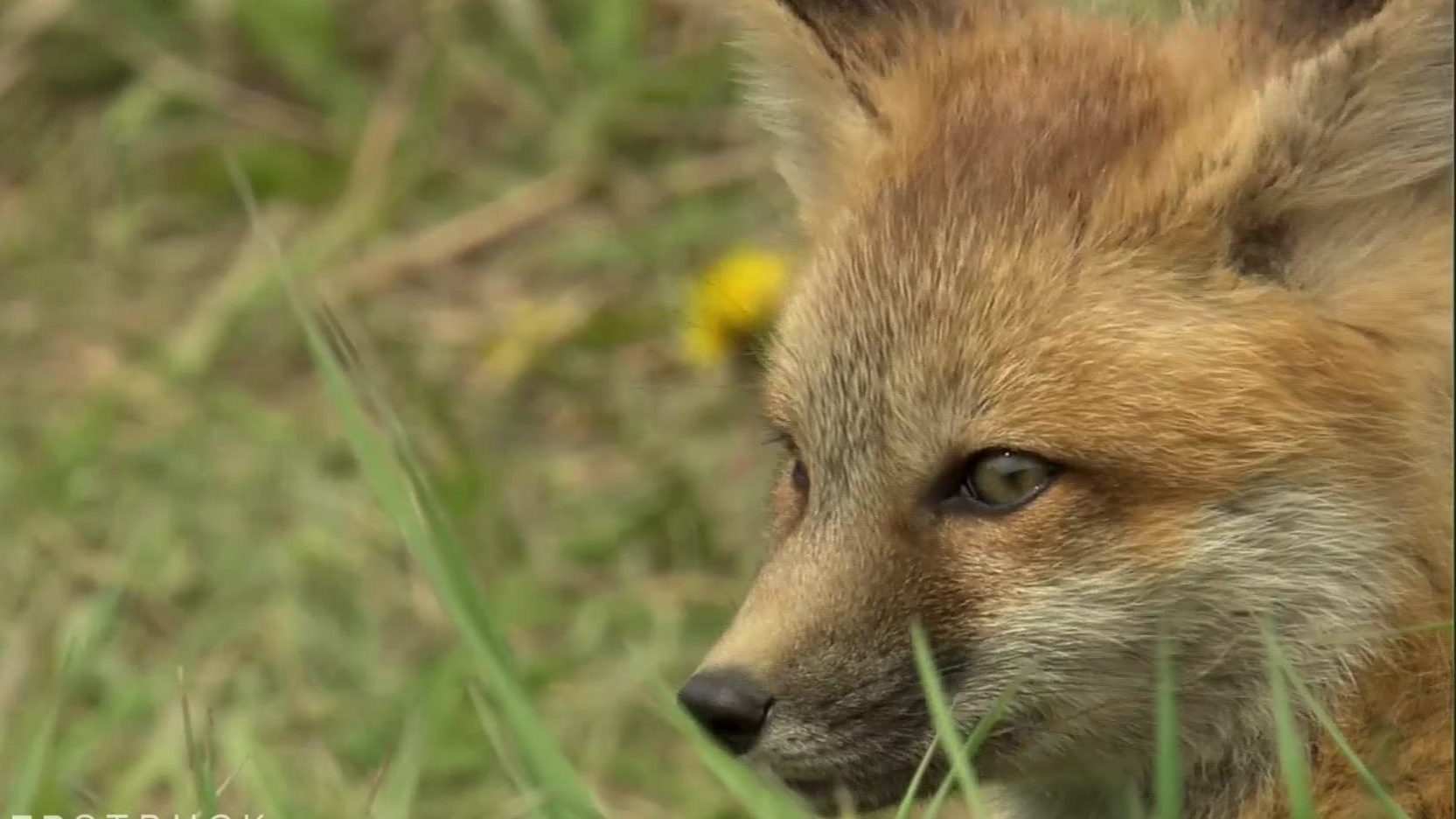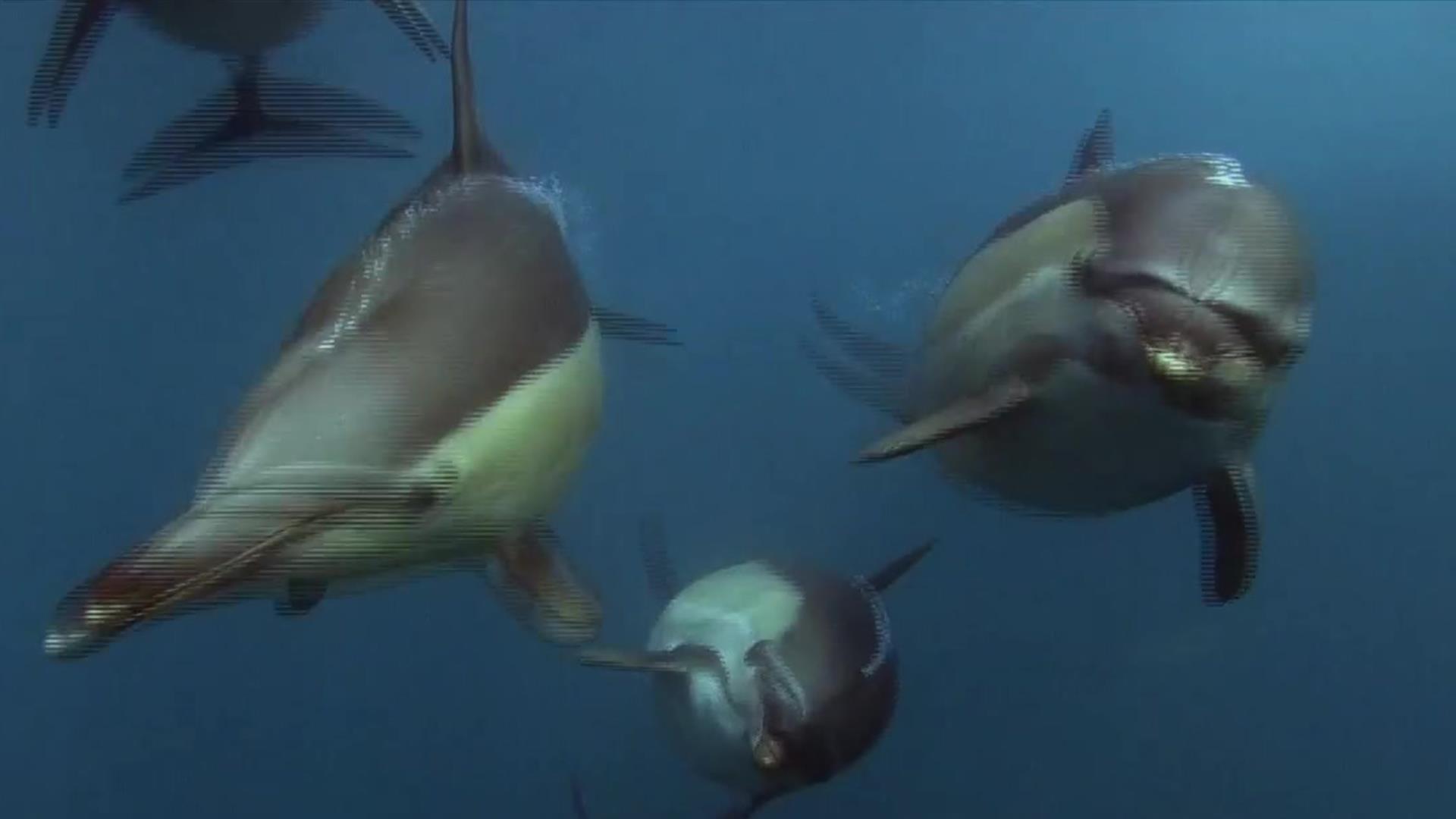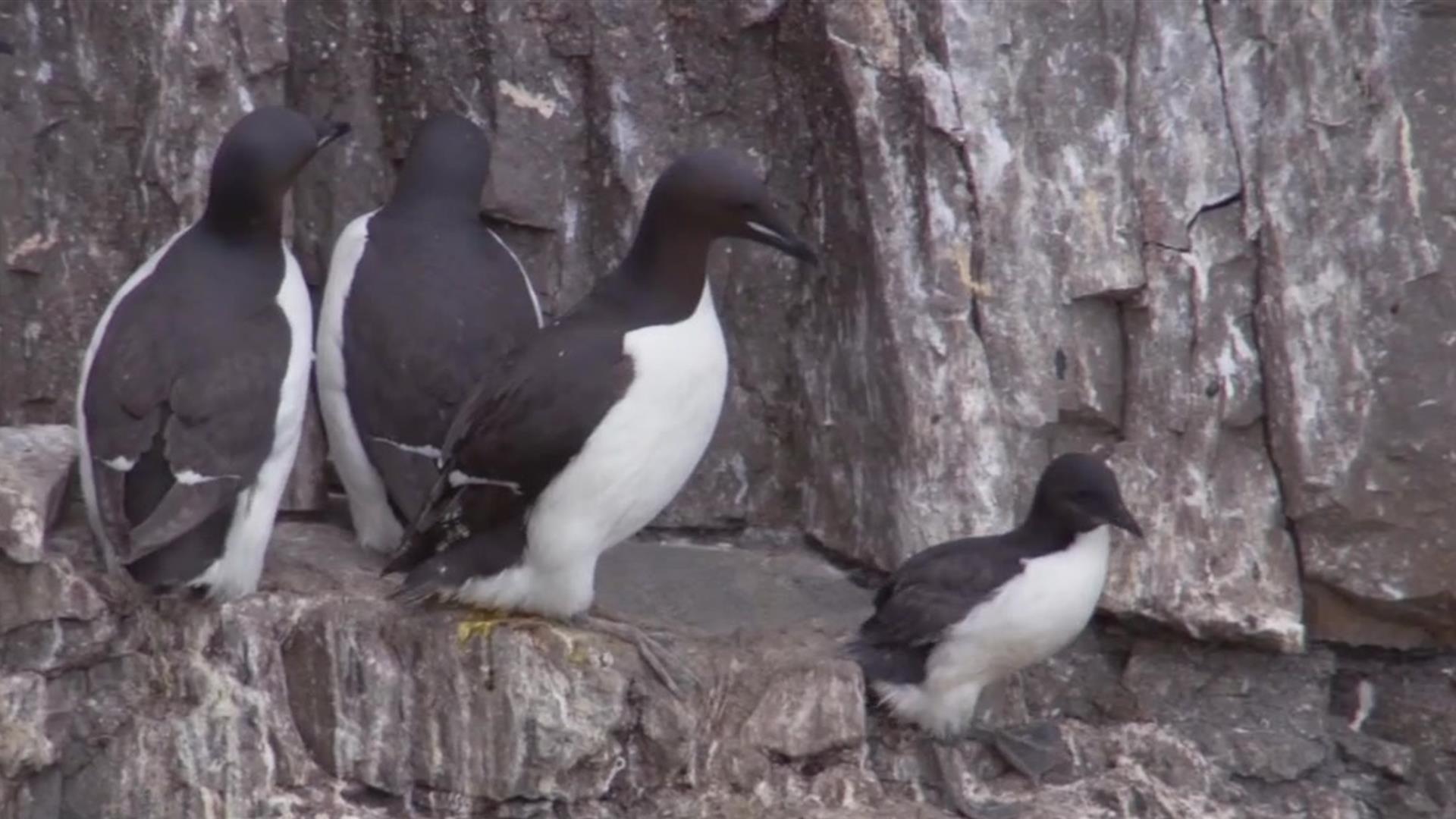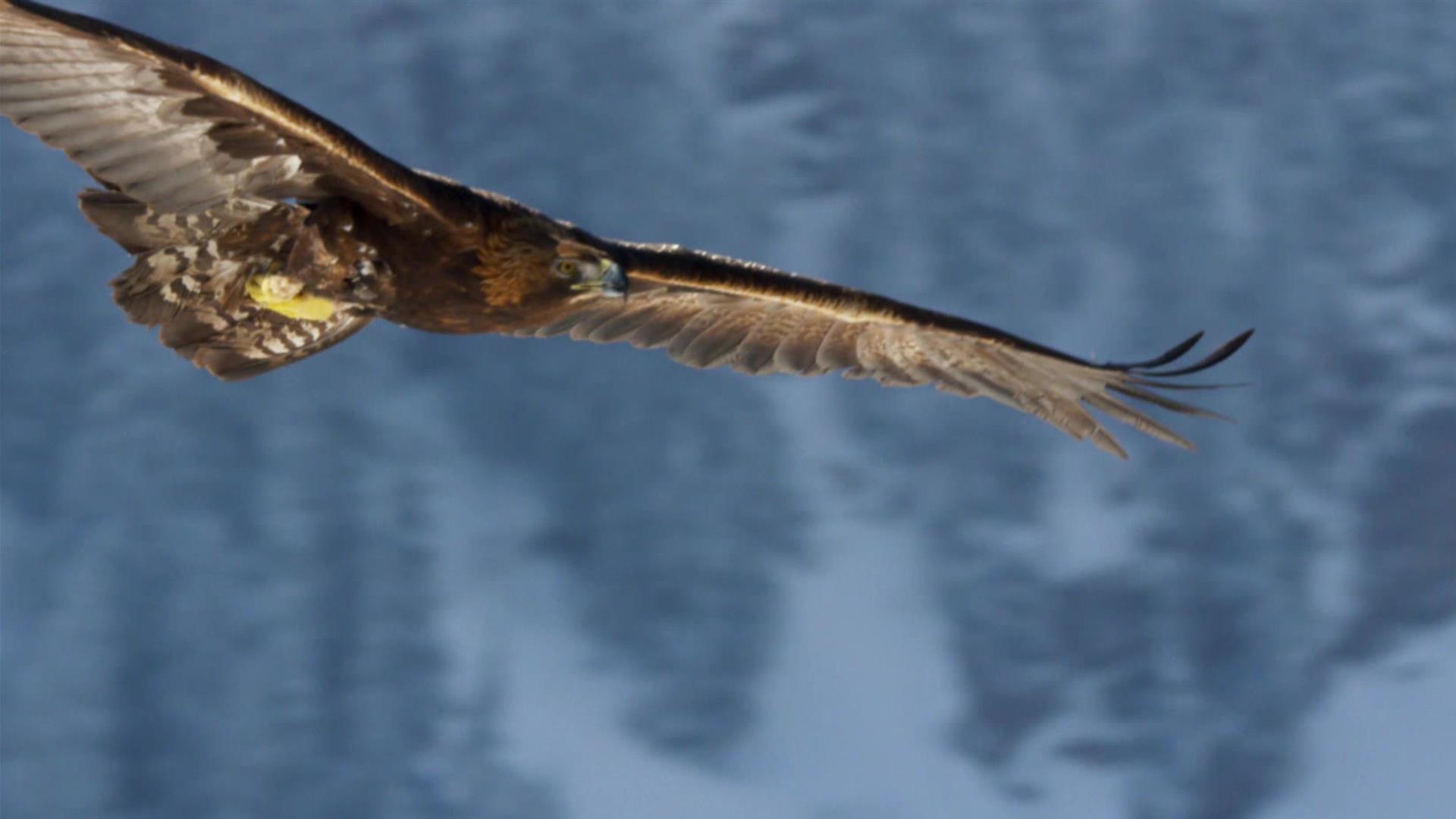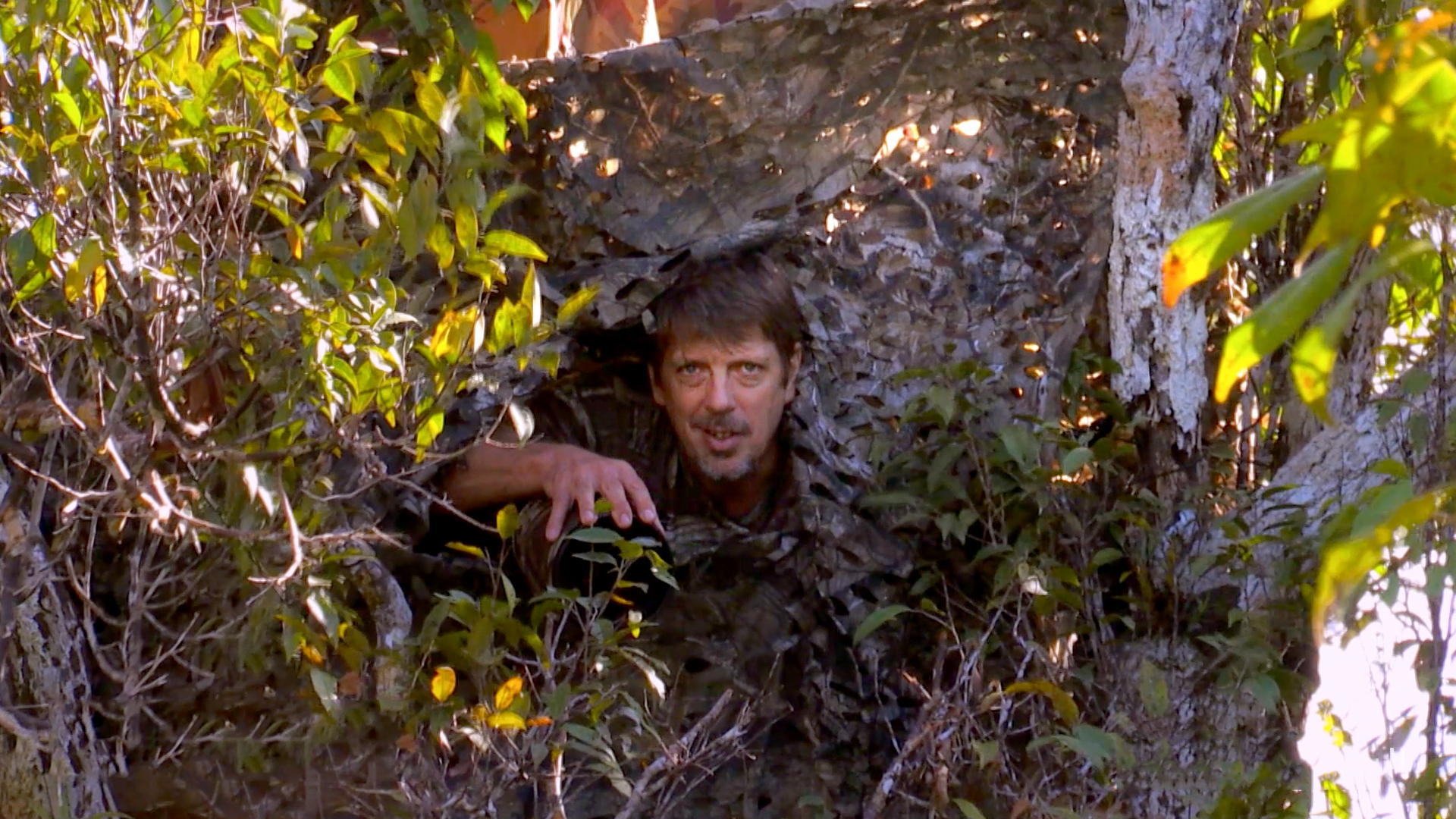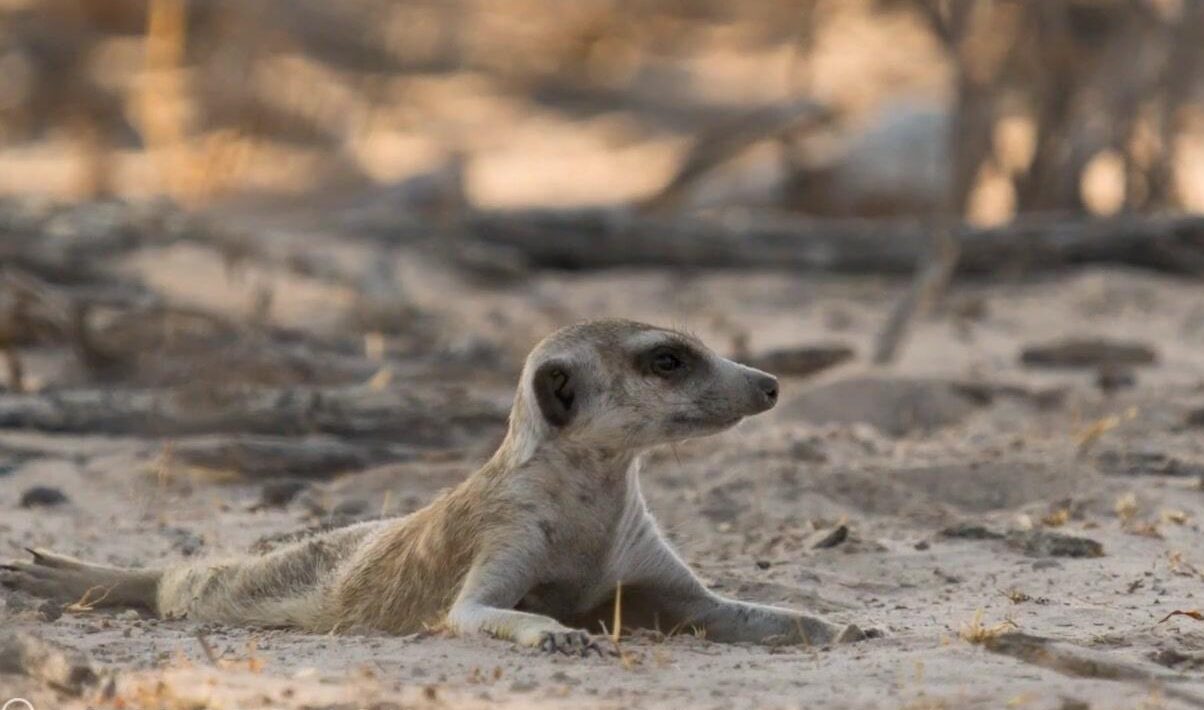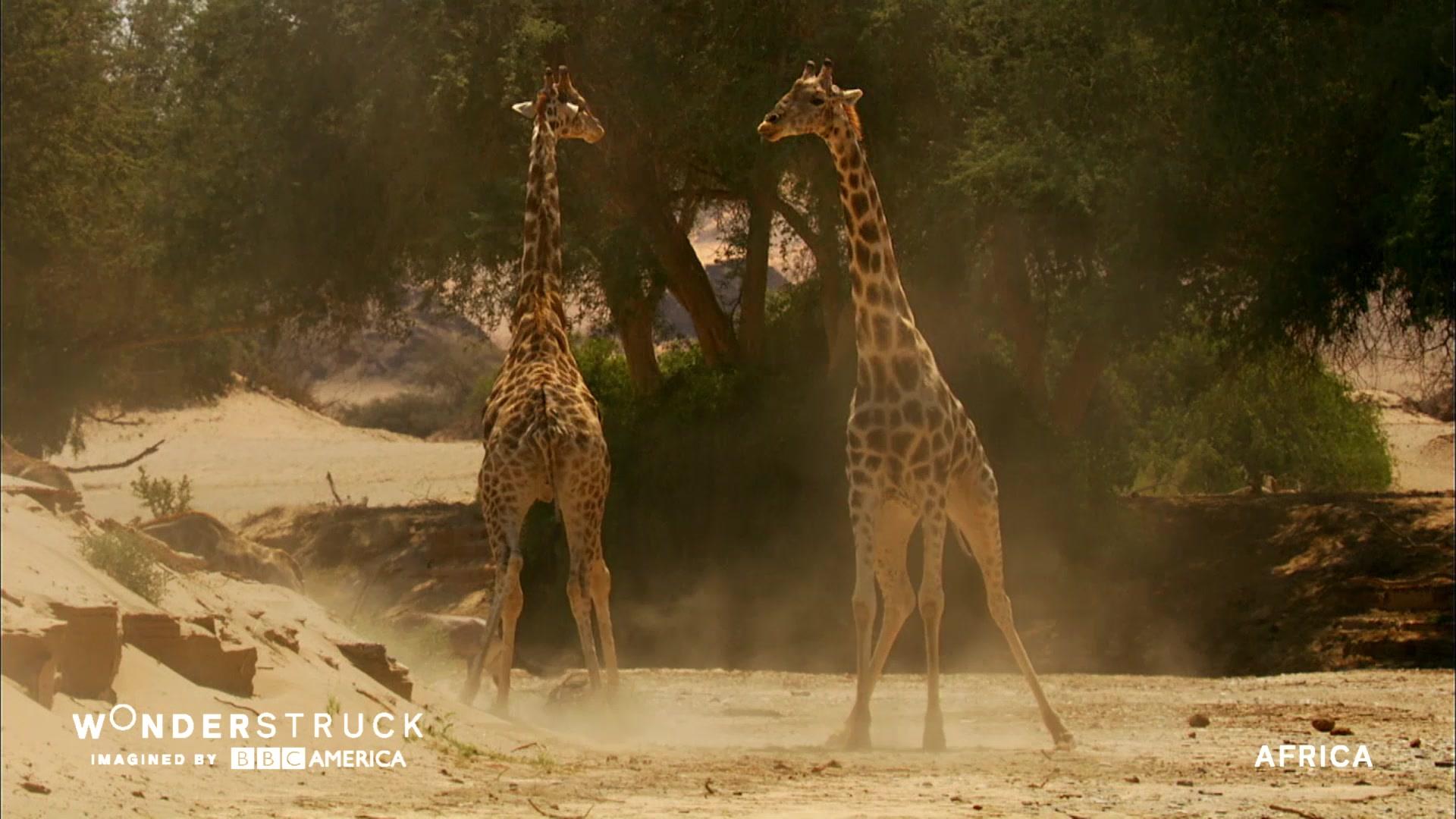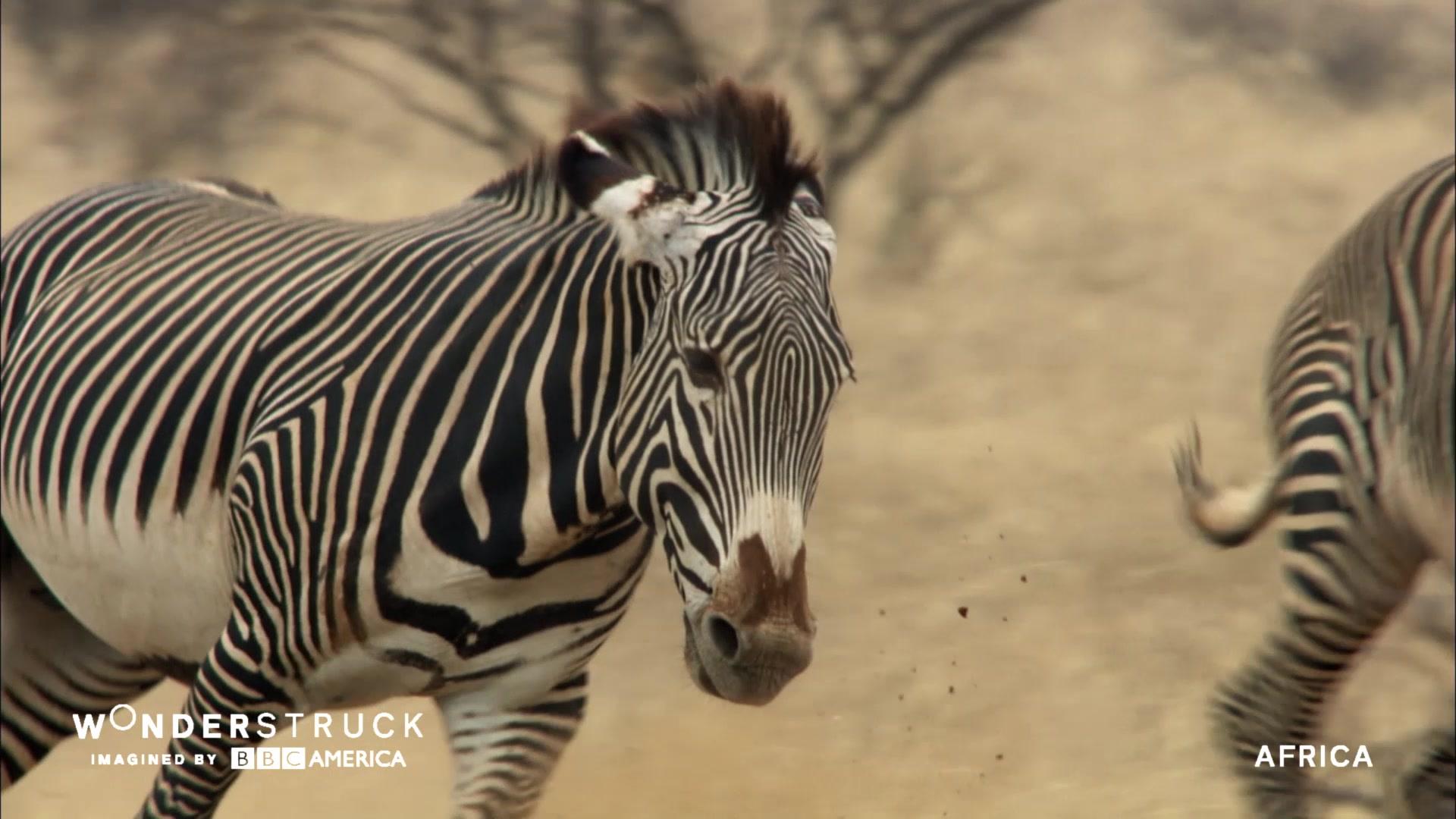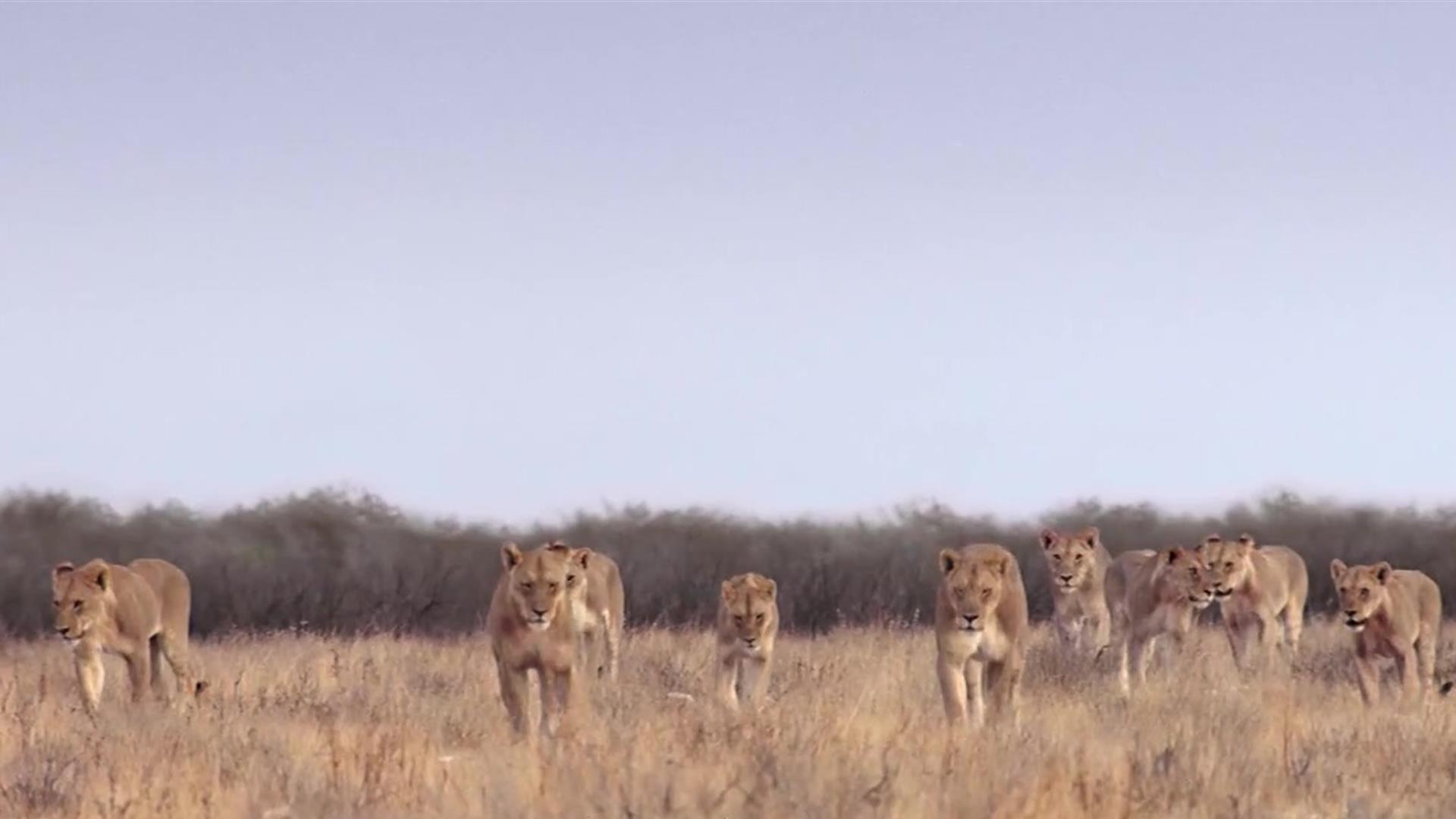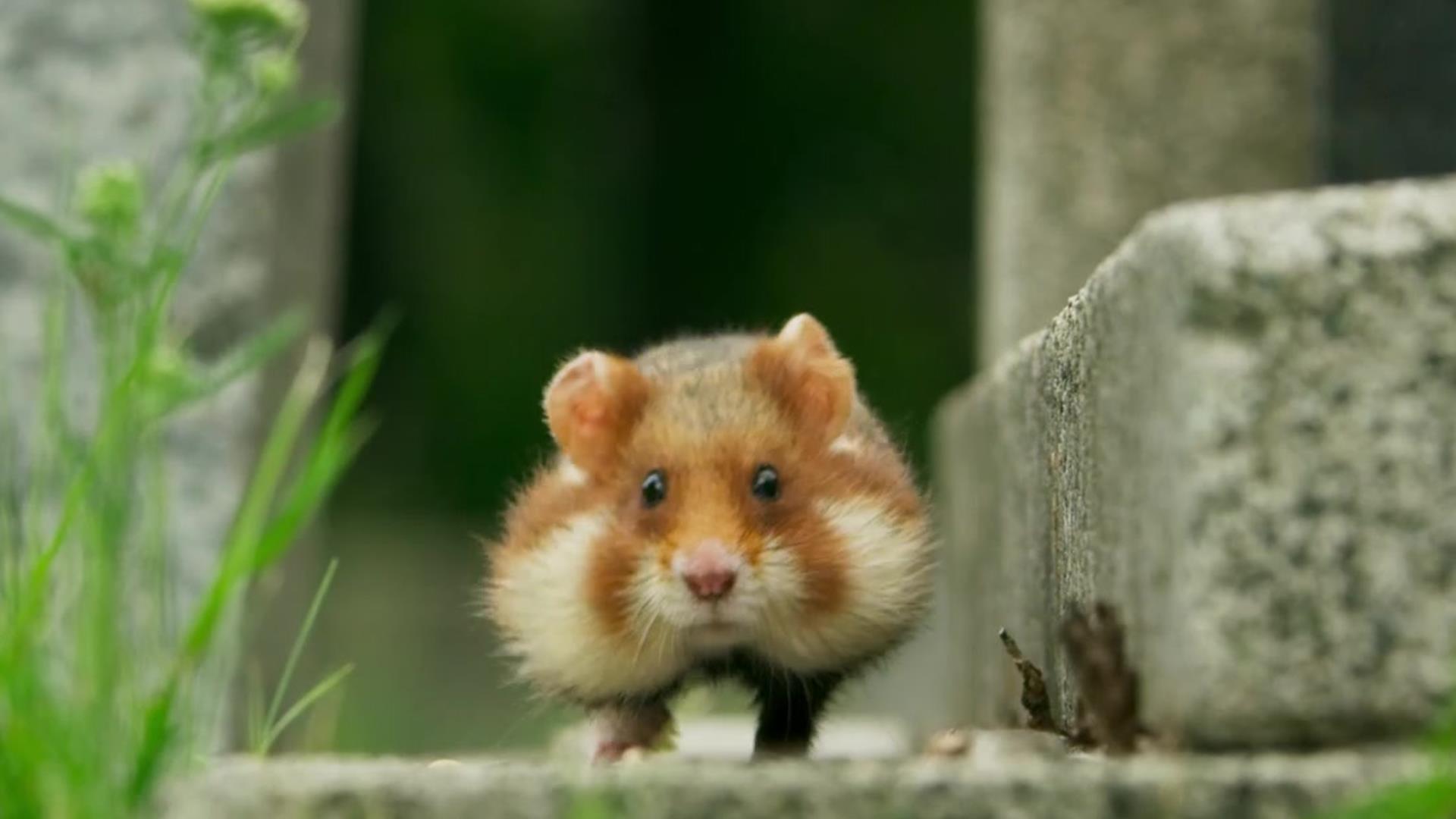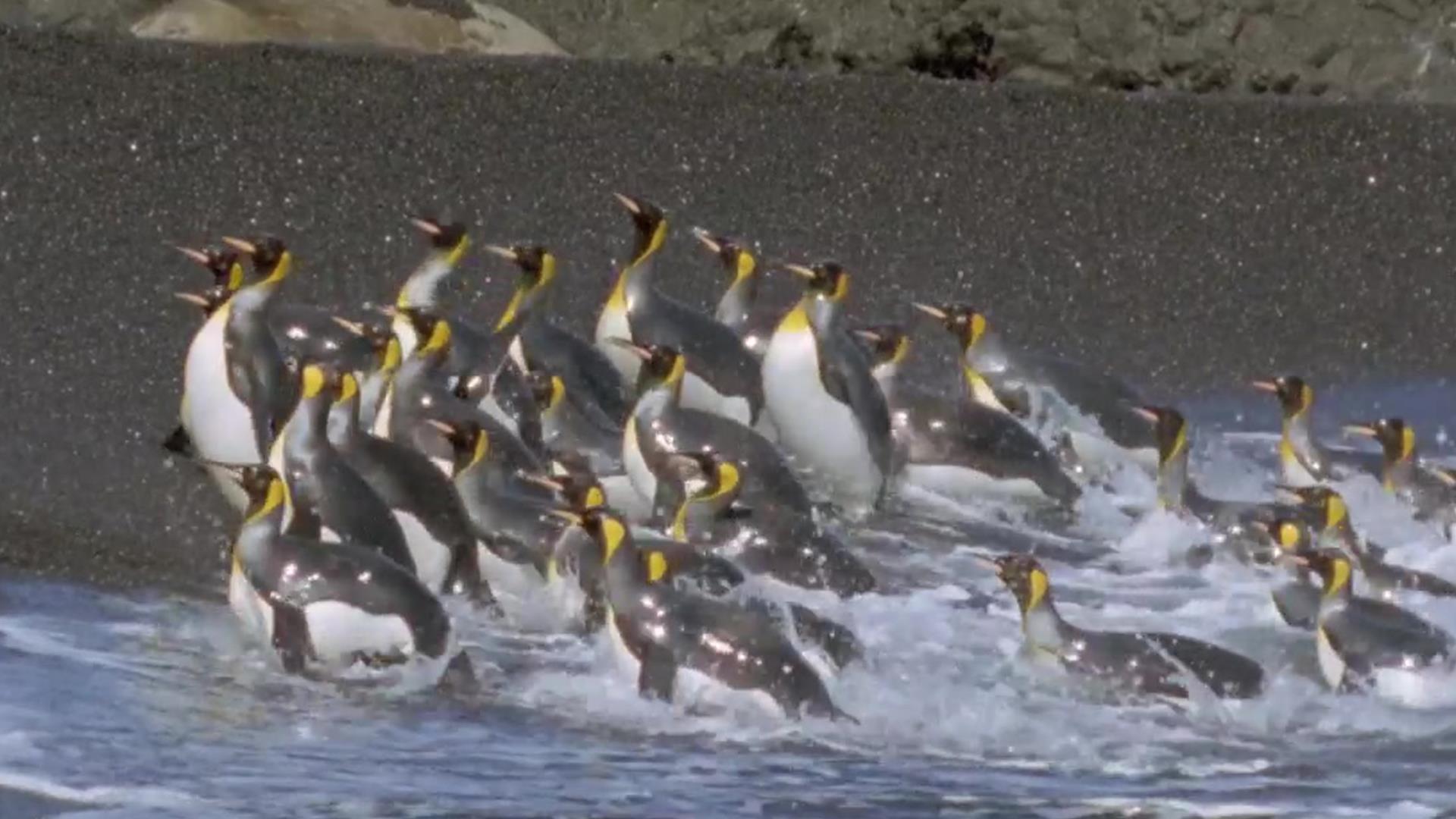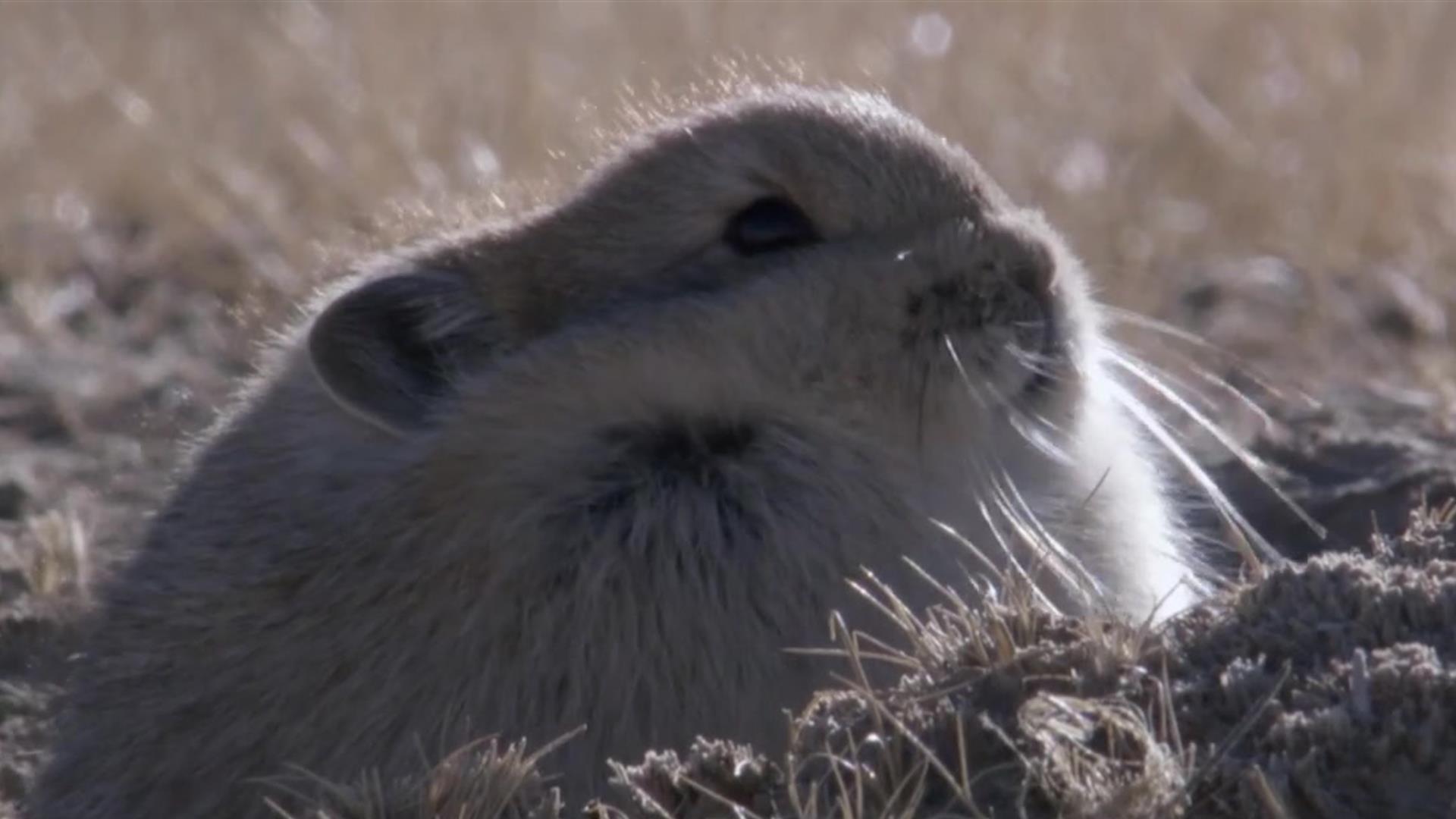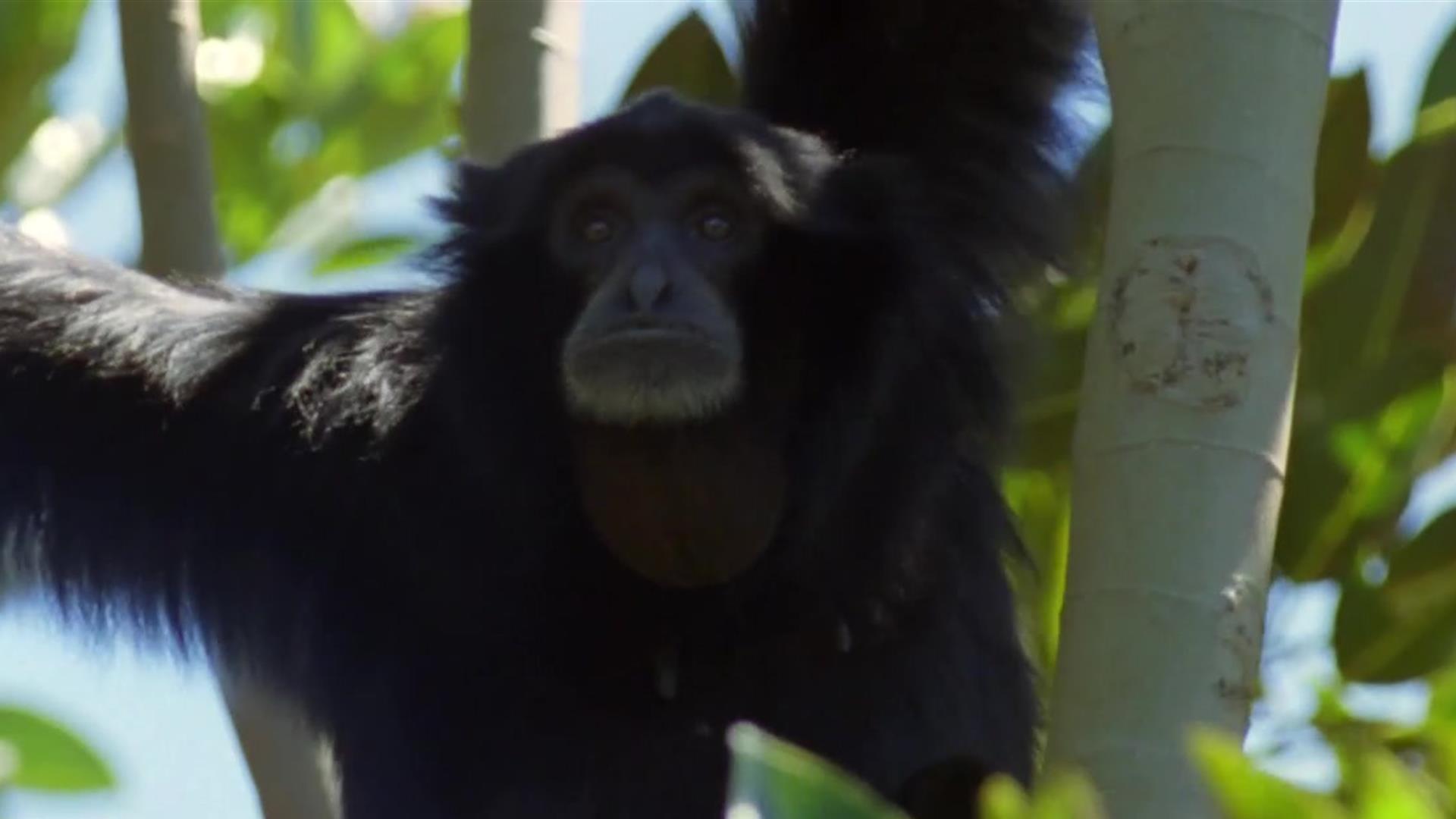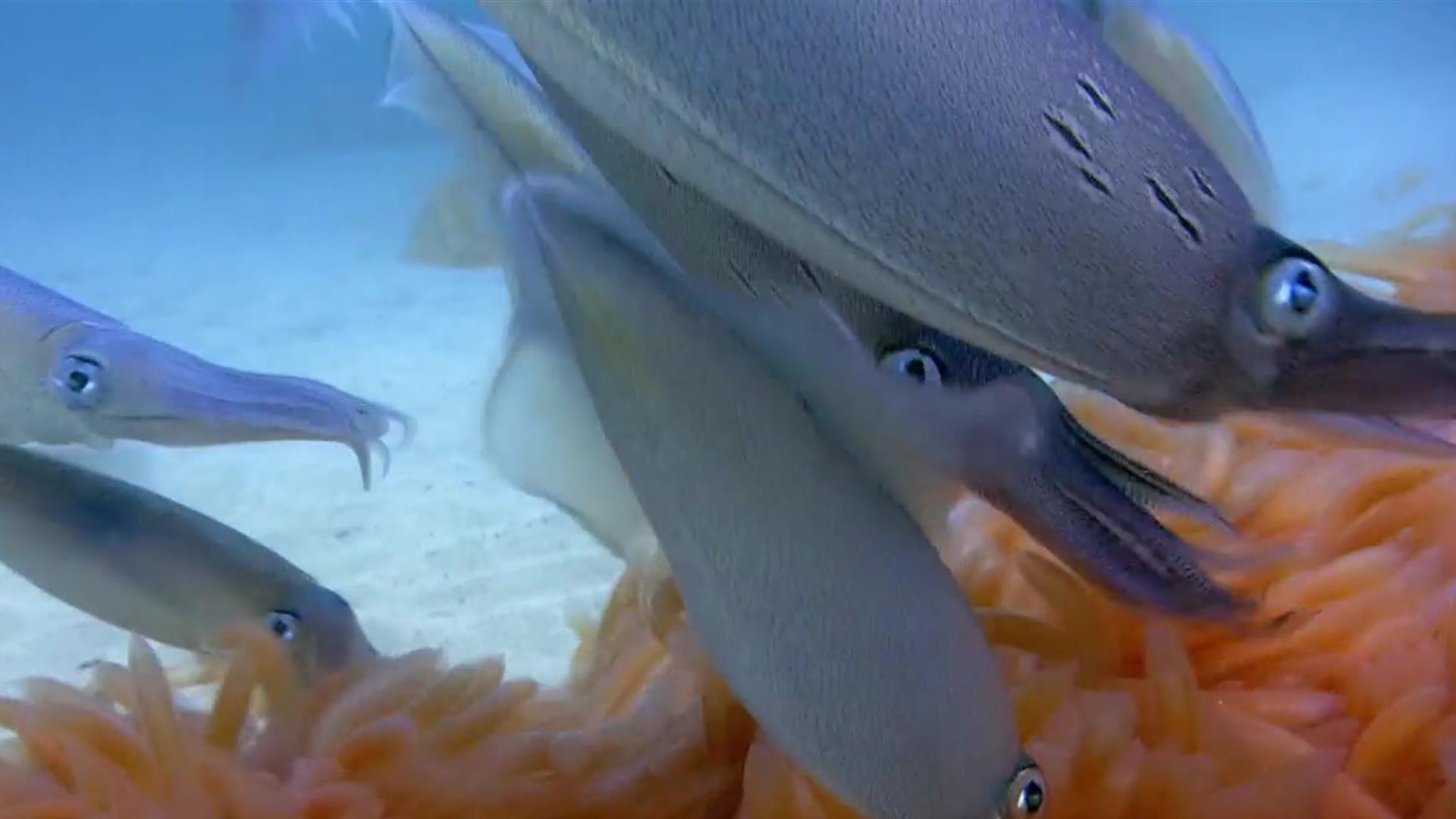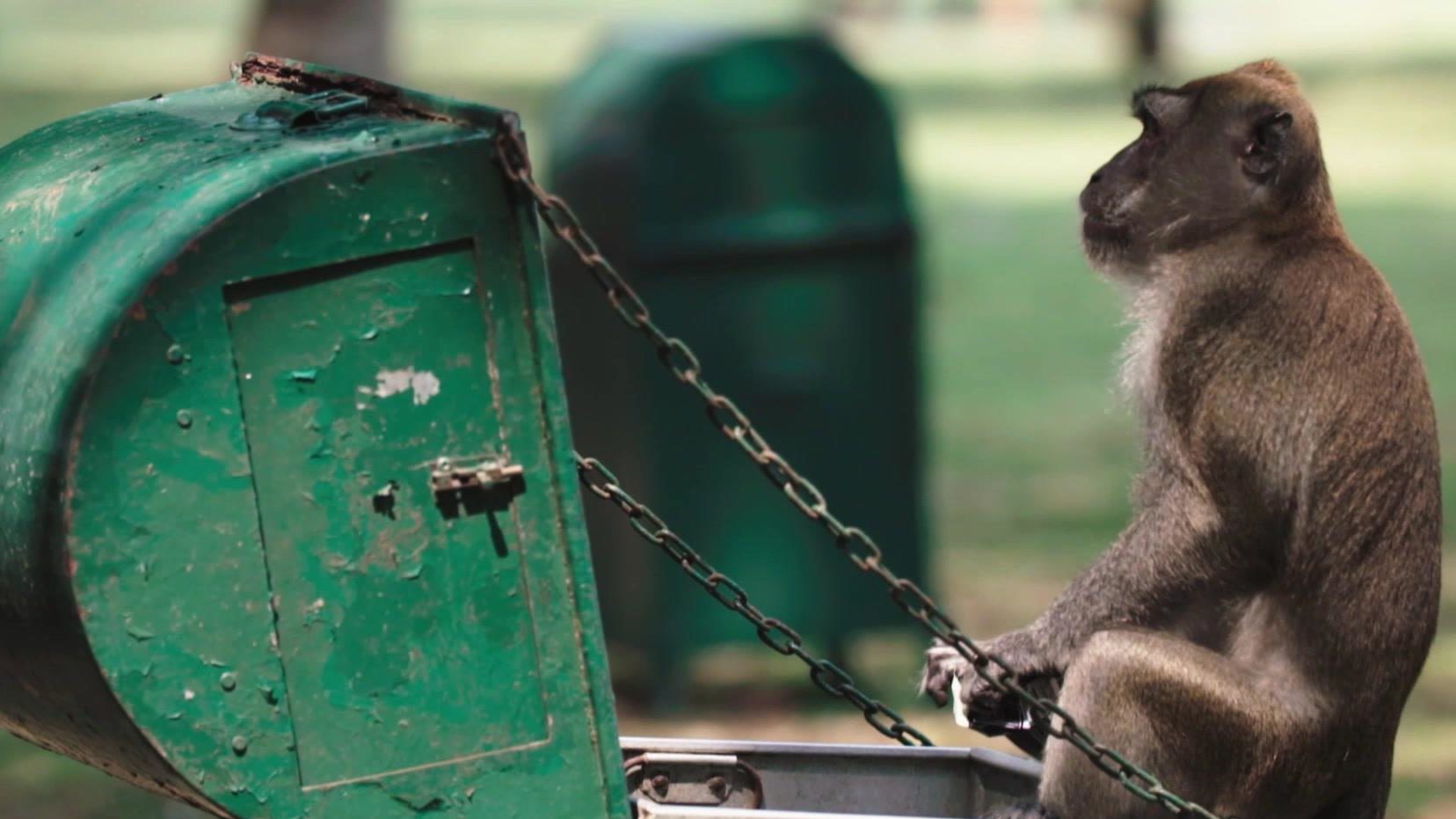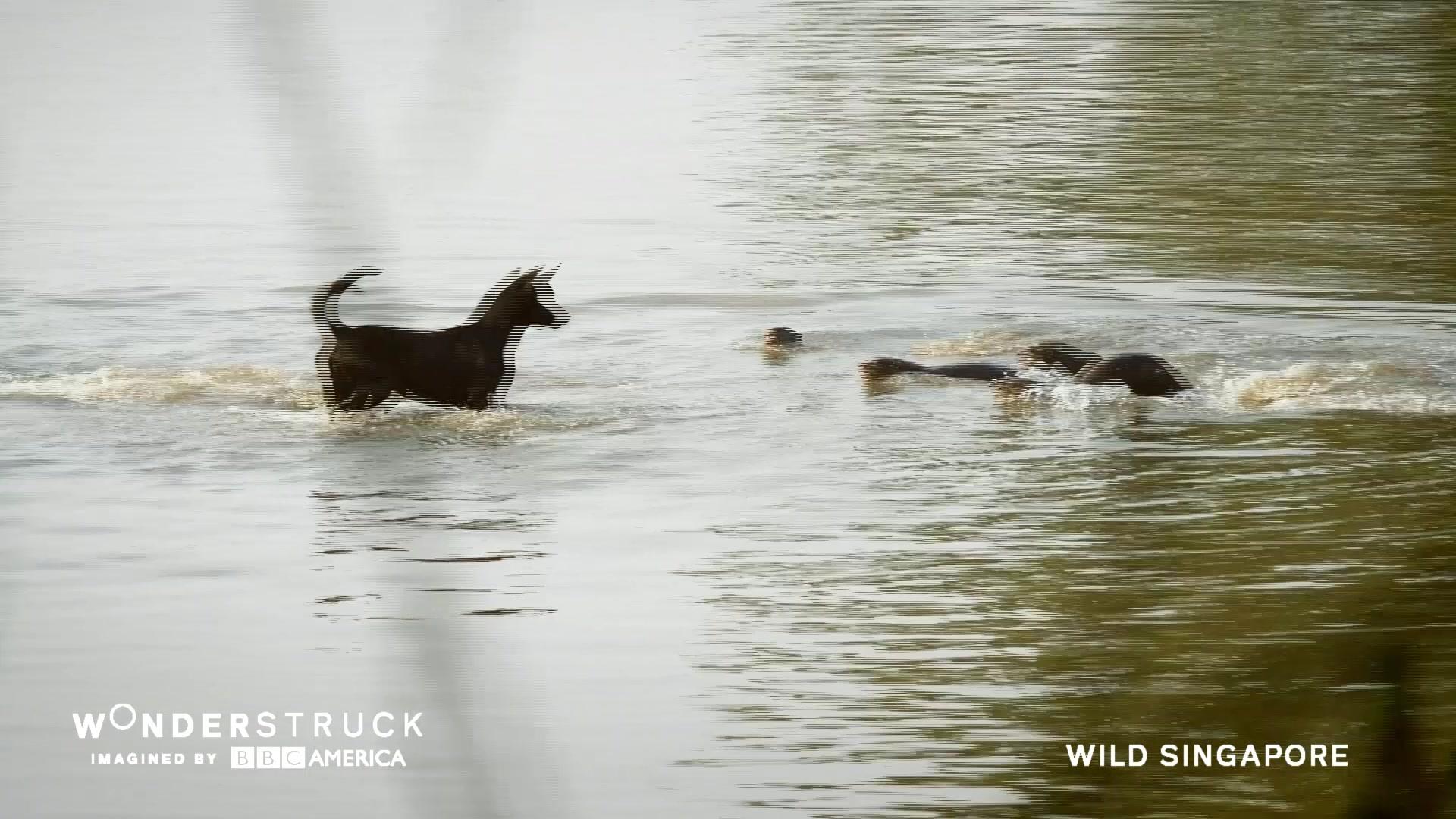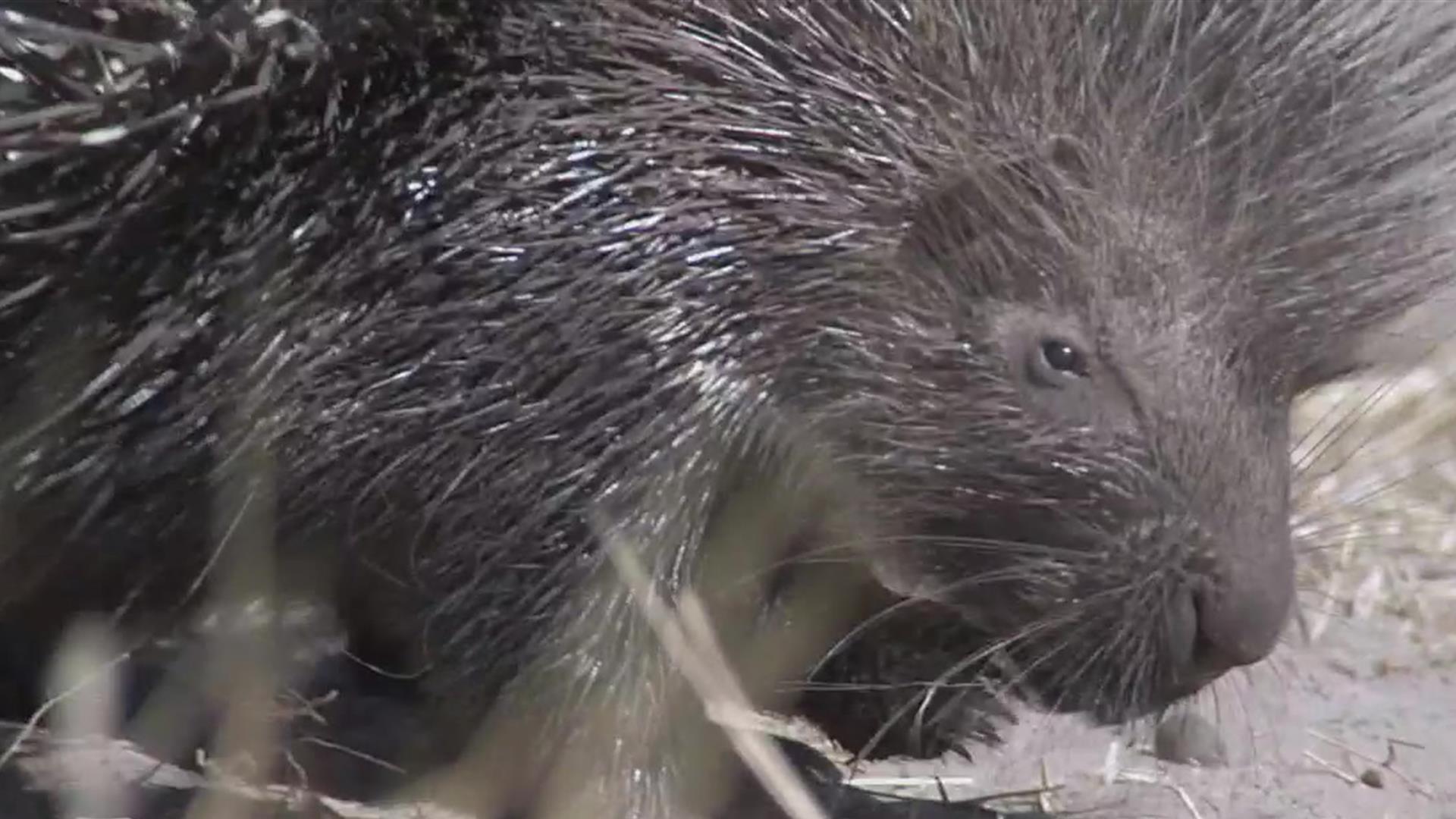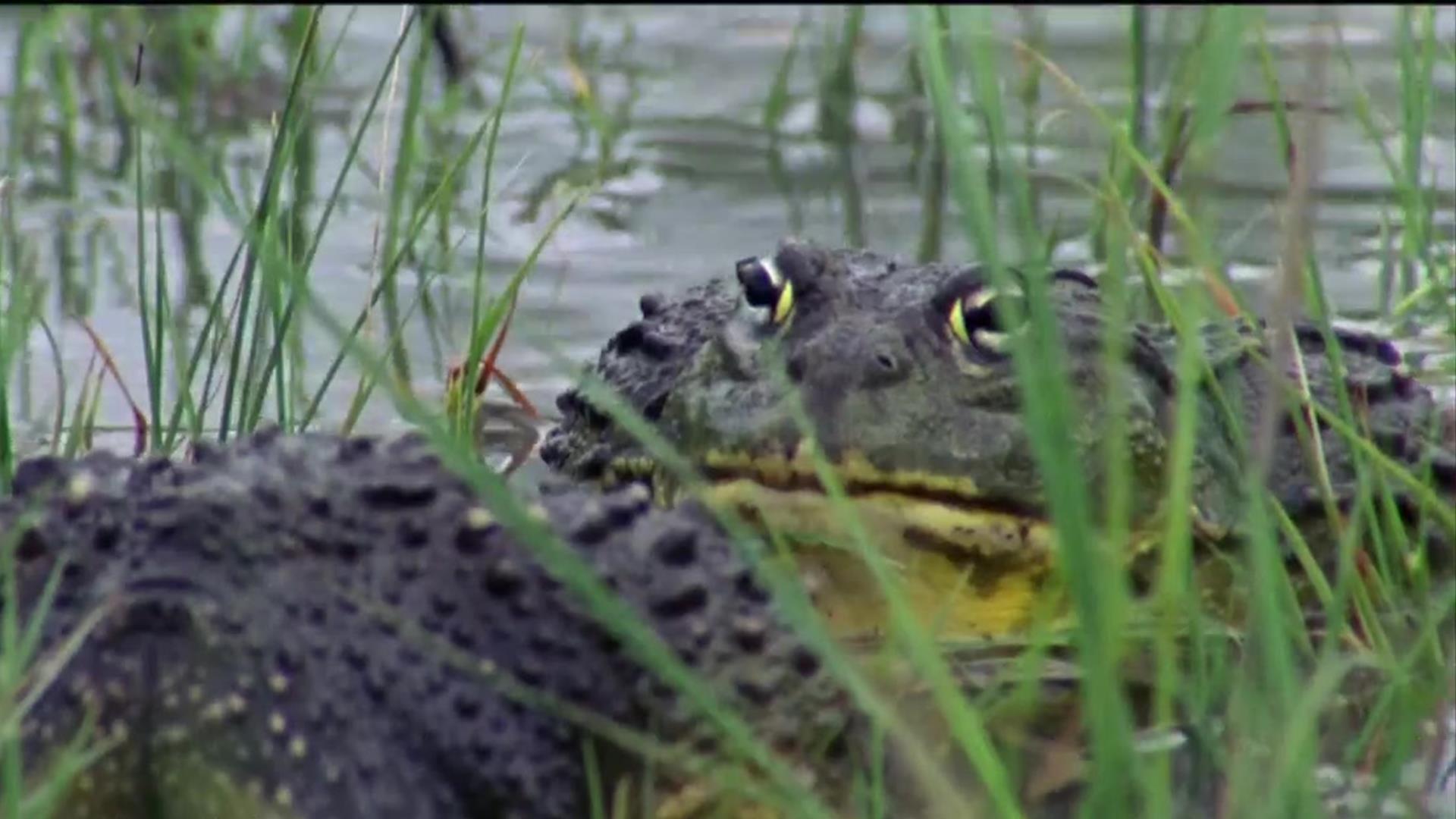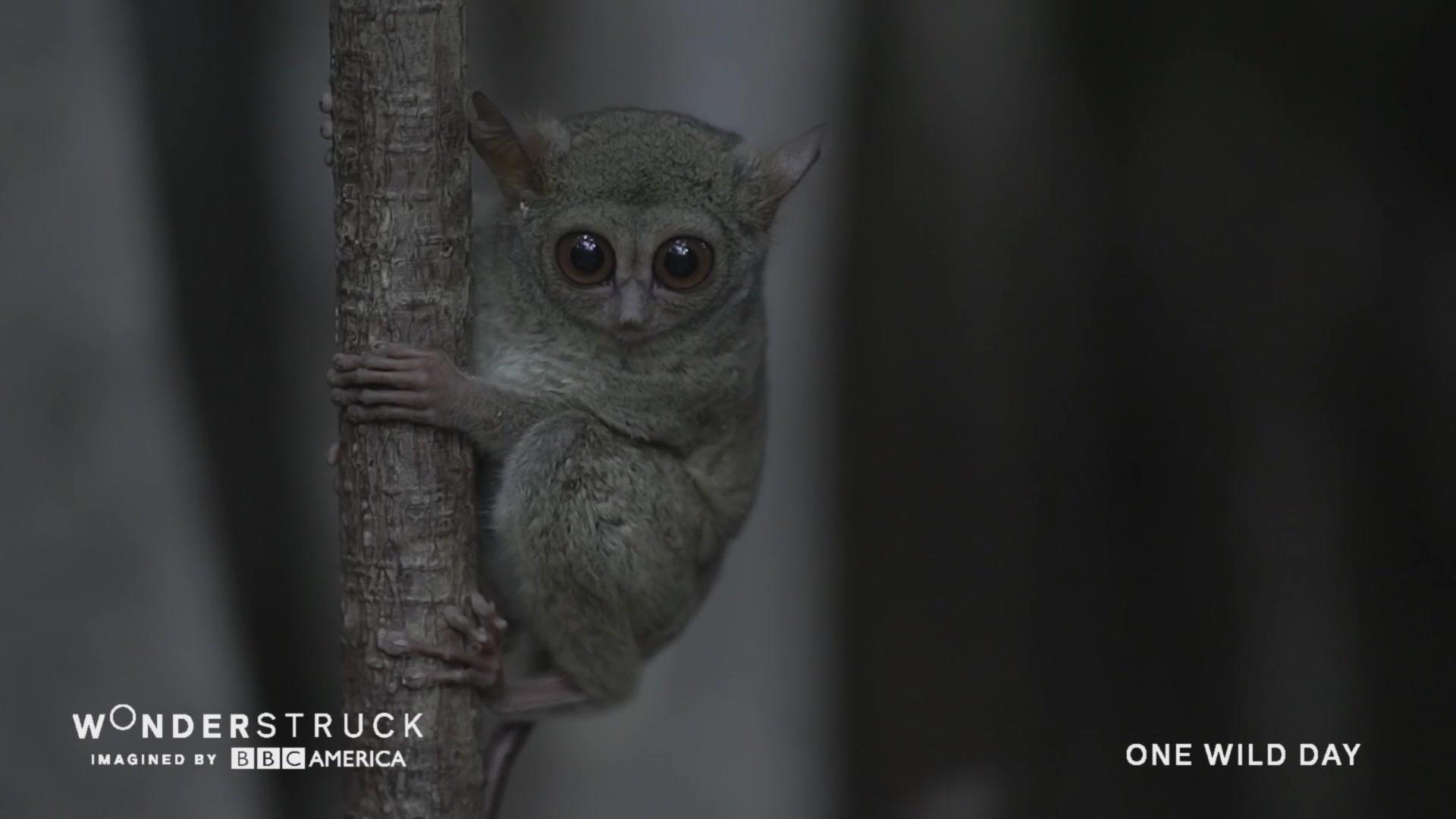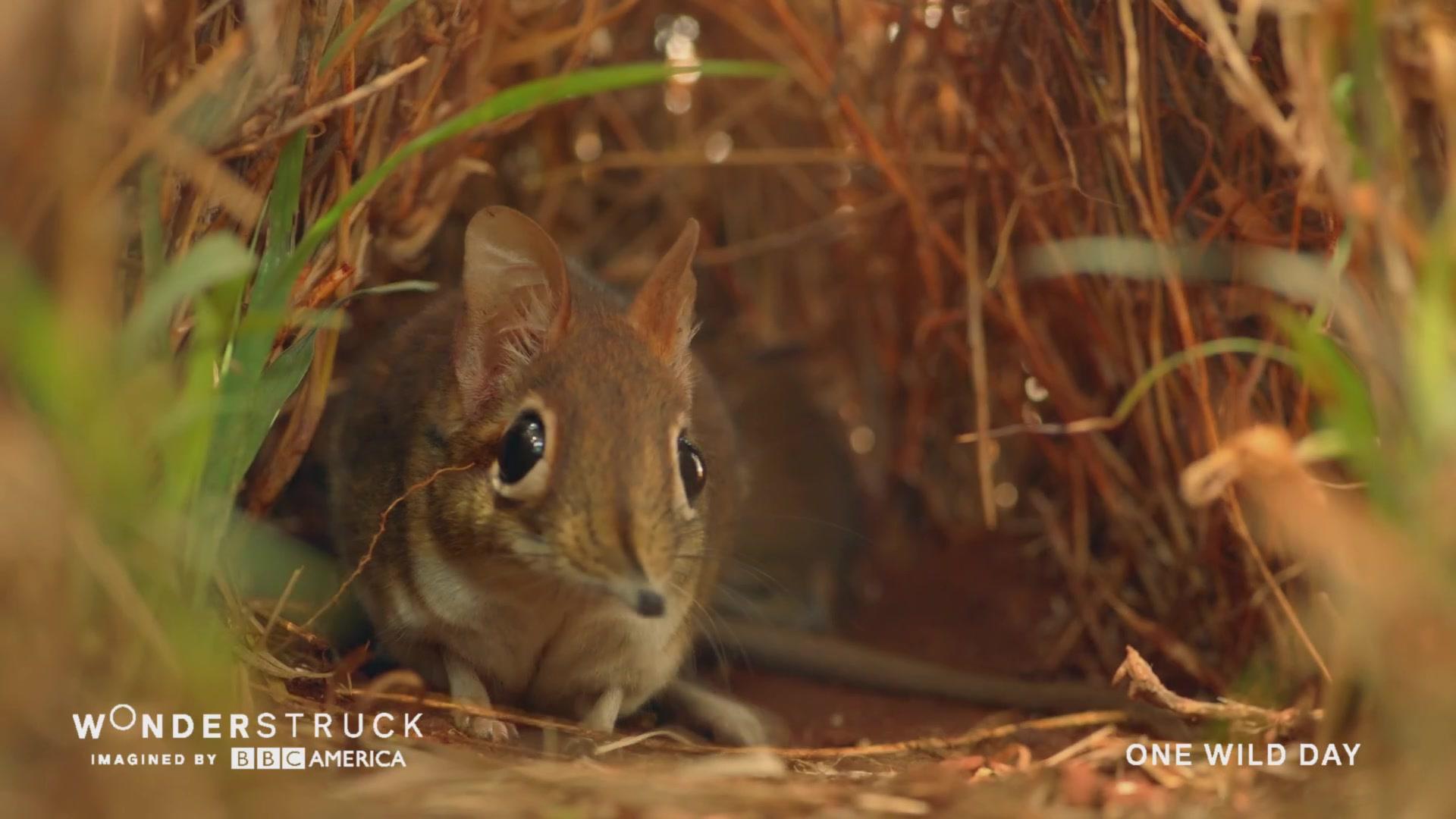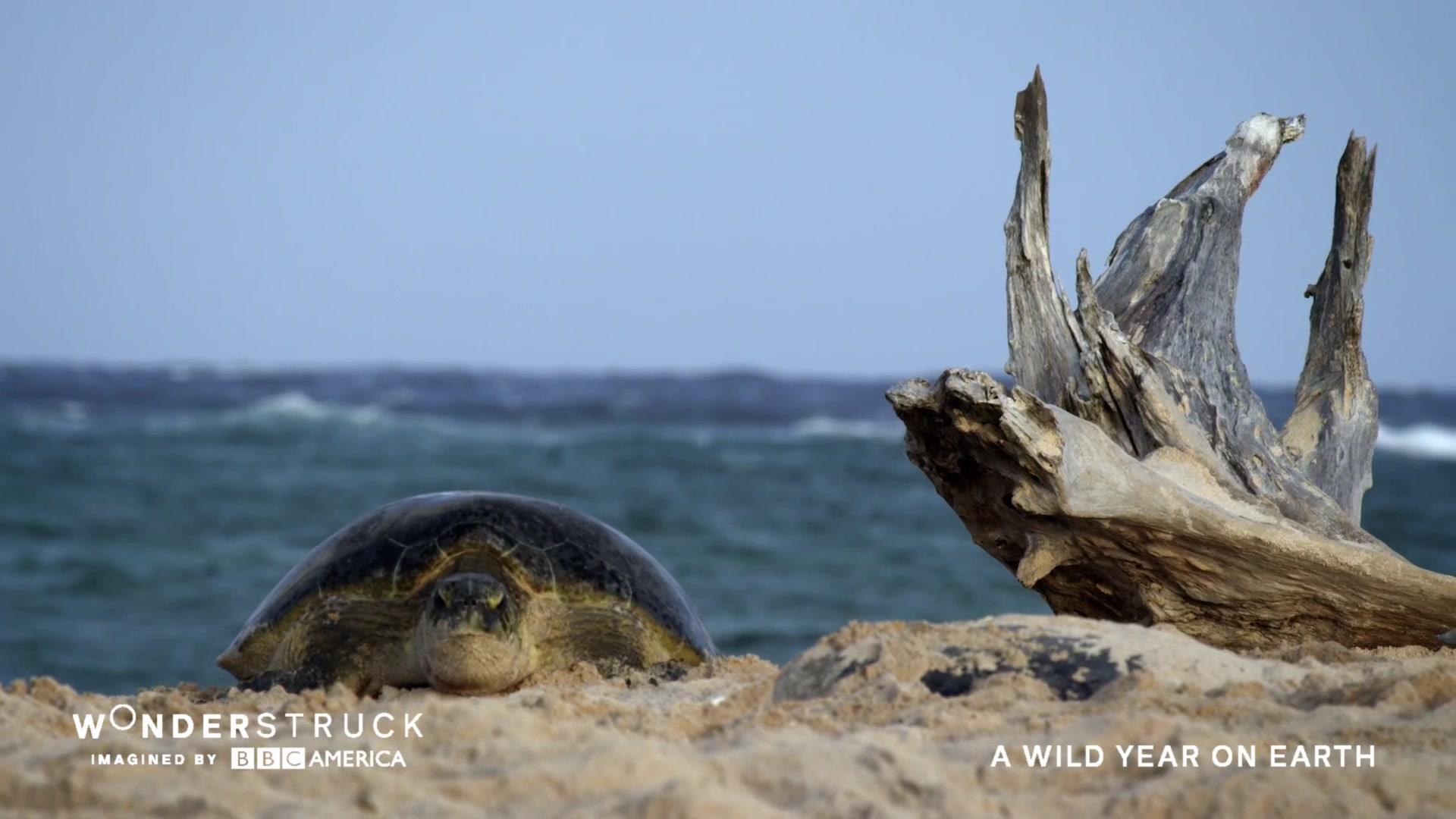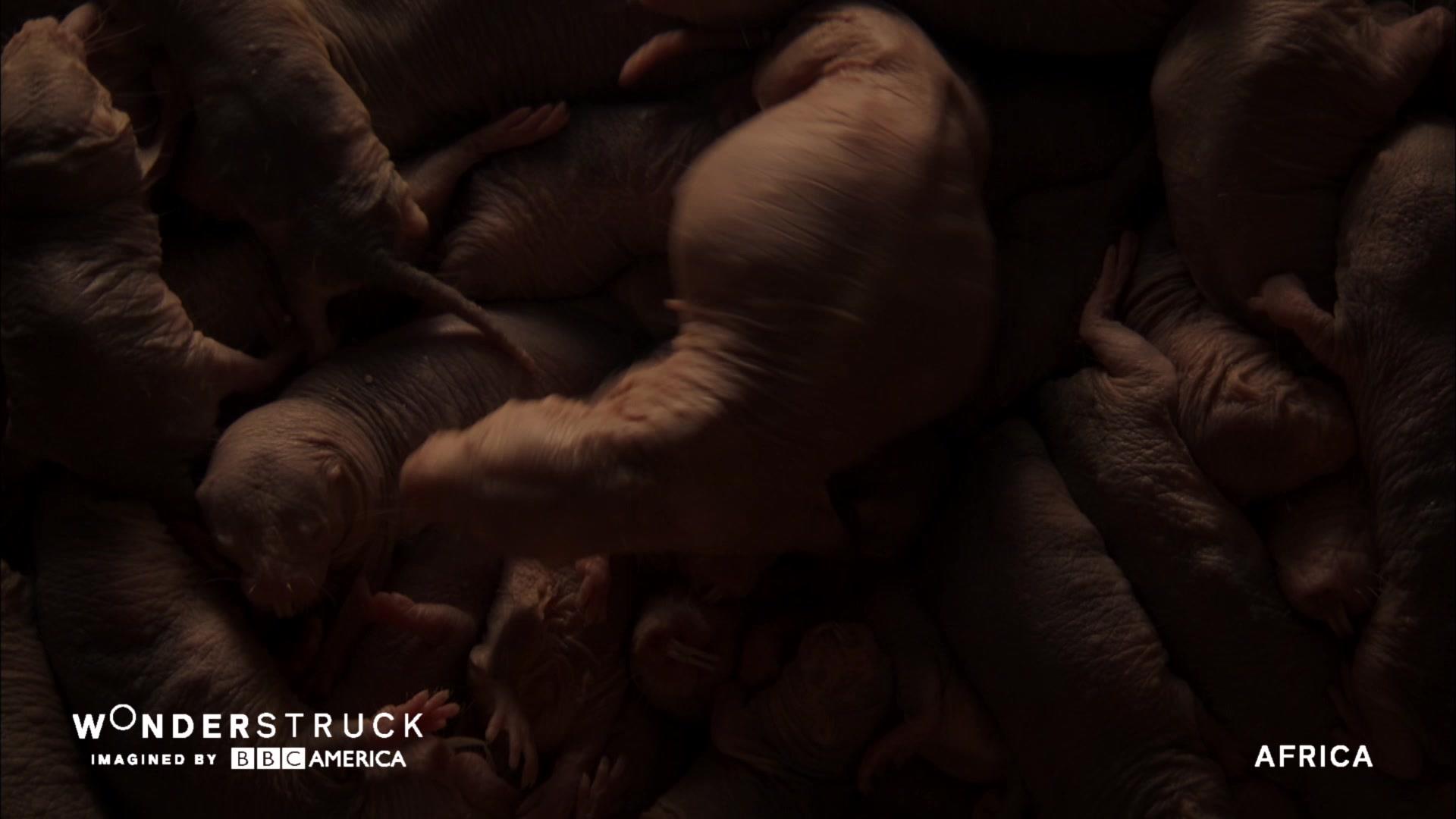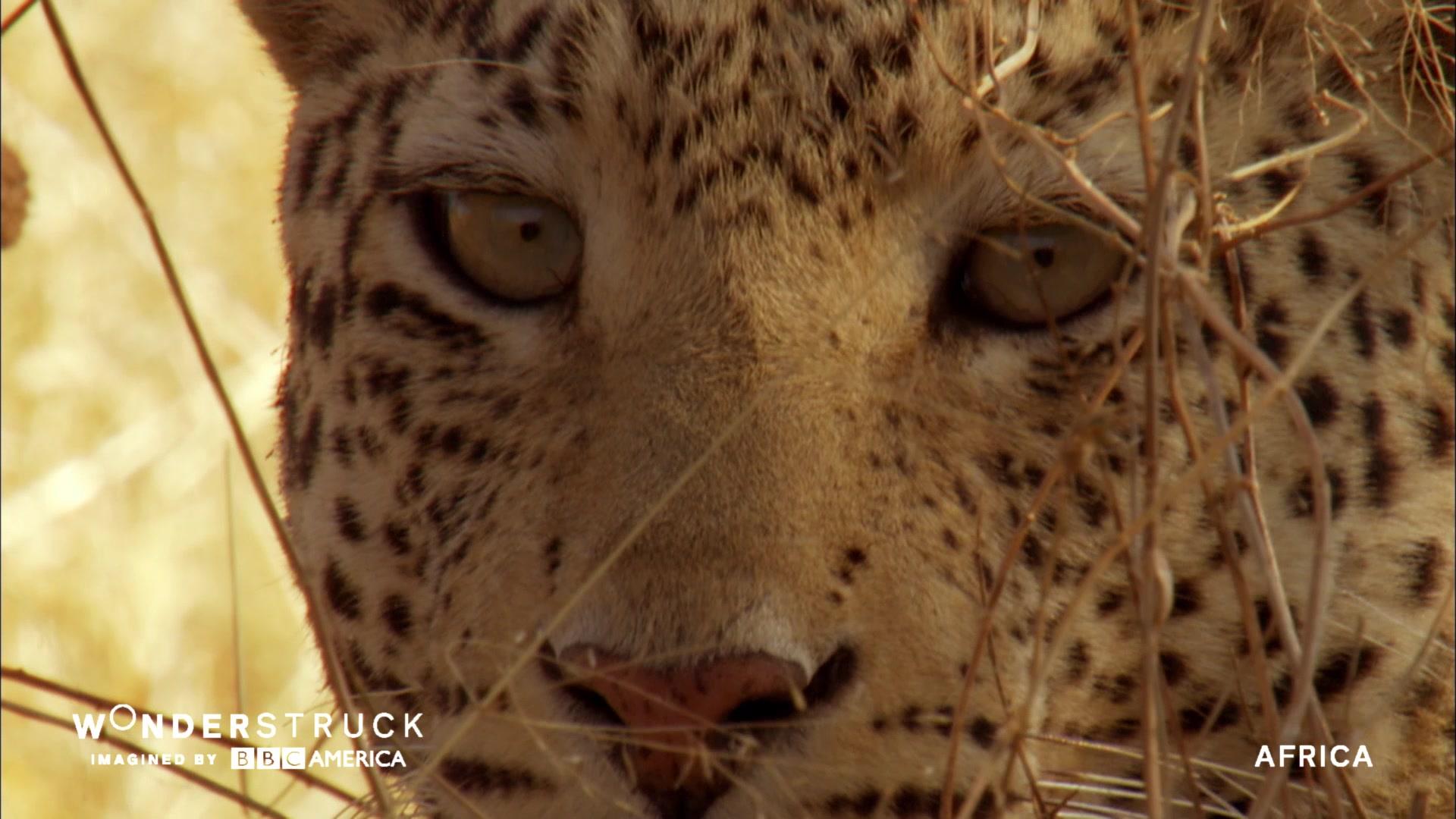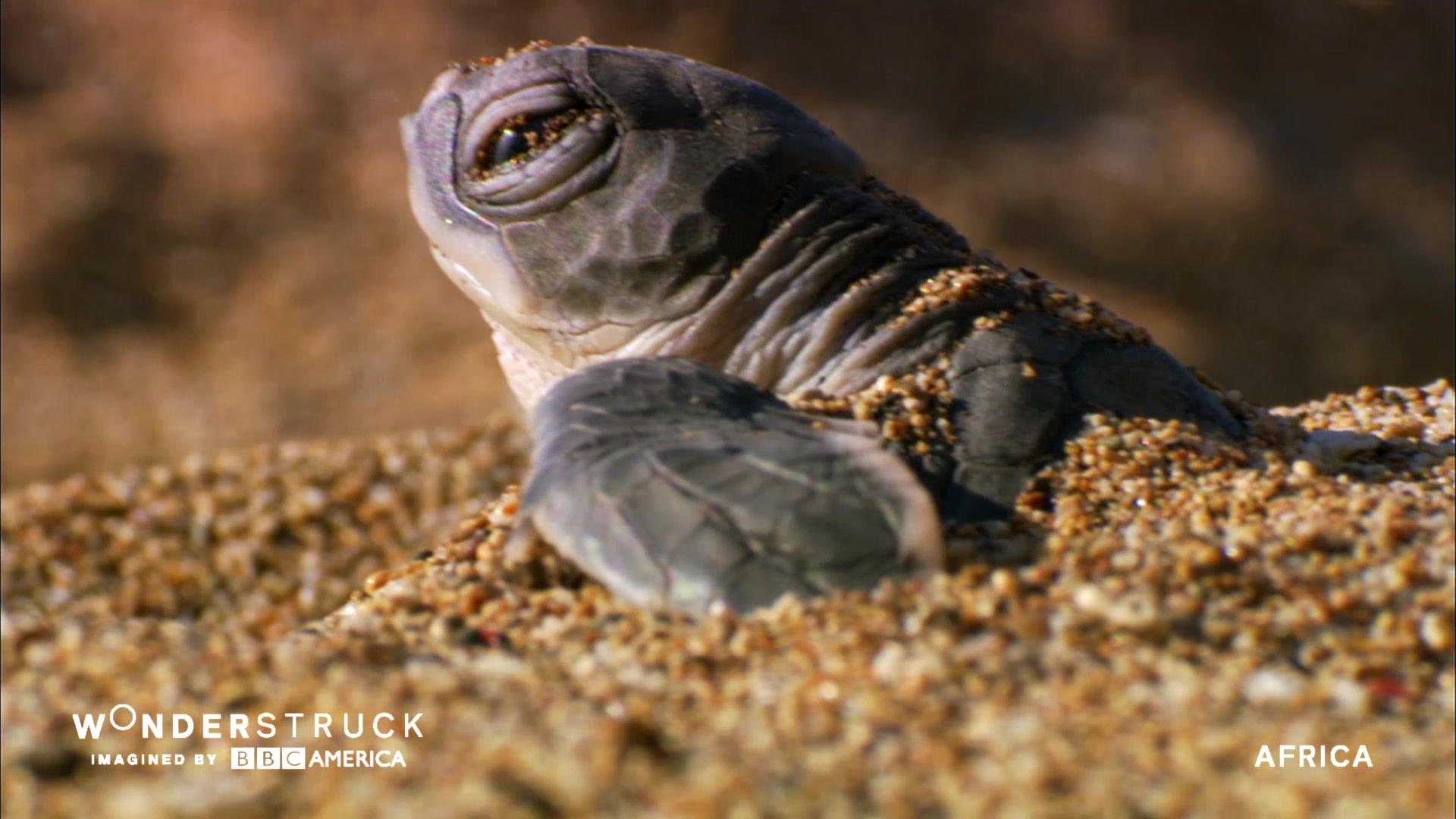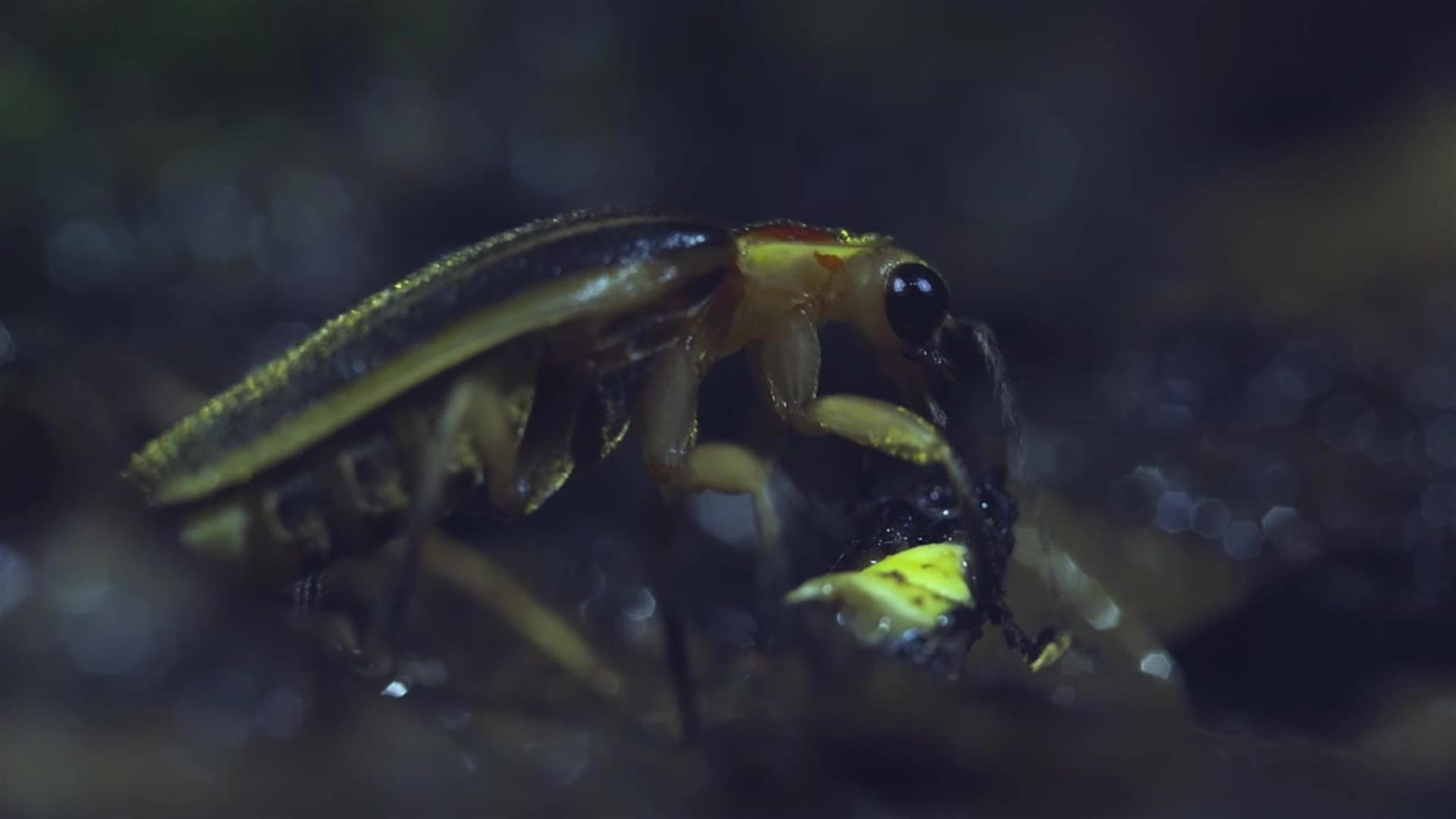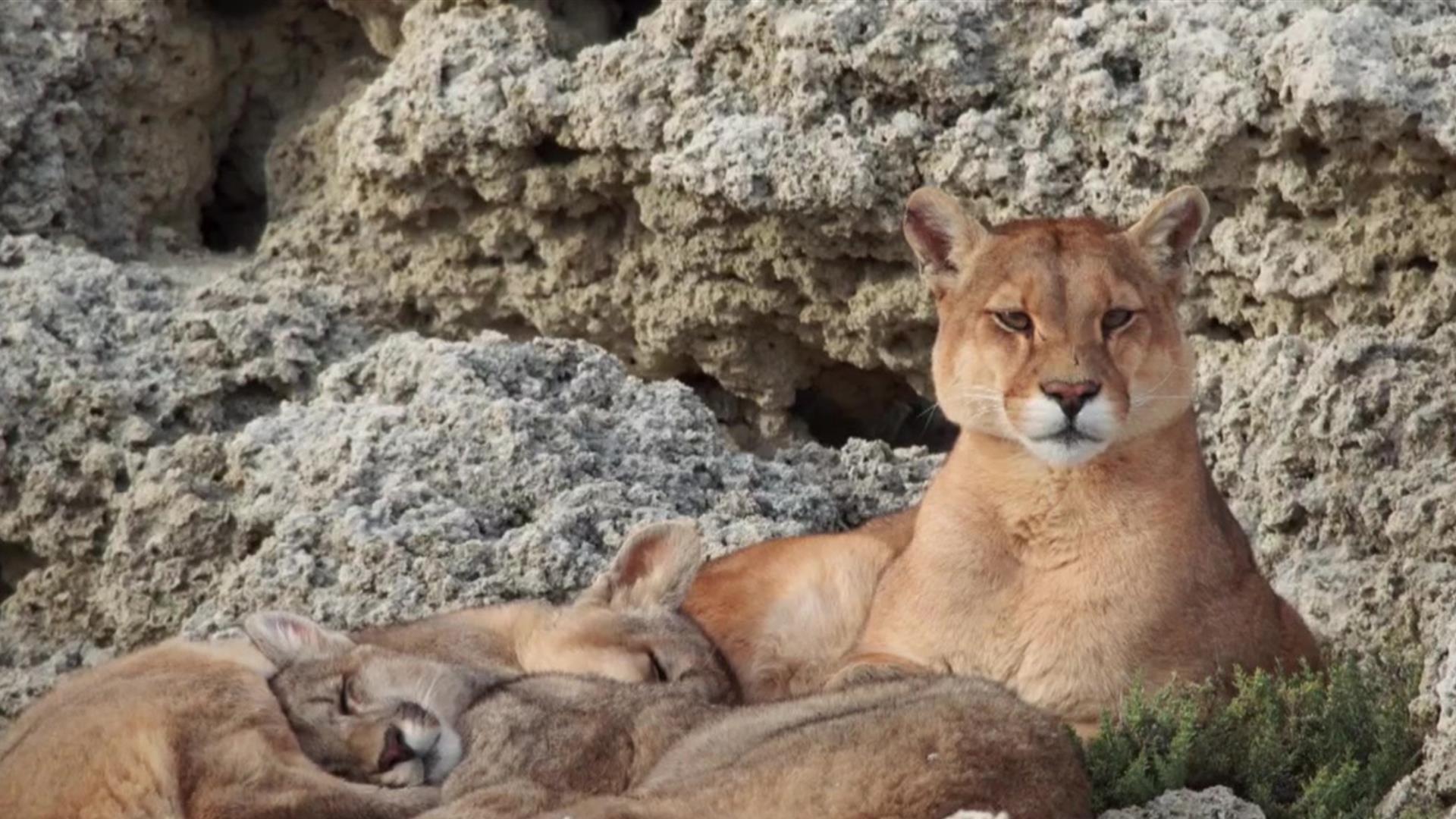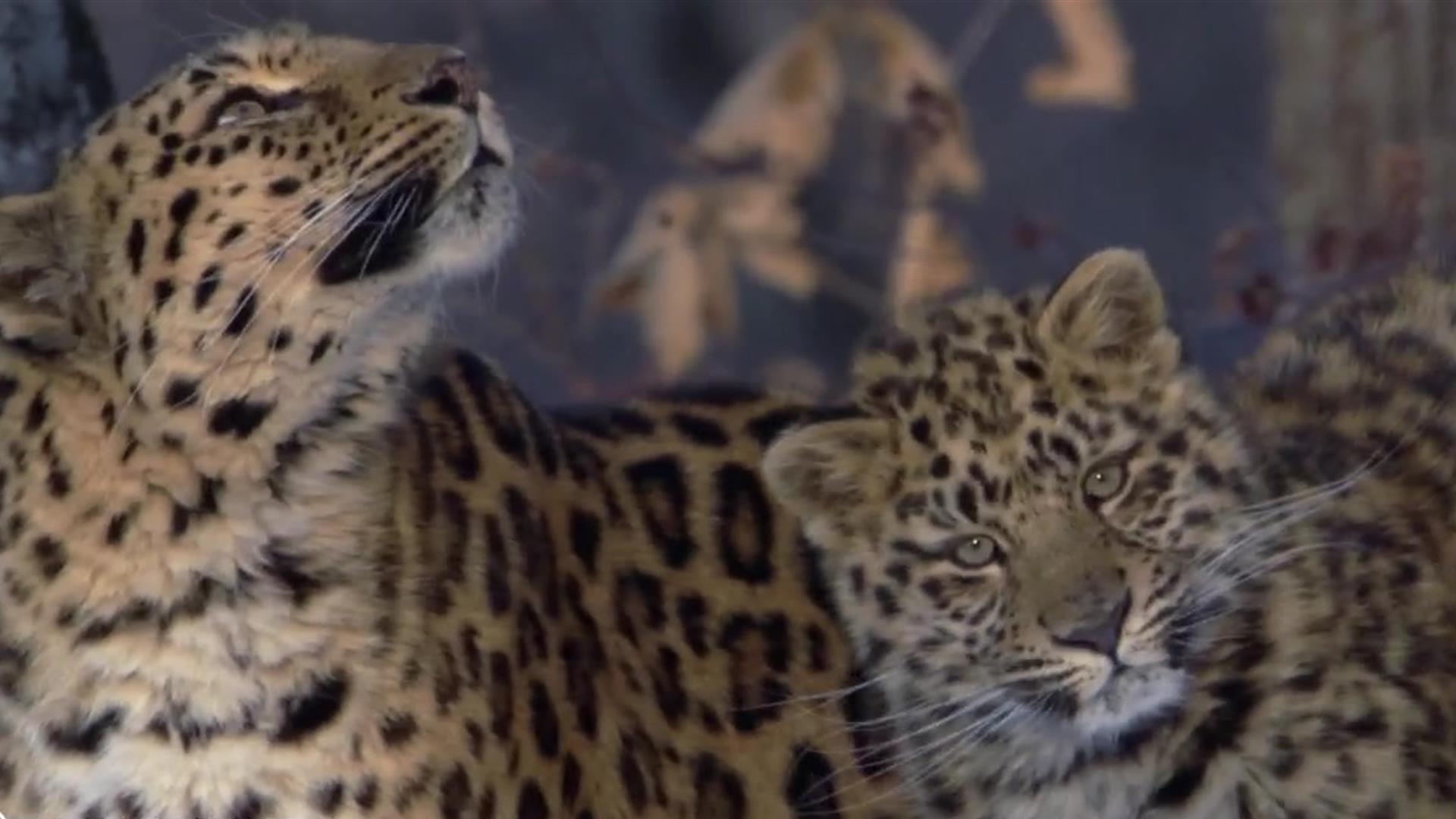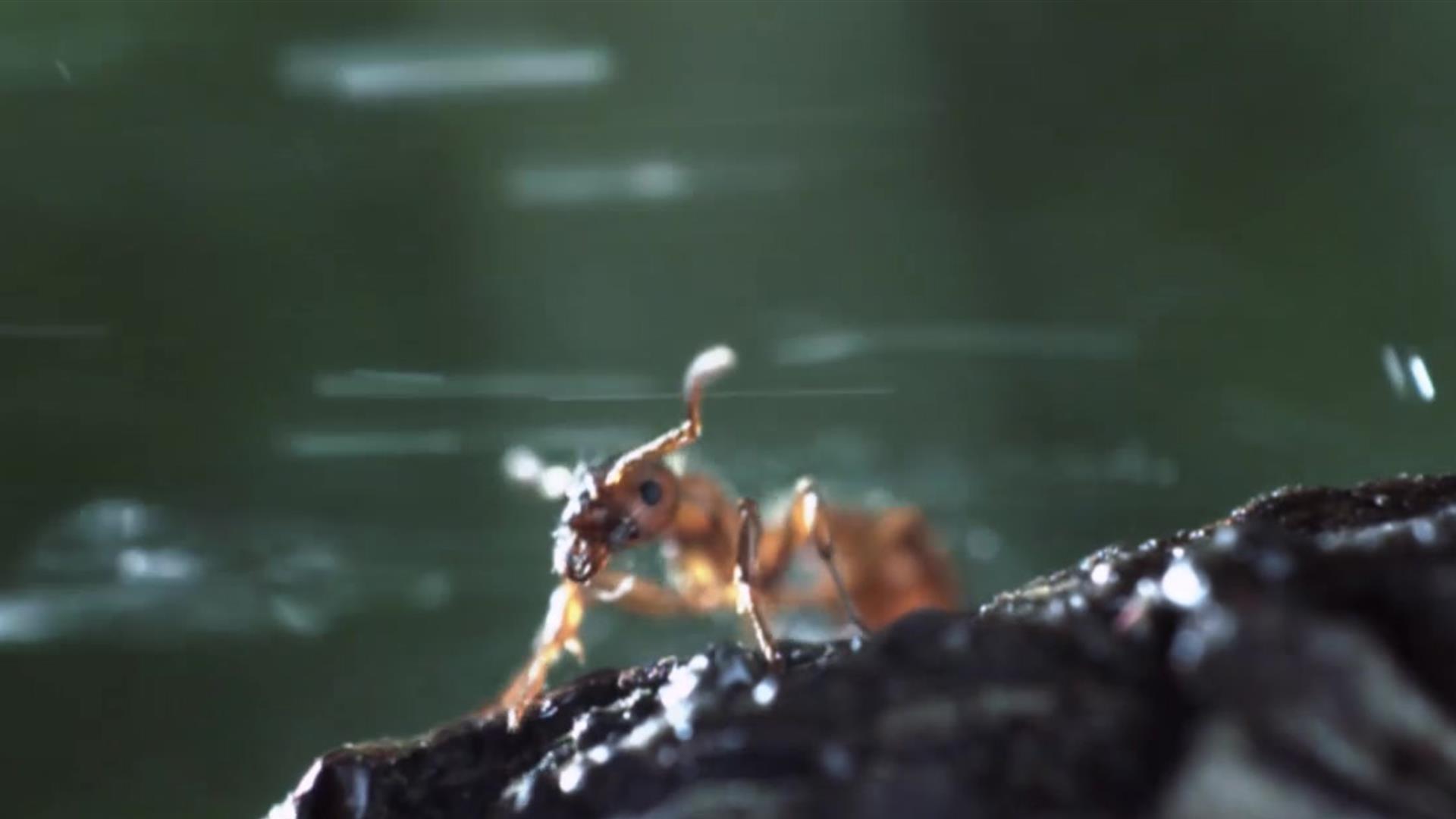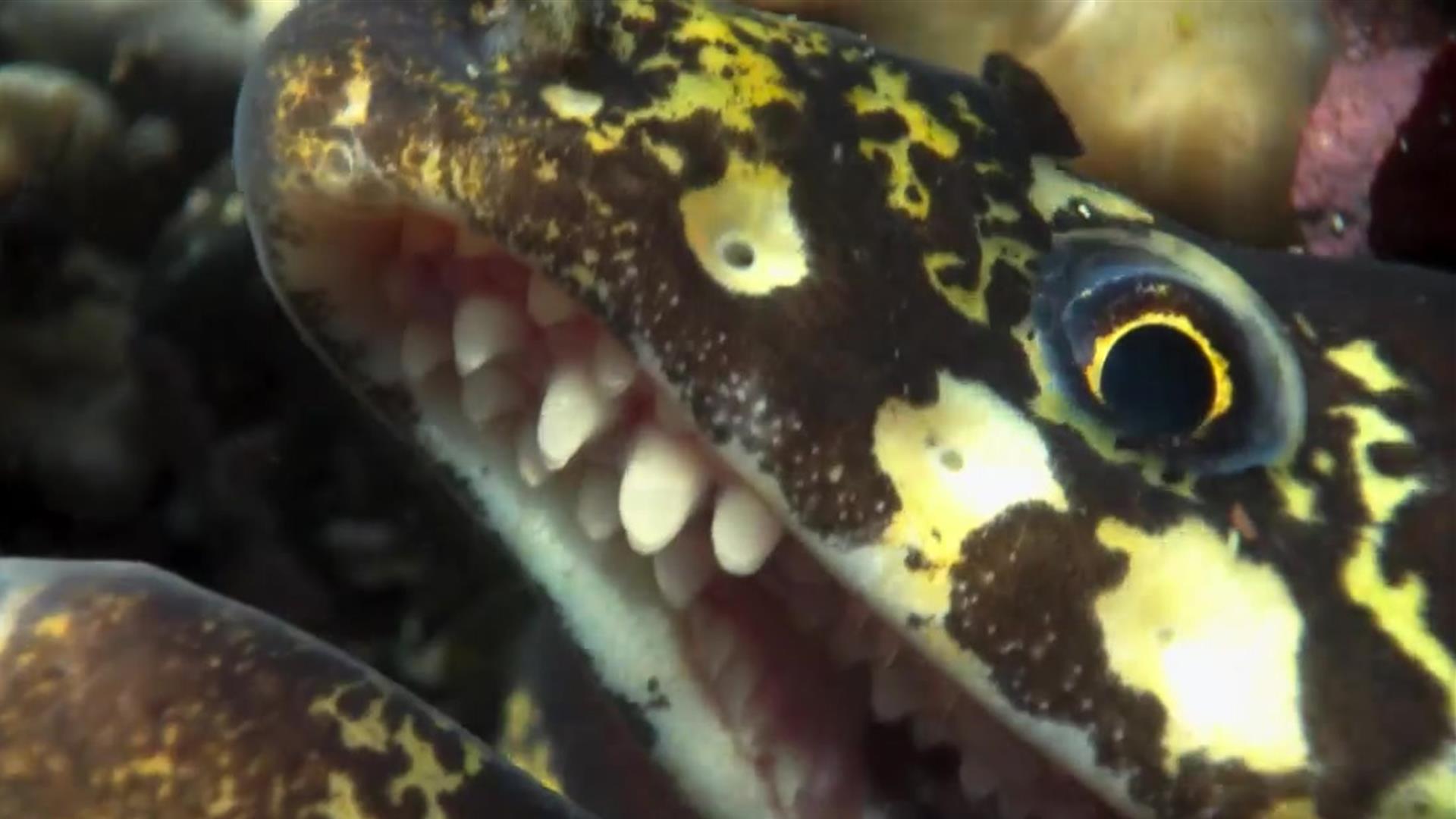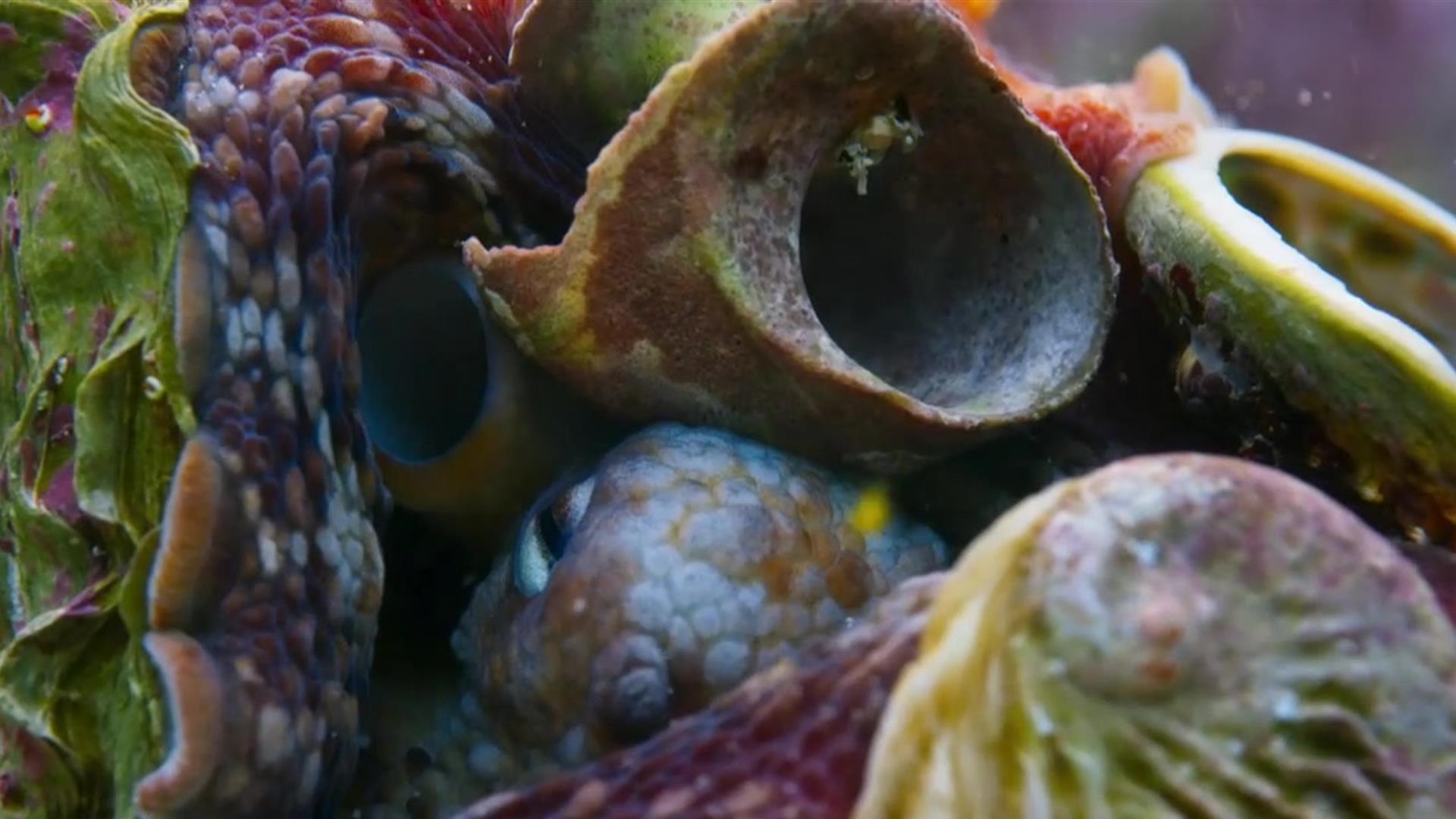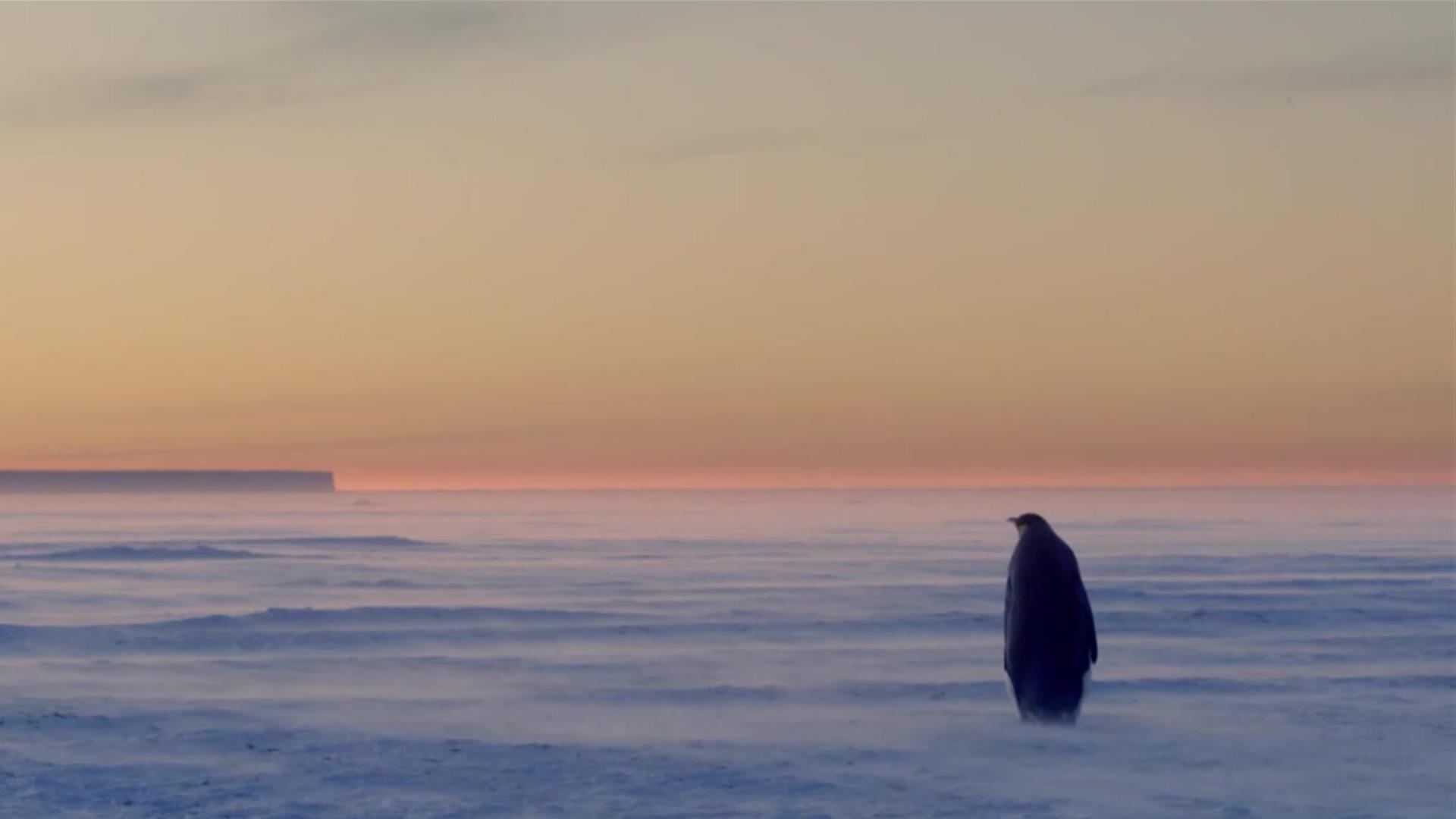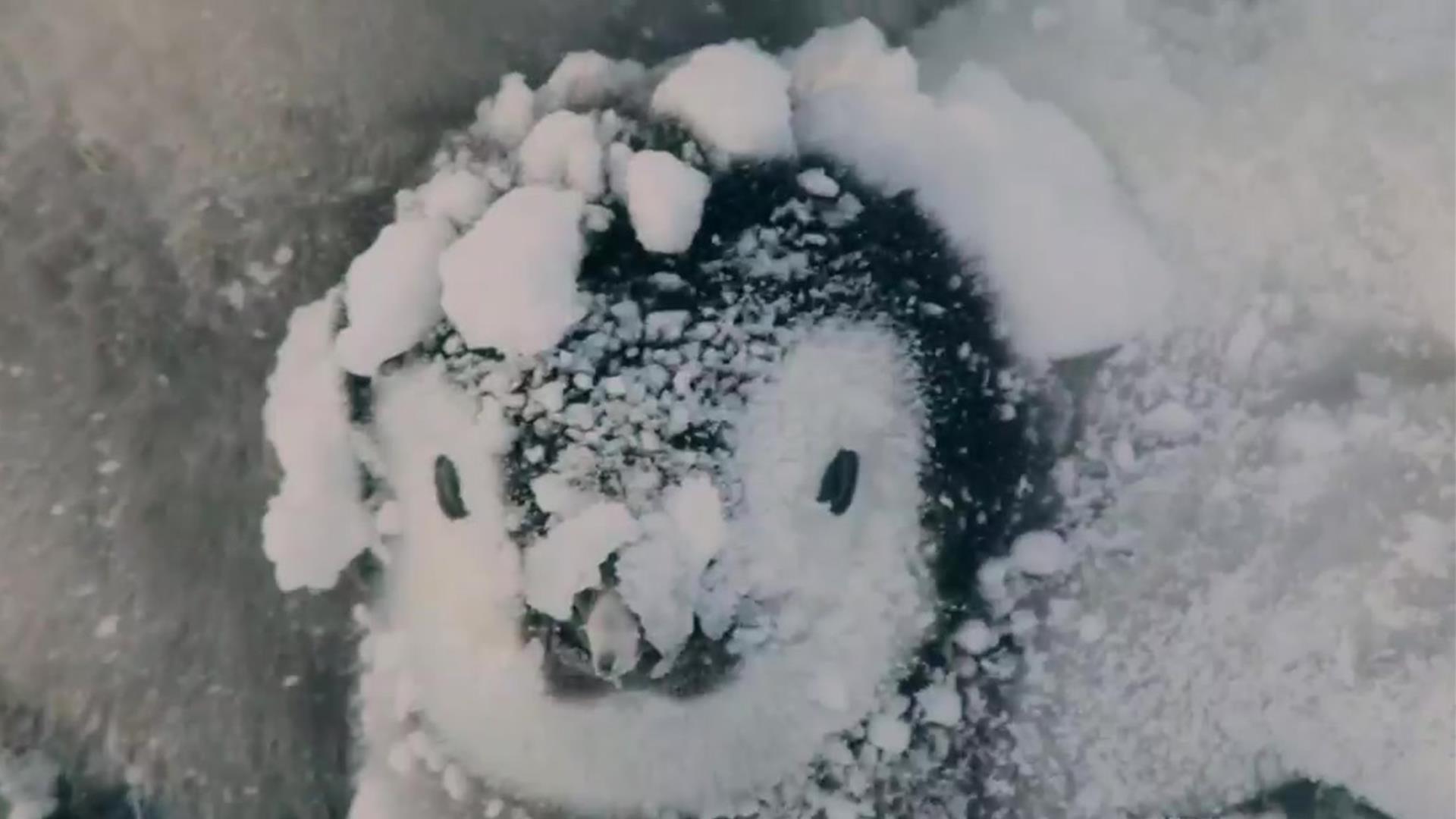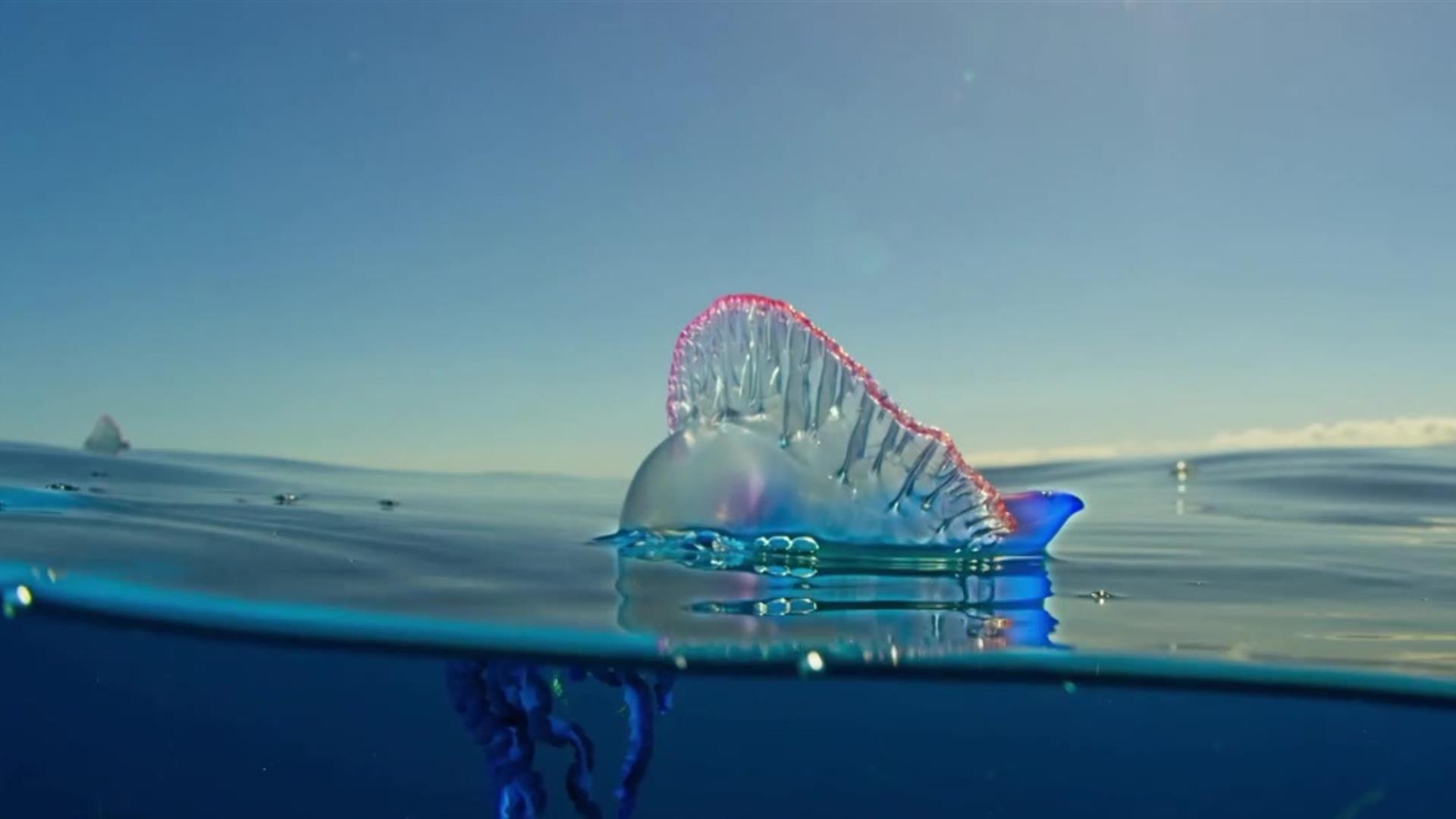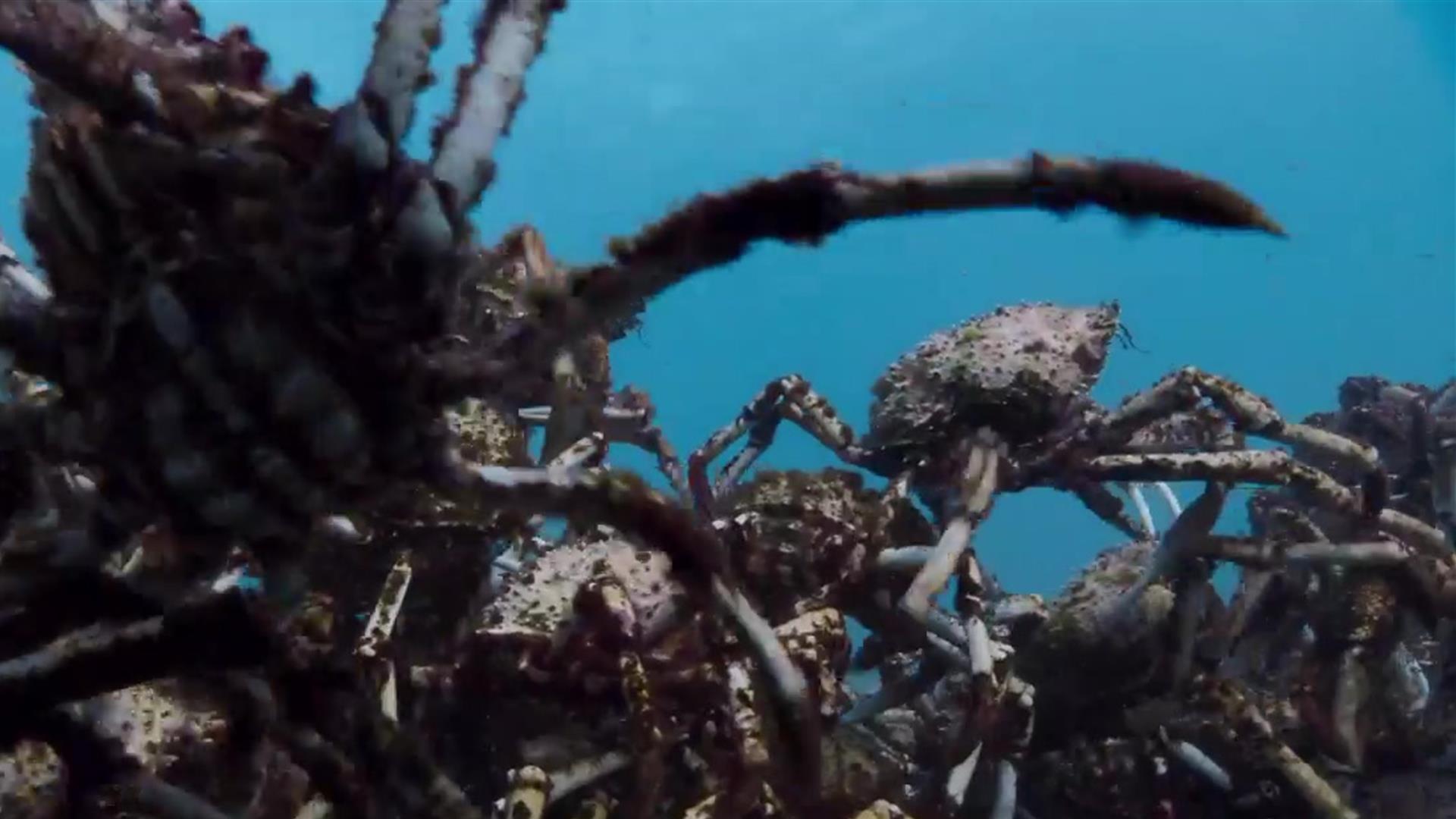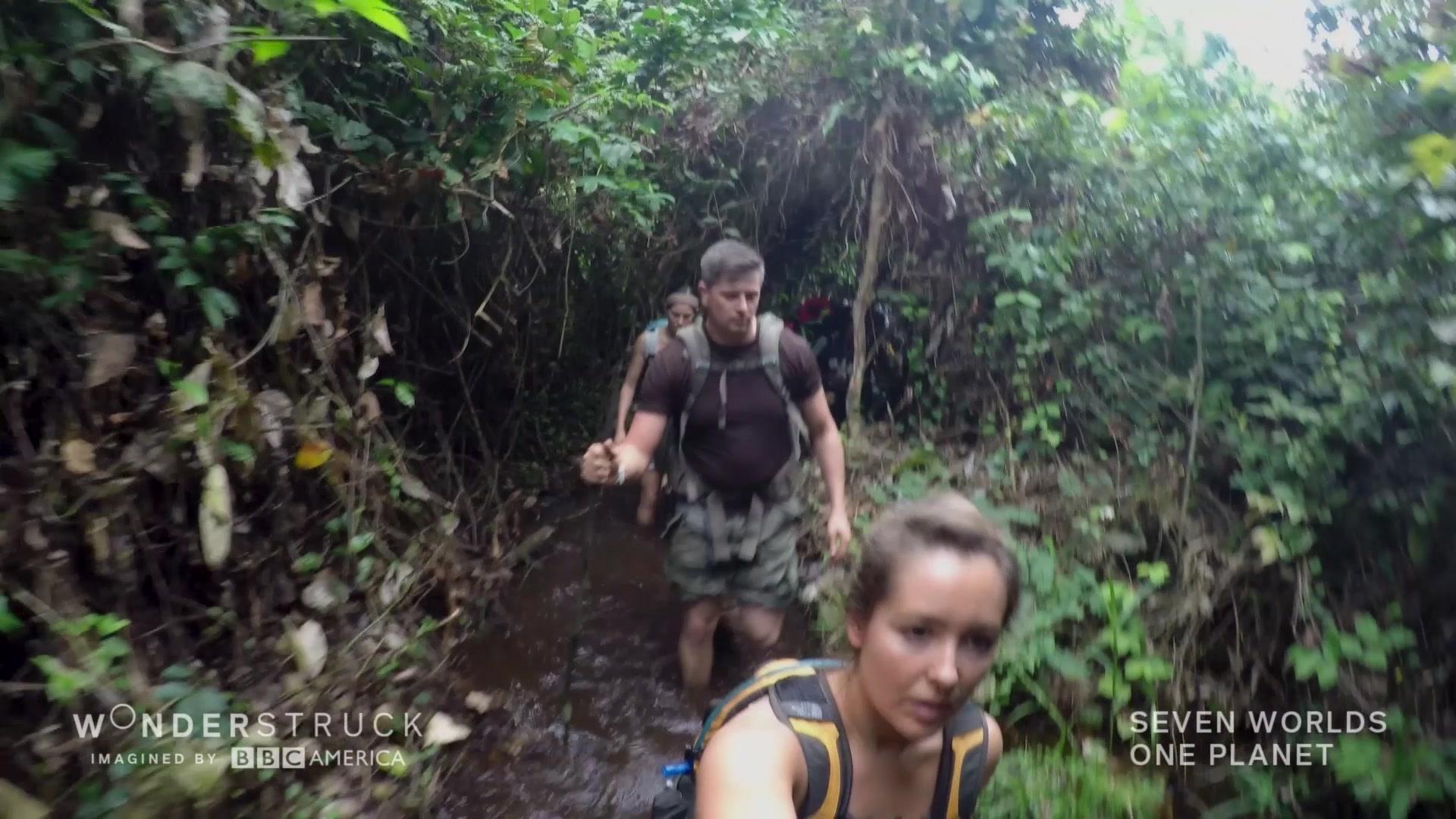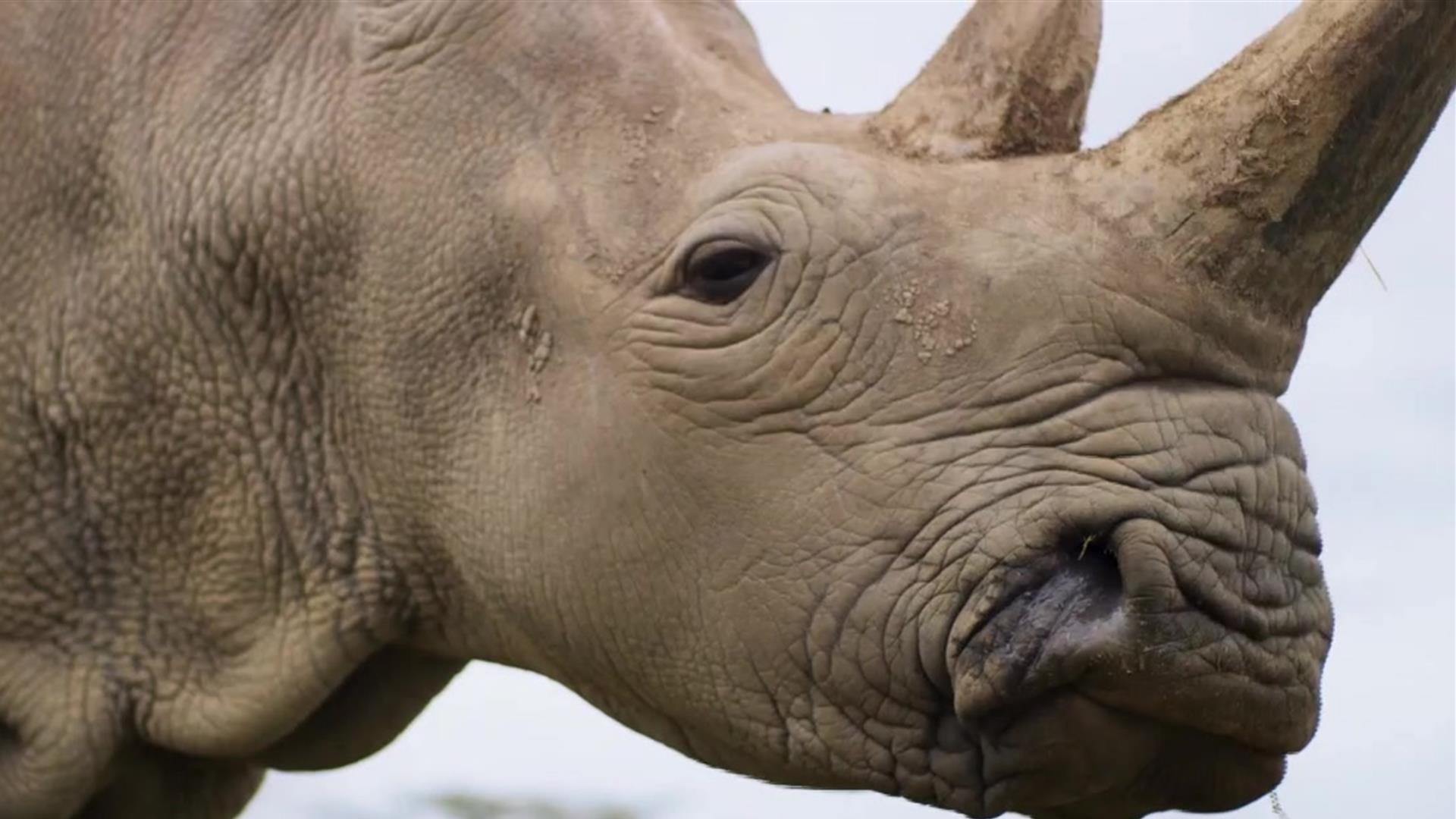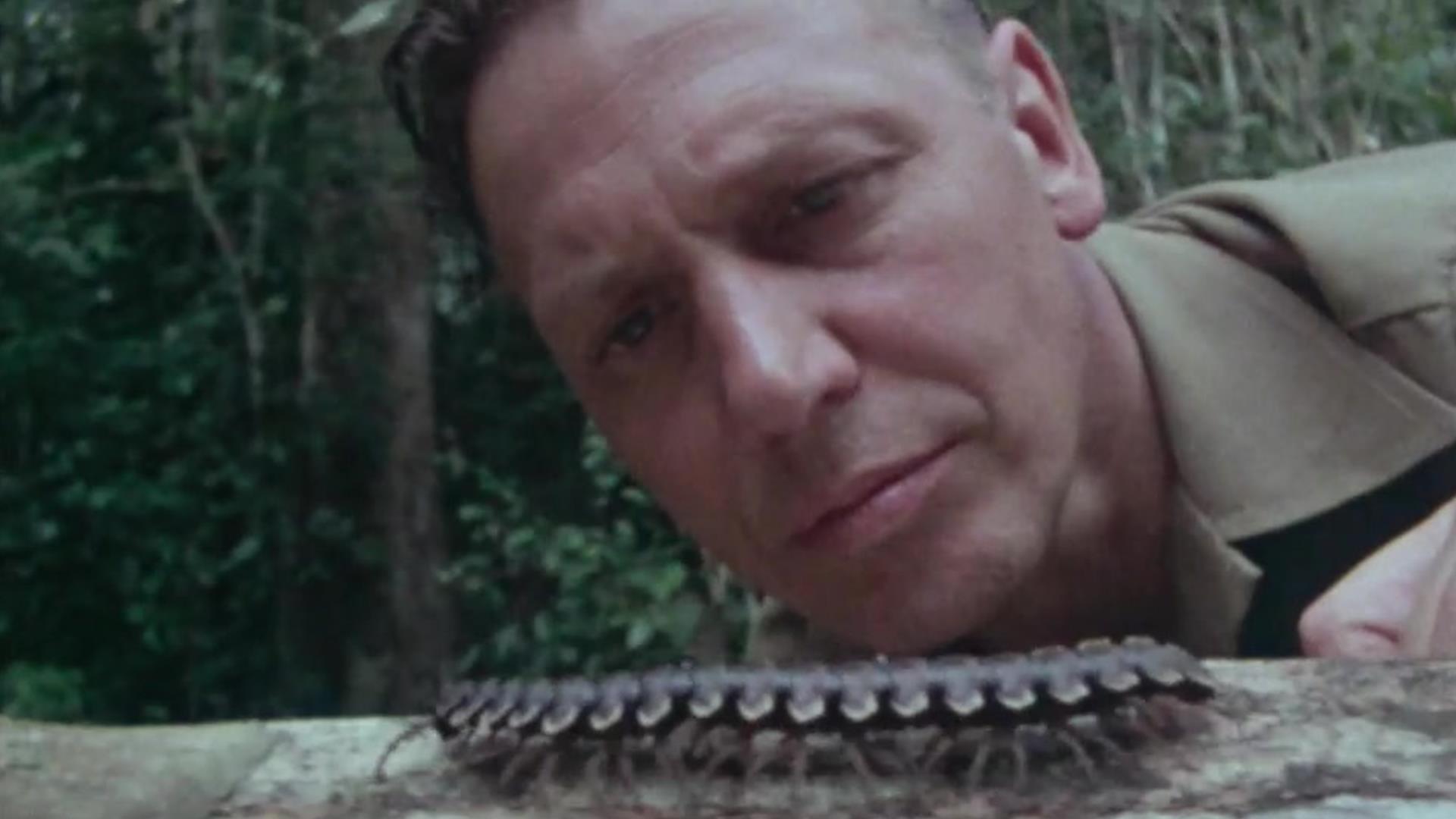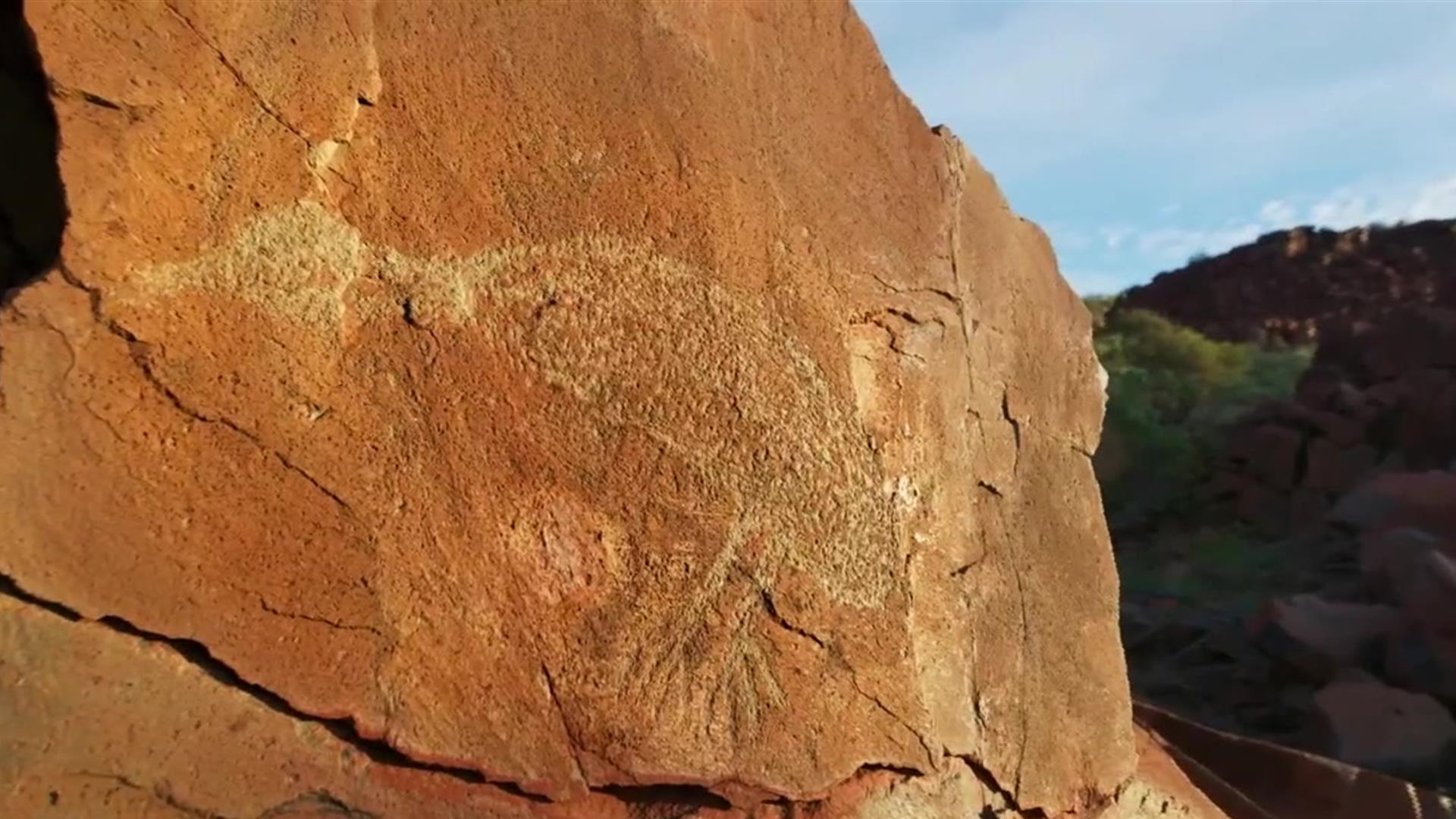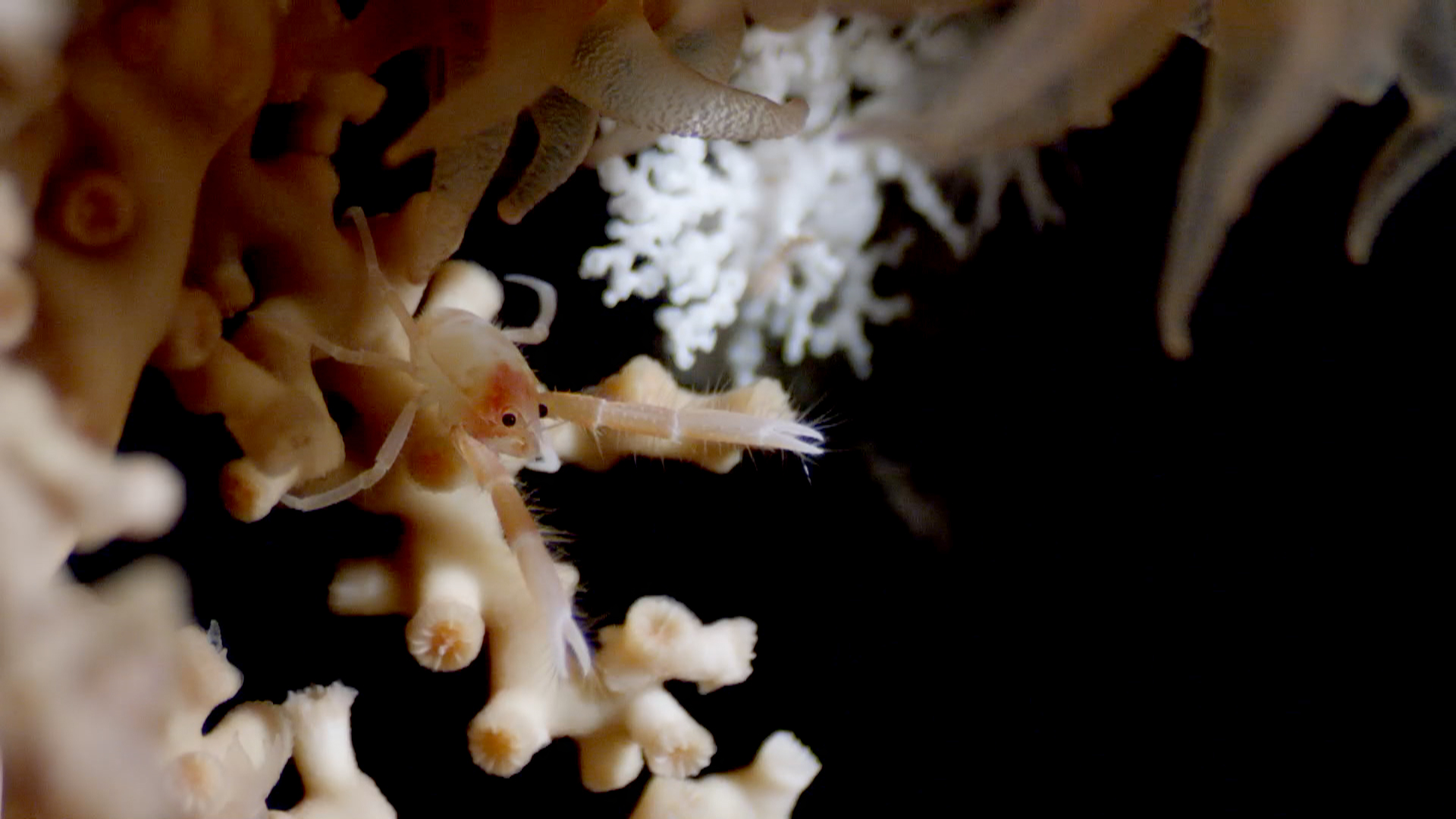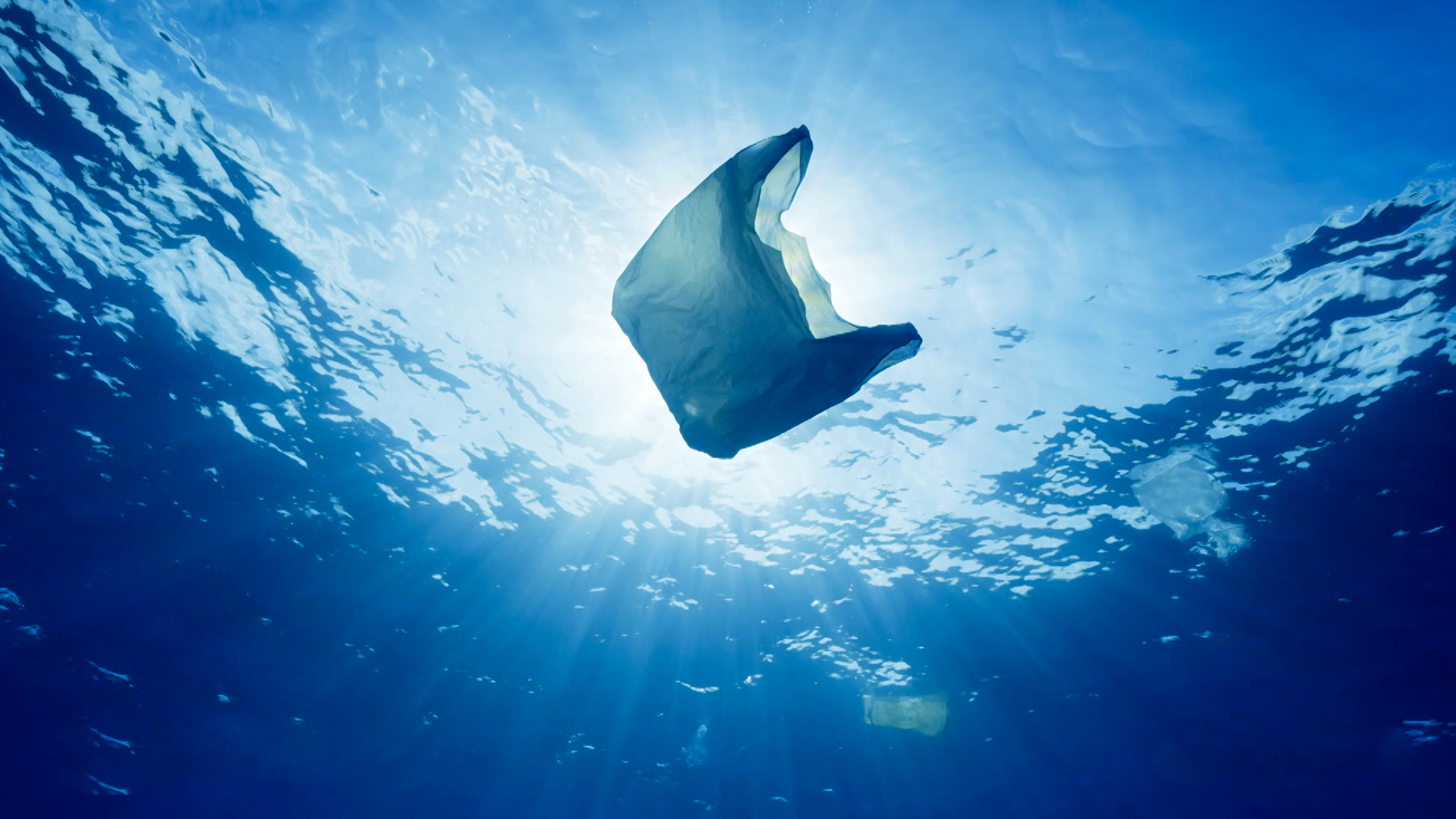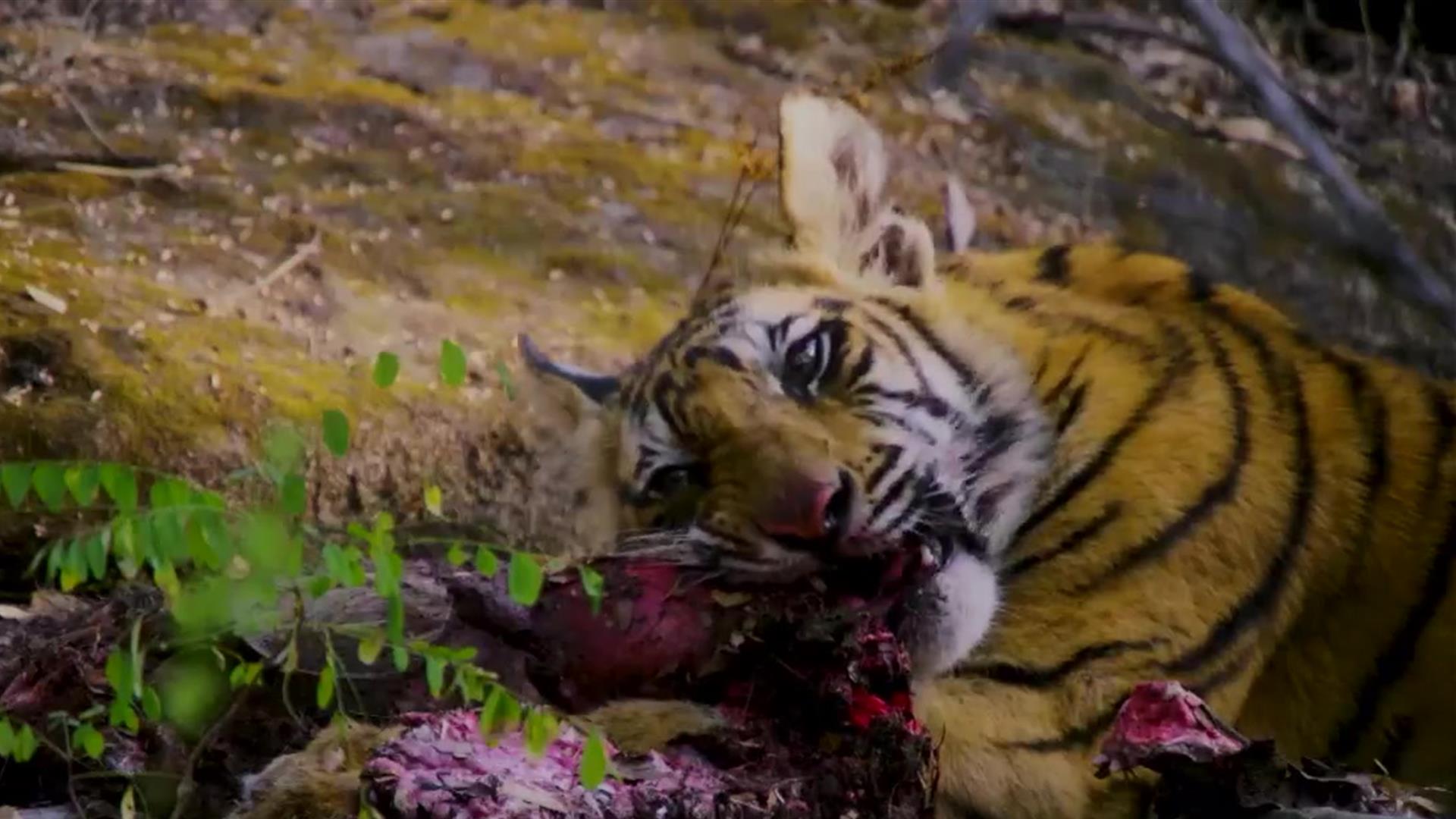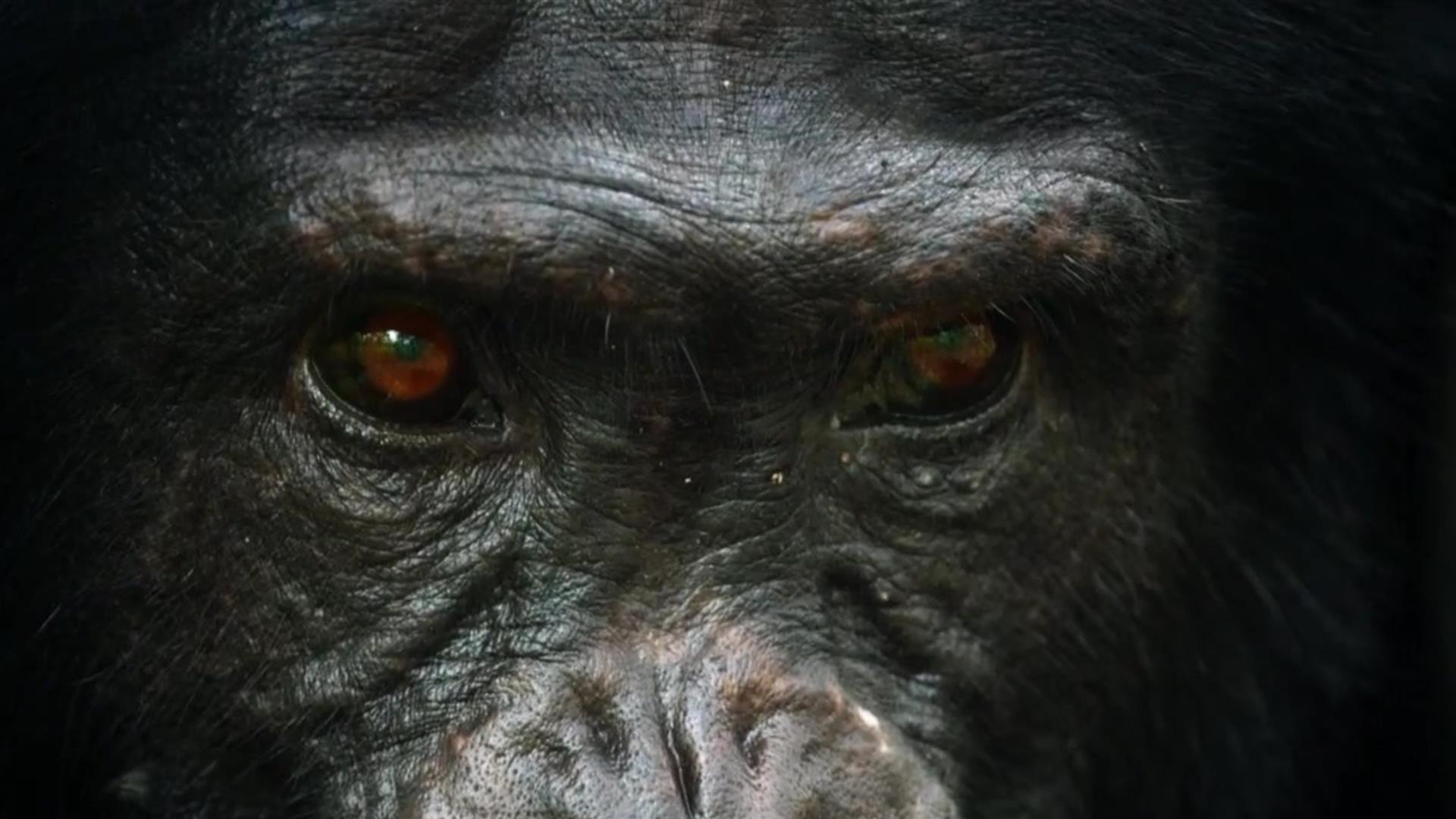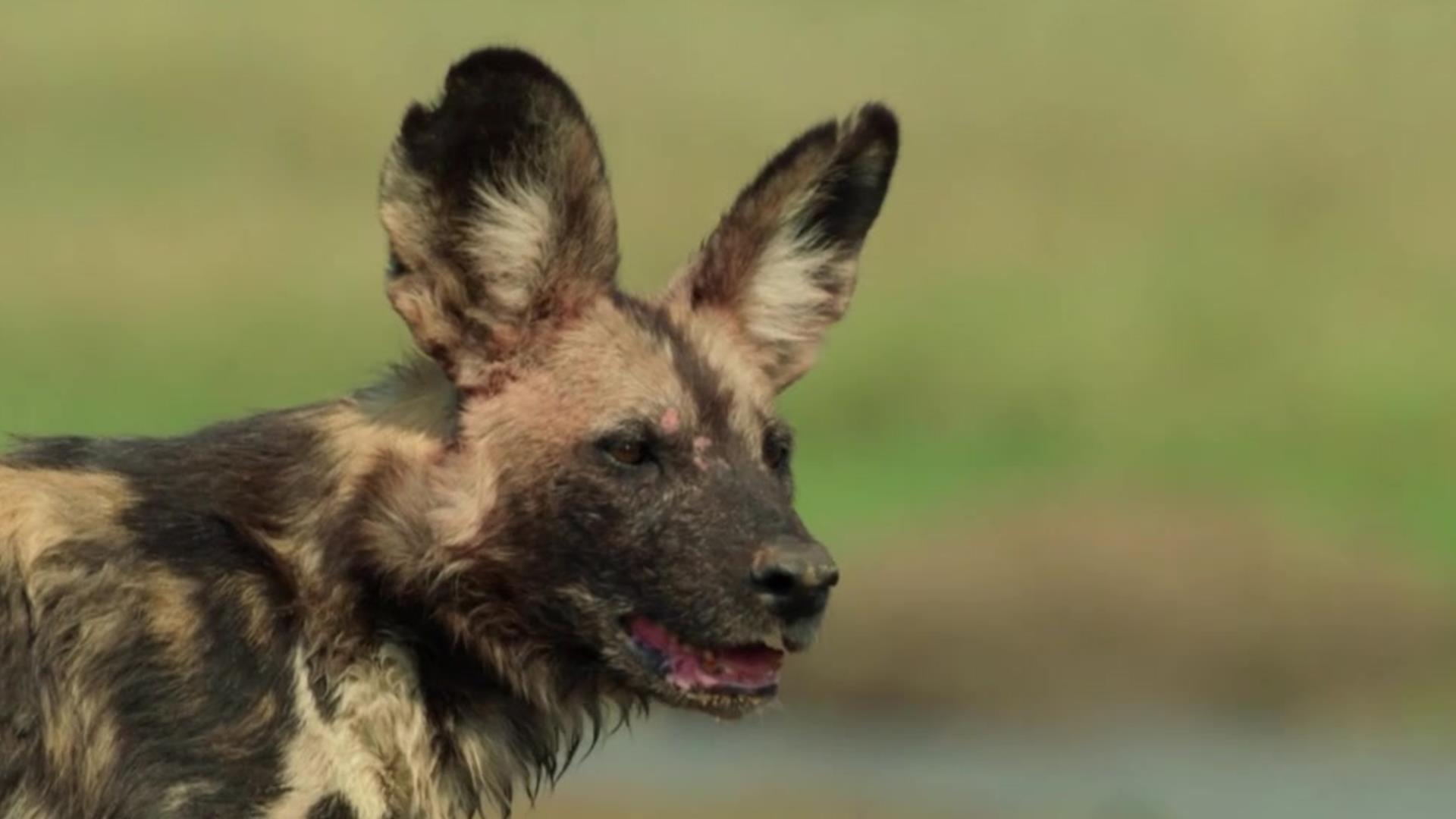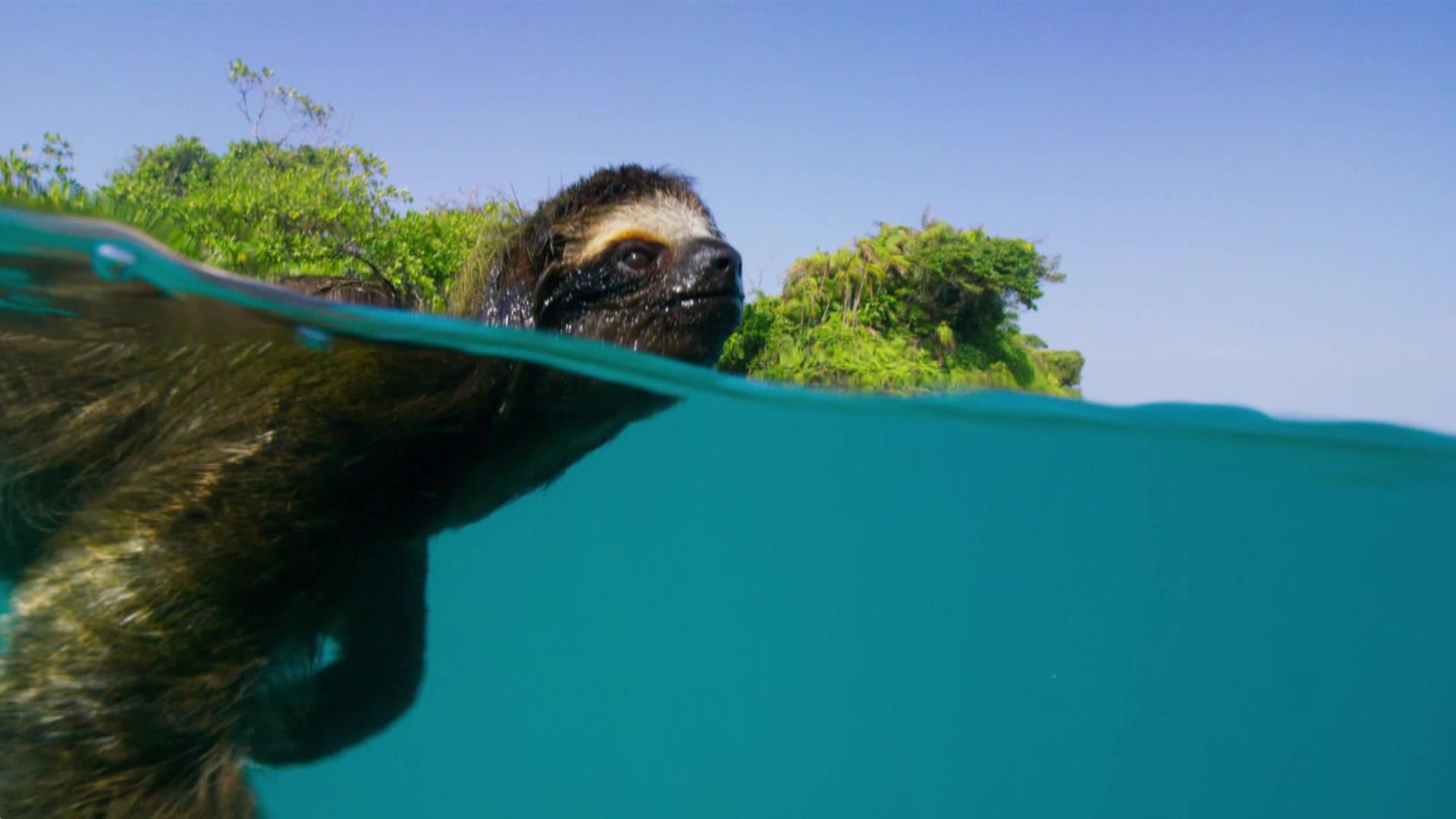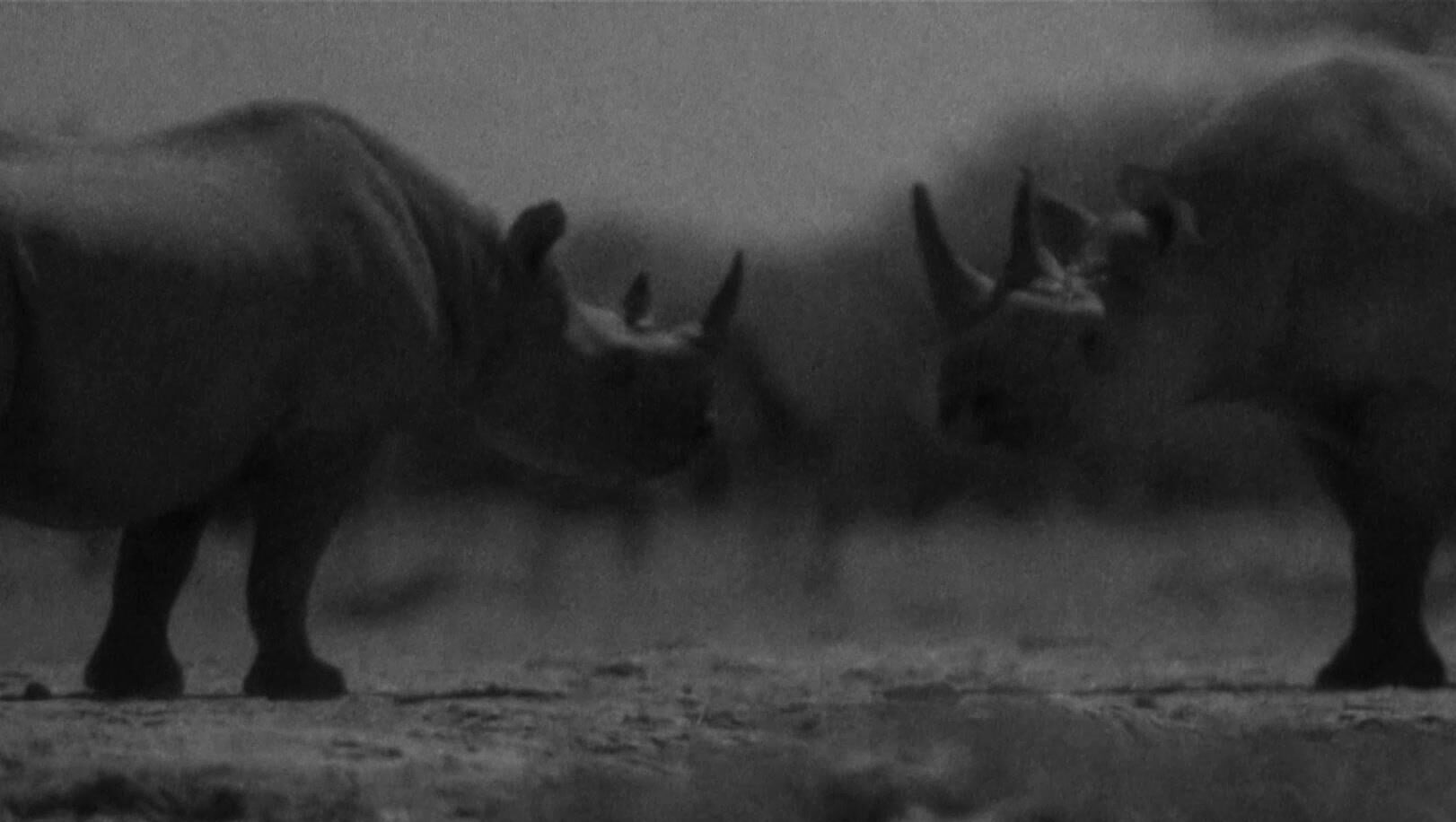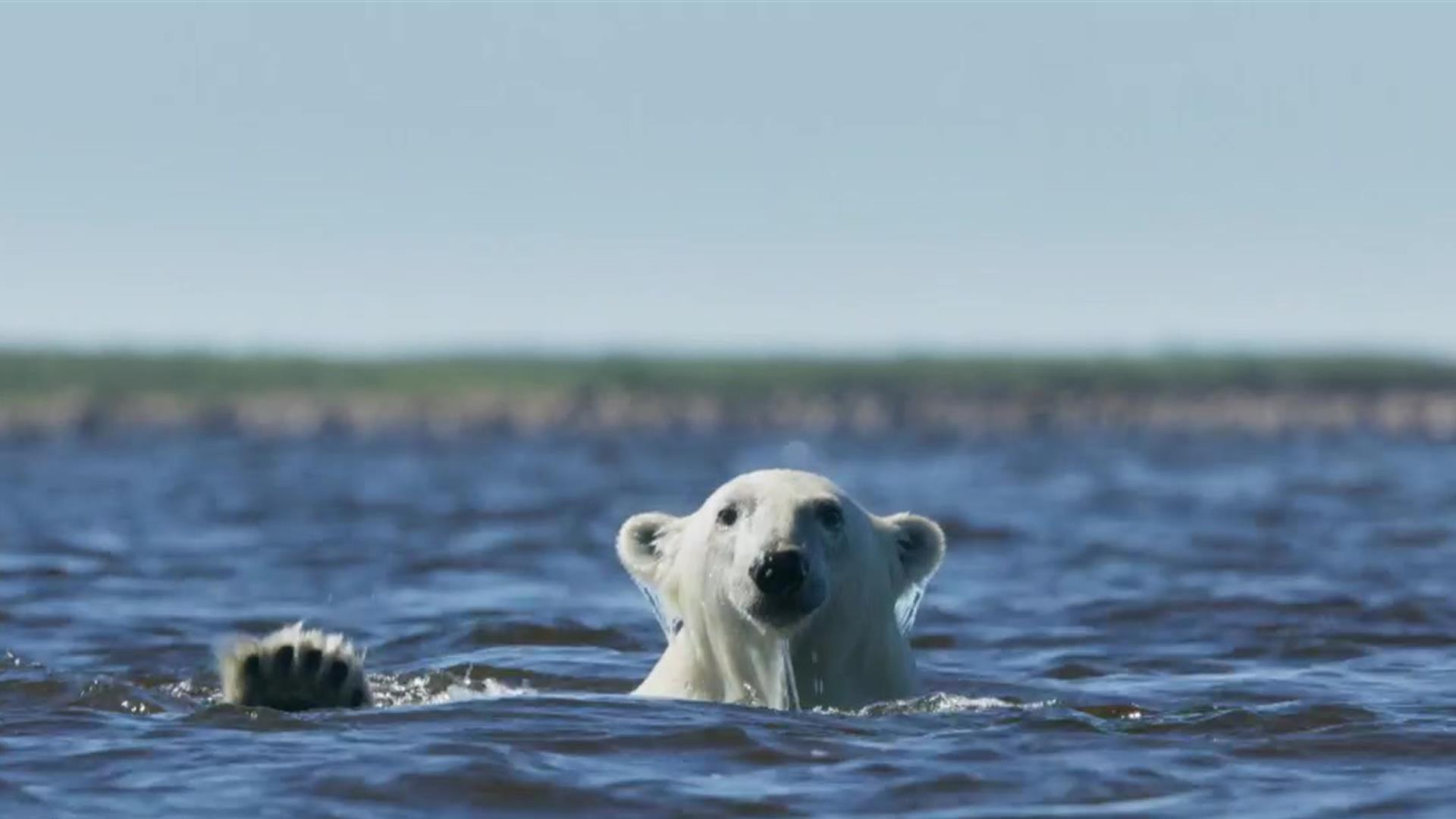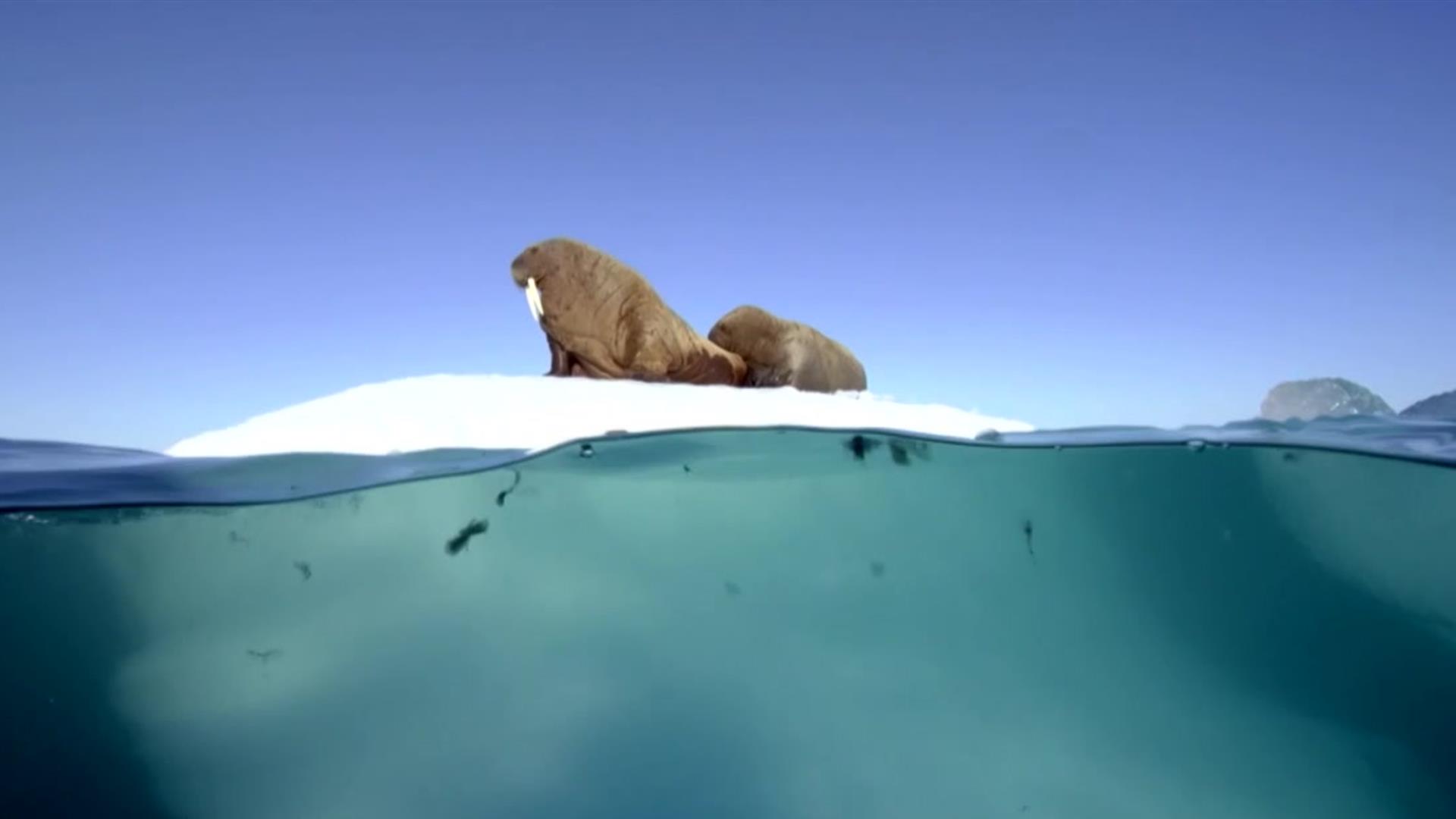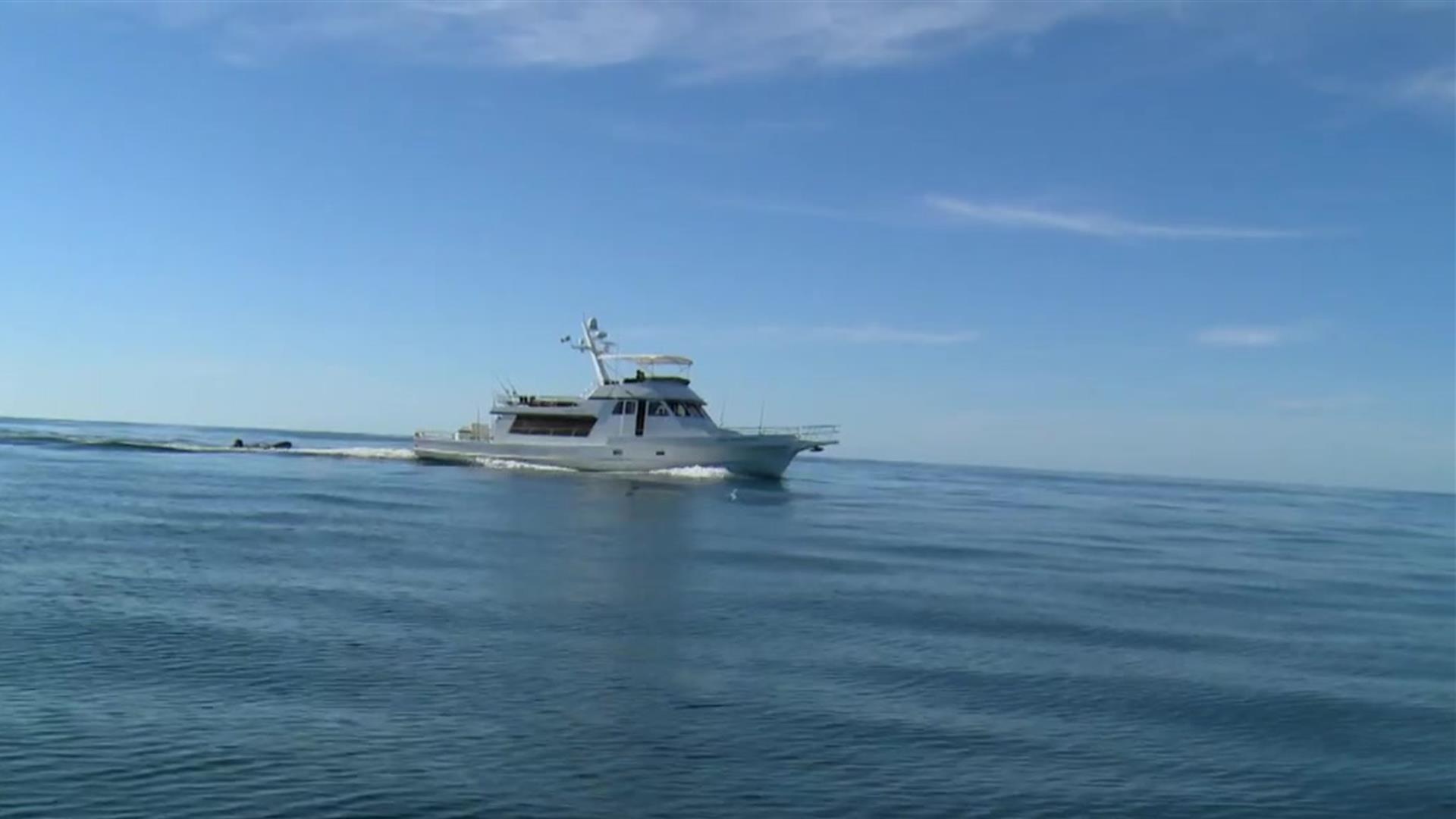Up Next
Flamingo Chicks Escape Frozen Patagonia Lake
Young flamingo fledglings use the help of a seasonal wind to break their shackles of ice.
Ostrich Romance
An alpha male woos some lusty females with a show-stopping performance.
Brilliant Hornbills Hunt for Bats
Using their binocular vision and precision beaks, hornbills successfully catch bats for dinner — for the first time ever caught on camera!
Californian Burrowing Owls Fall in Love
These adorable owls enjoy seasonal beetle delights and settle in for the breeding season.
Gorgeous Owl on the Hunt
A hungry owl and a clever vole engage in a snowy game of cat and mouse.
Shoebill Sibling Rivalry
Nature can be harsh, and in this case there can only be one shoebill chick.
Inside a Crown Eagle Nest
This mother bird’s risk paid off — she’s the only resident eagle in this entire forest!
Carmine Bee-Eater Cliffside Feast
These African birds treat themselves to a bee hive feast on the side of a cliff.
Calliope Hummingbirds in Yellowstone
One of Yellowstone’s smallest migrating birds fights to defend his flower patch.
Sandhill Crane Flight Path
Sandhill crane families face a storm on the way to Mexico.
Earth’s Largest Bald Eagle Gathering
She isn’t much to look at, but this Bald Eagle’s got attitude for days.
Snow Owl Family Meal
There’s food in the tundra, if you know where to look.
The Most Dangerous Bird on Earth
The Southern cassowary is the closest animal we have to a living dinosaur.
Underwater Drama
Each animal plays their part in the annual spectacle of the South African Sardine Run.
Spatula Tailed Hummingbird
A highly endangered hummingbird with an extraordinary courtship ritual.
Fascinating Harpy Eagle Facts
This muscular hunter can lift prey over half its own body weight.
Competitive Widowbird Mating Jumps
This young male widowbird figures out how to (literally) raise his game.
The Sounds of Hummingbirds
Experience the unique sound of wings flapping 15 times per second.
Peregrine Falcon Chicks’ First Flight
The ‘Planet Earth II’ camera crew releases peregrine falcon chicks into the skies of New York City.
Slow Motion Puffin Theft
See how ‘Blue Planet II’ cameramen used special slow-motion cameras to capture high-speed, bird-on-bird theft!
Genius Giant Trevally
No bird is safe from these giant trevally, who’ve learned how to calculate the trajectory of their prey in flight.
Leopard vs. Antelope vs. Hyena
Watch the surprising twist ending when an opportunistic hyena interrupts a leopard and her prey.
Seals and Jackals on the Skeleton Coast
The ‘Eden: Untamed Planet’ crew faced extremely hostile conditions to film wildlife on the remote coast of Namibia.
Eagle Alert in Meerkat Manor
Baby meerkats make for easy eagle pickings. Can this young one’s family find him in time?
Turtle Hatchling Reaches the Deep Blue Sea
Only one hatchling in 1,000 will survive to adulthood, but the ones that do can live over 80 years.
Film Crew Barely Escape Elephant Seal Fight
After facing the roughest seas in the world, the ‘Seven World, One Planet’ Antarctica crew found themselves in the middle of an elephant seal duel!
Penguin Chick Survival Skills
Within their first year of life, penguin chicks face many extraordinary hardships in the arctic.
Bull Elk Antler Duel
What happens when two powerful bulls are evenly matched?
Venus Flytrap Attack
Watch how this deadly plant trap its prey.
Japanese Mud Skippers
These amphibious fish fight and mate on land.
Humpback Whale Heat Run
Male humpback whales compete with each other while racing after a female.
Sardine Feeding Frenzy
You better look out below…. and above!
Polar Bear Cliff Walk
Brave? Yes. Insanely risky? Also yes.
Lions vs. Buffalo
Each battle has a different ending.
Baby Iguana vs. Snakes
Can this marine iguana hatchling outrun dozens of hungry snakes on the beach?
Behind the Scenes with Komodo Dragons
Would you have the guts to get up close and personal with these dangerous predators?
Fishing in the World’s Mightiest Rapids
One wrong move and this fisherman could fall into the Mekong River currents.
Mama Lion Protects Her Cubs
One lion faces off with an entire herd of buffalo to keep her little ones safe.
Incoming: Grizzly Bear!
Better safe than sorry! The ‘Planet Earth II’ crew relied on multiple bear saftey precautions during filming.
Stories of Life, Death, and Power
Dynasties’ Producer Mike Gunton takes us behind the scenes of nature’s most dramatic stories.
Cutthroat Eel Escape
Can this eel escape a toxic brine pool death trap at the bottom of the sea?
Sea Lions & Pelicans Hunt Side-by-Side
This remarkable sea lion hunting technique is unique to the Galapagos — and hungry pelicans get to reap the benefits, too!
Nectar Craze: Hummingbirds vs. Bees
Hummingbirds must consume half their weight in nectar each day — plus compete with hungry bees!
Athletic Caracal Hunts in the Grasslands
It’s sunset in the Kalahri — will this hungry Caracal get her supper?
Lizard and Hawk Play Hide-and-Seek
A hungry hawk chases a crafty lizard through cacti in the desert. Will it end in a successful hunt or a great escape?
Swallows Navigate Poison Oasis
After traveling thousands of miles, swallows quench their thirst in the heart of the Sahara.
Drama at the Watering Hole
Baby ostriches dodge elephants, giraffes, zebras, and brawling lions while trying to quench their thirst.
Chinstrap Penguins Raise Twin Chicks
These penguins gather on Deception Island, an active volcano, to breed.
Albatross Chick Reclaims Nest
When violent storms displace chicks from their nests, they must fight to climb back up to the warmth of their parents.
Gosling Chicks and Fox Cubs
An arctic fox must hunt tirelessly to feed her seven pups.
Capercaillie Gladiators
These competing suitors only get one shot to impress a female.
Baby Ducklings Take the Leap
From fifty-feet up in a tree, mandarin ducklings take their first flights!
Bats Form a Donut Ring
In order to confuse birds of prey, these bats have got to get in formation.
Nursery Season in Yellowstone
All the baby animals have come out to play.
The Predator You Never See Coming
Of all the hungry hunters, these are the ones that salmon can never see coming.
Sea Predators and Prey
Underwater predators are joined by dive-bombing birds to hunt for prey.
Seabird Chicks Take Flght
These 20-day-old chicks must face the first challenge of their lives.
Golden Eagles Cruise the Alps
These aerial predators must spend every daylight hour scanning the slopes for prey.
Cameraman Spends 10 Days in a Tree
This ‘Planet Earth II’ cameraman describes what it was like to camp out in the canopy.
A Lurking Lothario in Meerkat Manor
“Randy Shandy” has a flirtatious reputation, and his rival males are having none of it.
Giraffe Rival Challenge
This Kalahari territory isn’t big enough for the both of them.
Zebra Stallion Dominance
A Grévys zebra proves his worth to a mate.
How Habitats Shape Predators
Why are cheetahs so fast? Why do tigers have stripes? Habitats force animals to adapt, and the results are fascinating.
Wild Hamsters Roam Cemetery
Graveside flowers are worth fighting for.
Seals vs. Penguins
These two make for surprisingly well-matched rivals.
Tibetan Fox and Pika Nemeses
Why the square face? Well, you’ll see.
Siamang Gibbons Send a Message
It starts with a duet and ends with a frenzied chorus. The message is clear: stay away from our territory!
Chokka Squid Capsules
In temperate seas, there are even more squid than fish.
Red Deer Antler Match
The rules are simple: winner takes all.
Monkey Rulers of the Rubbish
He who rules the rubbish bin may rule the troop.
Wild Dogs vs. Otters
The wild dogs of Northern Singapore are no match for this close-knit otter family.
Leopard vs. Porcupine
Desperate times call for desperate measures.
Giant Bullfrog Combat
Male giant bullfrogs, which can weigh more than two pounds, battle it out during mating season.
A Chameleon’s Life in the Trees
Don’t climb another panther chameleon’s tree unless you’re looking for trouble!
Mama Grizzly: High Risk, High Reward
Fortune favors the brave bears.
Daring Monkey River Crossing
Hungry monkeys make a daring leap of faith across a crocodile infested river.
Incredible Tarsier Hunting Skills
With night vision 20x stronger than humans, these tiny primates are some of the jungle’s most impressive predators.
Monitor Lizard Chases Sengi
For its size, the sengi is faster than the cheetah. Can this crafty mother escape a hungry monitor lizard?
Mama Turtle Completes Epic Journey
A female turtle spends five long years returning to her birth site to lay hundreds of eggs of her own.
The Naked Mole Rat Princess
This youngster has an important destiny to fulfill on the dangerous surface.
Kalahari Leopard on the Hunt
The nearer he gets to his skittish prey, the quieter he must be.
Baby Turtle Beach Sprint
The last hatchling on the beach dodges predators from above and below on her way to the safety of the sea.
Femme Fatale Firefly Sets Trap
Watch a opportunistic Photuris firely set a trap behind a spider’s web.
Filming a Successful Puma Hunt
The ‘Seven Worlds, One Planet’ crew tracked this fearless puma mother for a hundred miles to film her life and death struggle to provide for her cubs.
Amur Leopard: The Rarest Cat on Earth
One of only 40 Amur leopards left in the wild, a mother works hard to get her young cub through the winter.
Vampire Squid from Hell
The weirdest deep sea creature in the world of the strange.
Wild Bactrian Camels
Few animals can survive in the harshest desert in the world, but these rare Bactrian camels manage just fine.
Insects Spraying for Protection
These insects pack potent chemical weapons to protect against predators.
Crab vs. Eel… and Octopus!
A crab must run the gauntlet to reach its far away feeding grounds.
Octopus in a Shell Suit
Watch the first-ever footage of an octopus using shell armor to hide from a shark!
The Coldest Winter on Earth
How do emperor penguins survive the cruelest winters on earth?
Baby Penguin Huddle
When chicks are left home alone in negative 40 degree weather, huddling is their only hope.
Orca Secret Weapon
A gathering of orca whales use fascinating teamwork to hunt herring.
Portuguese Man o’ War Sailing
One touch from this beautiful but deadly creature is enough to paralyze.
Spider Crab Molting
Around the first full moon of winter, hundreds of thousands of spider crabs gather to shed their shells.
What’s Beneath the Boiling Sea?
Dolphins, sailfish, and rays all get in on the lanternfish hunting action.
Wildlife Film Crew Encounter Poachers
While tracking gorillas in the Congo, a ‘Seven Worlds, One Planet’ camera crew were forced to abandon their shoot and flee through the jungle in the middle of the night.
Can Science Save the Northern White Rhino?
After roaming the earth for millions of years, the Northern white rhino population is down to two.
Sir David Attenborough’s Search for Orangutan
The naturalist recounts the changes he’s witnessed to Borneo’s tropical forests — home to the endangered orangutan.
One Million-Year-Old Rock Carvings
Australia holds the largest concentration of prehistoric images in the world — including those of an ancient Tasmanian devil and the extinct Thylacine wolf.
Polar Bear Swims in the Open Sea
As their ice world disappears, polar bears have been known to swim up to 60 miles offshore in search of food.
Deep-Sea Coral Reefs
Coral has been found all the way down at 6,000 meters deep, but these reefs are incredibly vulnerable.
Sharing Our World With Dolphins
Meet the group who’ve been helping dolphins suffering from plastic since the 1980’s.
How the Seas Are Changing
Over four years of filming, the ‘Blue Planet II’ crew witnessed key changes in the world’s oceans.
